#there are so many moon characters just people whose symbols and themes are all connected to the moon
Text
zhongli thoughts im bored
i am obsessed with the imagery of him holding a golden fan just below his eyes and gazing over the city
highly proficient in all makeup, cosmetics and accessories, you need to dress up nicely for a fancy occasion he can have you looking like a goddess just give him some time
he sits in the sun a lot, when he had the exuvia he would sit on the tallest mountains and sleep in the sun
Unlike the other archons zhongli is closely attached to the sun, he is like the sun in many ways, he guides people, brightens their lives, plants and life thrive under his care
However the sun is still deadly, those who get too close to him burn up in his presence and those who keep their distance are trapped in the shadow he casts and lose themselves, like the sun in the sky he is meant to shine brightly all by himself
i am obsessed with the imagery of zhongli sitting in a bathtub and all of his draconic features just come out one by one, first his arms turn gold and then come his claws. Next comes the horns on the top of his head as his hair grows longer and longer. Last is the tail which flops over the edge of the tub
He can't sing but he has some talent with instruments, a habit he picked up from being around quizhong, ping and venti for so long, he can work with string instruments best
He will pat your head, he can't help it, if hu tao has her hat off and she makes him smile that hand will be on her head
crazy thought of the liyue gang playing hide and seek, like xiangling, xingqiu, yunjin, xinyan, hutao and chongyun playing this huge game and they run all over the city it becomes a huge affair at one point xiangling is "it" and she can't find anyone but she comes across zhongli sitting in his favorite spot at third round knockout and she's like "sorry to disturb you but have you seen hu tao" and he smiles and is like "well i don't know about the director but i saw a blue haired exorcist up at the terrace he might be around the glaze lilies" and xiangling thanks him and goes to chase chongyun down, zhongli whispers behind him "she's gone" and then 4 of them, xingqiu, yunjin, xinyan and hutao just poke out from behind him (they want to keep hiding behind him but with a smile he shoos them away to play the game properly)
zhongli is painfully popular you can take the man out of the archon but you can't take the archon out of the man
zhongli likes to keep the moon by his side specifically the people who are like the moon; guizhong, venti, xiao, azhdaha, rukkha, ganyu the list goes on and on -perhaps they are naturally drawn together its unclear who gravitates to who but even liyue itself is a beautiful moon he can cling to
zhongli can petrify things with his hands, just lightly brushing his fingertips over anything will encase it in stone and with a short breath it will crumble to dust
mr. workaholic the reason why we never see him at work and always on vacation is because he goes crazy and completes all the paperwork and it scares hutao so she kicks him out (but then he spends all his money so he has to come back the cycle never ends)
as a consultant zhongli takes on many jobs if they hire him from wangsheng he’s quite expensive though ganyu tries her best to direct the qixing away from him but some things are unavoidable and they require his assistance
#zhongli#genshin impact#zhongli headcanons#the liyue hide and seek has been in my mind for like two weeks lol#since he was alive at the time i like to believe he knew one of the moon sisters#maybe that is where this moon affection originated!#give me 3 minutes there is too much sun and moon symbology going on listen listen listen why is zhongli the only one associated with the su#why is everyone close to him associated with the moon even liyue is named after the moon listen listen i think its neat i think its great#hes like batman the moons are his robins and he keeps losing them like they just die and shit#we have lost quite a few moons mister zhongli like i'll knock on wood but i have this terrible feeling you will outlive the other moons too#there are so many moon characters just people whose symbols and themes are all connected to the moon#i have seen the theories to some extent but i can't discuss it#i can only be so delusional#sometimes i wonder if im talking to myself#i mean like that’s okay the void can be welcoming i suppose
58 notes
·
View notes
Text
Elriel Hint and Analysis - includes analysis of Feysand & Nessian (ACOSF Spoilers)
I’m pretty new to the fandom, but I am currently obsessed with Elriel. This is my ship and I will go down with it until the day I die. As a fairly casual reader, I honestly had zero doubts the next book would be Elain’s and that the couple would be Elriel.
Then I discovered the existence of the extra POV chapters and Azriel’s threw me in for a bit of a loop. Especially with the ending (which I genuinely believe is a red herring. I lean very heavily into the lightsinger Gwyn theory).
However, stalking Tumblr made me come across this again:
Life and death and rebirth
Sun and moon and dark
Rot and bloom and bones
Hello, sweet thing. Hello, lady of night, princess of decay. Hello, fanged beast and trembling fawn.
Love me, touch me, sing me.
And then my brain accidentally vomited an essay on the symbolism in each sister’s journey...
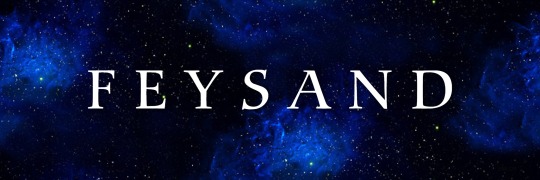
Life and death and rebirth so clearly symbolise Feysand’s journey. Feyre leaves behind her life of poverty for a brand new one with Tamlin. She journeys Under the Mountain for love of him and ultimately succeeds in saving not just him, but all of them. In the process, she dies. Not just in the physical sense, but spiritually too. Feyre the human perishes, giving rise to Feyre the High Fae. In a purely physical sense, this is definitely a rebirth. But it’s stilted, incomplete. She’s the newly born phoenix - young, fragile and yet covered in the ashes of its fiery death. Her spiritual rebirth lags behind her newly changed body. Like a bird in a cage, she is trapped in Tamlin’s realm, unable to finish developing, to spread wings and fly.
That all changes when she is whisked away to the Night Court. She learns to read and some of the ash falls from her body. She makes friends and some more ash is brushed away by the Inner Circle. The final remnants of ash are blown away by the taste of freedom and the kiss of wind, and Feyre’s rebirth is finally complete. Spiritually and physically, she is changed. She becomes Feyre the High Lady. From life back to life, she is returned through the power of love. Take note that while love is important in all the sisters’ journeys, it is the focal point and highlight of Feyre’s. She is someone who has never been loved in that wholesome, selfless way Rhysand loves her. Tamlin was possessive and abusive; Nesta was barbed and sharp. Elain was fragile and ethereal. Love was something she had never really known and consequently something she desperately, desperately needed. That’s why the phrase that symbolises her is love me.
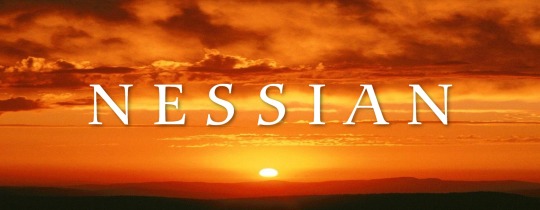
Sun and moon and dark refers very much to Nessian. Nesta is the sun and she is burning. Has been burning for a long, long time. She is aflame, nothing but ashes inside, and her words are fire. She scalds anyone who dares approach, just as everything melts before the sun. Like Feyre, she has had her physical rebirth, but not her spiritual one. She is trapped in her own head, locked behind her own self-hatred, her own raging inferno that yields to no one. Like Feyre, she is also a phoenix, but one whose fire never stopped. In that sense, she has never died. Her spiritual rebirth is not simply incomplete; it has never happened.
Until she starts training with Cassian. Until she starts befriending Emerie and Gwyn. This is what marks the death of Nesta the human and the emergence of Nesta the High Fae. (I use the term ‘human’ loosely here, mostly as a way of conveying my point about her spiritual journey rather than the state of her physical being). She loses her solar flare, that inner blaze that was killing her and blackening her soul. She mellows from unapproachable sun to a softer moon. It’s here that she stays a while, seeming to progress and regress in her healing journey as the moon waxes and wanes. It’s not until the hiking scene that she finally breaks. She weeps despite Cassian’s expectations to the contrary. Through her tears, she finally extinguishes the long-raging fire and hatred that has been destroying her. No more blazing sun, no more wavering moon. Only darkness to cradle her, and acceptance. Through Cassian’s ceaseless efforts and her friends, her journey reaches its apex. She finally becomes Nesta the Valkyrie.
Her journey hinges heavily upon the fact that nobody could reach her through the flames. Nobody had kept trying after getting burned again and again. Nobody except Cassian. He reaches out, time after time, even when she hurts him. Even when she burns him. Until he succeeds and touches her soul. That’s why the phrase that symbolises her is touch me.
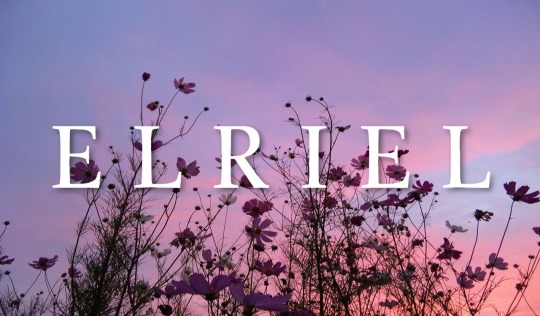
Of course that leaves only the last line: rot and bloom and bones. I wonder who this could symbolise! Surely not the Archeron sister who is associated with roses and has a complicated romance dilemma with someone from the Autumn Court (rot) and someone else from the Night Court (bones)! Surely not!
Jokes aside, I strongly believe this line reveals Elain’s journey. If we continue thinking of the words as a progression, I think it makes a lot of sense. Keeping in mind the theme of life, death and rebirth, this is how I think of it:
Life / Rot / stagnation, the start of the journey
Death / Bloom / change, the start of healing
Rebirth / Bones / ascendance and acceptance, the start of the future
There are several interesting things to note about the sentence:
The word bloom is nestled among rot and bones
Elain’s two potential love interests both have strong associations with those words
I’ll address each point as we delve into Elain’s analysis.
Let’s start with Elain the human. As previously established, this is when the character is at their worst, blind in the dark before the dawn. I see this as Elain’s forced transformation by the Cauldron. Everything she knows is ripped away from her and her marriage crumbled to dust. She is thrust into a world both unknown and at war. She emerges changed and cursed with powers she cannot control and does not understand. Her life, once a slow-blooming flower, has just rotted into nothing. She is lost, confused and deeply depressed. Her physical rebirth may be complete, but her spiritual rebirth cannot begin until she gathers the shattered pieces of herself back together.
This happens slowly. So slowly, in fact, that it’s hard to notice and easy to dismiss. She befriends Nuala and Cerridwen. Begins gardening again. Talks to the Inner Circle and buys them gifts for Solstice. Slowly, so very slowly, she is starting to piece herself back together. Off-page, she quietly unravels Elain the human and emerges from her cocoon as Elain the High Fae. Like a wilted flower that has dropped its petals, a new season has come, bringing with it new buds. She is blooming, opening herself to new possibilities for companionship, love and for a new self to rise to the surface. But blooms are fragile, newly born things. Elain hasn’t dealt with the full force of her trauma, of her lifelong lack of choice (I’m not going to delve into this as there are so many amazing analyses out there!). She is a trembling fawn, still trying to learn how to walk.
But her spiritual rebirth will remake her. Bones. It’s so different from the previous two words that it really leaves an impact. Blooms rot and fade. Flesh breaks and dies. But bones are strong, the frame that holds up our entire beings. Bones are unyielding and solid, taking no other shape like blood nor bruising like flesh. I see this as Elain standing up for herself, unswayed by external forces that have always governed her life and breaking away from the fragile flower people have always thought she was. By cutting away the rotting flesh, she will reveal the backbone beneath and ascend as Elain the Kingslayer/Seer.
Of course, closely tied to each sister’s personal growth arc is her love interest. For me, I don’t see it going any other way than Azriel.
SJM chose rot not only to represent the ‘life’ section of Elain’s personal journey, but also to represent Lucien. He has connections to the Autumn Court, a season that is often associated with decay and rot, but also with harvest and bounty. Highlighting the negative aspects of autumn invokes a strong sense of wrongness. Lucien is not right for her. Not to say anything bad about his character; he’s just not right for Elain. His presence in the books eats away at her newfound boldness; he rots away the path she is trying to carve for herself.
On the other hand, Azriel is closely tied with death, with blood and bones and shadow. He’s not only Rhys’ spymaster, he’s also his torturer. His association is with bones, a word that invokes a sense of everlasting, of persevering beyond death. Bones is also used to describe the ‘rebirth’ section of Elain’s personal growth arc, the final aspect that leads to ascendance, and acceptance of one’s past and present. Meanwhile, bloom represents Elain herself and the ‘death’ portion of her story, the aspect that heralds change and healing.
Rot, bloom and bones represent both her personal journey and her love interests. It’s all intrinsically linked. Lucien is ‘life’ and stagnation, Elain is ‘death’ and change, and Azriel is ‘rebirth’ and acceptance. As a progression, this is how I interpret the sentence:
By rejecting the bond with Lucien, she is stepping into herself and forging something everlasting with Azriel.
Lastly, let’s not forget that the phrase symbolising her is sing me. This didn’t make much sense to me until I read Azriel’s bonus POV. In it, he confesses to Gwyn that he does sing. Why include this if it’s not a subtle callback to this prophetic paragraph in ACOMAF? It feels like a treat to hardcore fans who like finding all the little connections (since they’re the ones most likely to have read the bonus chapters). The fact that Gwyn also sings signals to me there’s an important plot point regarding song. Maybe homegirl Elain will be forced to throw a hardcore metal concert to save Az XD Wouldn’t that be a plot twist HAHAHA.
I don’t know when SJM started planting seeds for Elriel in any serious capacity, so perhaps I am reading WAY too much into this. Either way, I am super keen for the next book!
Please feel free to comment and let me know your thoughts! I am desperate for Elriel right now hahaha. Thanks for reading!
OH, BUT ONE MORE THING.
The greetings are really interesting. Sweet thing obviously refers to Feyre. Lady of night and princess of decay are clearly meant for Nesta.
Fanged beast and trembling fawn are left for Elain. It’s easy to write this off as being about her LI and herself, respectively, but I don’t know. The sentences build upon each other. A single moniker grows to two - the first separated by a comma, the second expanding to use an and. It’s something you see a lot in poetry, generally used to emphasise a point. I’m not entirely sure what the point is; it might just be a nice writing flourish, but wouldn’t it be interesting if both those statements were referring to Elain herself? Wouldn’t it just be juicy?
#elriel#pro elriel#elain archeron#azriel#elain#nessian#nesta archeron#cassian#nesta#feysand#feyre archeron#rhysand#feyre#a court of thorns and roses#acotar#a court of mist and fury#acomaf#a court of wings and ruin#acowar#a court of frost and starlight#acofas#a court of silver flames#acosf#i will go down with this ship#pls make elriel happen#or you mark my words#i'll.... cry
218 notes
·
View notes
Text
Demon With No Name
An analysis on Upper Moon Two: Douma
Demon Slayer: Kimetsu no Yaiba spoilers!!
Hello! ❤ I wanted to discuss the significance on Douma’s real name never being revealed to us in the KNY story.
I'd love it if you guys could share your thoughts on this with me please!
Before I start:
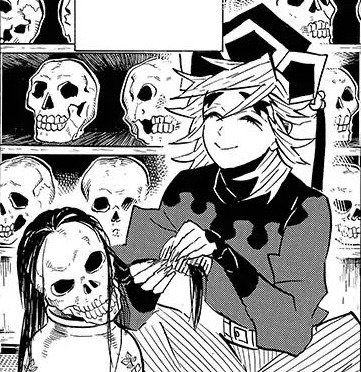
Disclaimer: I do not speak Japanese at all, I’m basing all quotes off of the first manga site i could find. Translations may vary depending on the source. Also I may not be aware of alternate meanings of words that may have been lost in translation for the most important quotes! So please forgive me if I misinterpret something!!
A lot of the demons in KNY’s story are either nameless, or go by an alias that isn’t their real name. Examples of the former include most minor demons, such as the Temple Demon, Swamp Demon, Older brother/sister, Mother, and Father Spider demons, etc. Examples of the latter are mostly are more relevant Upper moon demons-- Daki, Akaza, and Kokushibou, whose real names are Ume, Hakuji, and Michikatsu respectively. The other upper moons, Nakime, Gyokko, and Hantengu, however, don’t have their human names revealed, along with Douma. However, these 3, did not hold as much story significance as Douma.
Then in addition to that, there are some demons who go by their human names still, such as Rui and Kaigaku. I assume it is because they are young enough relative to other demons age that they haven’t forgotten it (or maybe they just like their human names lol).
(I don’t know if Gyutaro’s name is his actual name or a fake name and, if it is a fake name, I don’t remember if his real name is actually given, which is weird because his sister’s was. But that’s a topic for another day.)
However, Douma, who holds the rank of Upper Moon 2, is one of the most relevant demons in the story, yet his real name is never disclosed. Even in the Kimetsu Acadmeny chapter extras, is stated that his AU version’s real name is unknown.
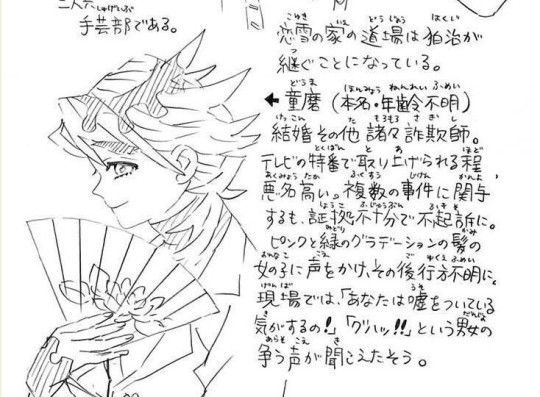
So, why is that? Douma even said so himself that he has great memory. He remembered many details of his life but he failed to ever disclose to us his name. Was that one thing he did forget? Was it not important to him? Did he simply not have a real name before becoming a demon? (Maybe his parents thought he was above having a normal human name?) And most importantly, was this intentionally done by Kyoharu Gotouge?
Before I continue, first we should know the meaning behind Douma’s name. His name is officially 童磨. According to the Kimetsu no Yaiba wiki, 童 ( dō ) means “child,” and 磨 (ma) which can mean “polishe,” “grind,” or “improve.” (Someone also said it can mean magic but I don’t have the source im sorry :( ) Based on these, Douma’s name has a meaning somewhere along the lines of “magical child” or “polished child.” This is most likely to reference how his parents thought he had divine powers at his birth.
For most people, your name is one of the most significant aspect of one’s identity. It’s the first bit of information you to give to anybody upon introduction. However, Douma’s unknown name is a demonstration of his own lack of personal identity.
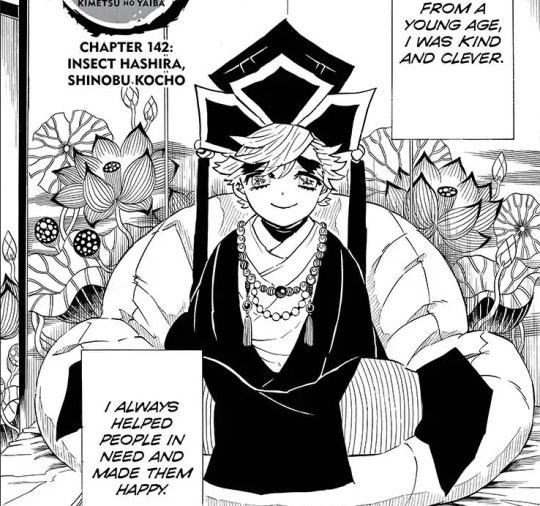
If we take a look back at Douma’s childhood, he’s been put on as the figurehead of the Eternal Paradise cult from the day he could even sit up. His entire life he was put on a pedestal for an identity he did not make for himself, but one manufactured and forced onto him by his parents. In chapter 142, Douma admits that he can’t speak to the Gods or have any spiritual connections that his parents believe he has. In fact, he doesn’t even believe in any of it. If that’s the case, why does he seem so fixated on the idea of bringing his troubled followers to “paradise” as his sole reason for being born?
Earlier I mentioned that one large aspect of identity is our name. However, another important aspect in defining our identity is the personal relationships we have around us. Who we value and surround ourselves will shape our own individual perceptions of ourselves. However, Douma, who has admitted to having limited capability in feeling emotions, is unable to form meaningful bonds with people around him. Demon Slayer: Kimetsu no Yaiba is story where most, if not all, the main themes revolve around love, family, and friendship being the main motivators to drive characters in the pursuit of goals. However, here we have a character who serves as a direct antithesis to of all these themes. He has nobody he loves and nobody who loves him.
In chapter 157, Kanao calls out Douma in their fight, telling him she can see through the fake persona he puts on. She then proceeds to question him: “Why were you even born?” (damn....) Douma gave clearly visible cues that he was not pleased with what she had to say. The important observation to take from this scene is Douma’s reaction. The man who was just revealed to not feel any emotions, who is usually unbothered by harsh words thrown at him from demon slayers and other members of the upper moons alike, showed an emotional response to the cutting words of a child questioning his existence.
Based on this reaction, I think there is reason to believe Douma has an innate dissatisfaction with his own identity, or moreso his lack of identity. From his childhood, he’s been more than aware of how he cannot feel emotions the same as others. Even in his dying thoughts in chapter 163, he thinks back on how he was “always been this way.” He thinks about how human emotions to him were nothing more than “mere dreams.”
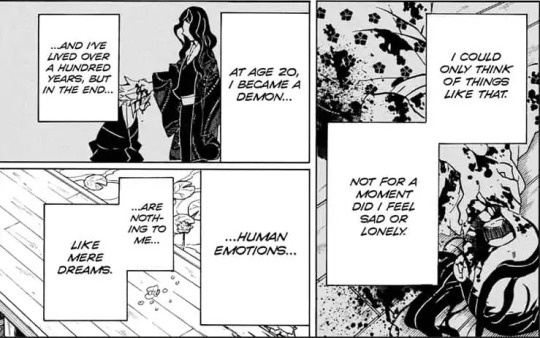
I think should we take a close look at the word choice used here. He could have simply said something along the lines of “I’ve never felt emotions;” however Gotouge specifically phrased it as a metaphor comparing it to dreams. This word choice conveys a sense of longing associated with the idea of being able to experience emotion. This suggests that there is a chance he did wish for a better understanding of emotions. After all, like Kanao said, what’s the point of living if one can’t truly indulge in all of life’s pleasures associated with the emotional bonds we build with one another?
However, what does all this of this have to do with Douma not having a name? Douma not having a name is symbolic of his entire character. He is a man with no true identity of his own. He was unable to maintain any close, meaningful, interpersonal relationships with anyone around him in the hundreds of years he lived. He lived every day with a false persona knowing deep down inside of him knowing he was different from everyone else around him, but not in the “spiritual way” that was expected of him. And in his own Nihilistic opinion, he felt his own life was pointless. But as a direct contradiction to those beliefs, he continues to lie to himself, telling himself the people need him to save them. It’s ironic--Douma, the man who mocked demon slayers’ efforts to do whatever they can to achieve their goals, is doing the most to do whatever he can to mask the emptiness he feels inside. His boastfulness of his cult, his over-acting of emotions, and his insistence of friendly and polite conversation even in the face of insults and attacks from opponents all demonstrate this. While he may not be able to process and understand emotions like most people, there is one thing that Douma appears to have in common with many people: wanting a sense of purpose and meaningfulness in life.

While Douma’s reason for becoming a demon is never explicitly disclosed in the manga, I think we have reason to suspect him of becoming a demon for the purpose of finding an identity to call his own. Muzan Kibutsuji is notorious for taking advantage of humans who are at their lowest points in their life. They have lost everything that mattered to them and have no one else to turn to. However, it was a different case with Douma--a man with no loved ones, no purpose, no real identity--already had nothing to lose to in the first place.
Despite all Douma thought he though he “dedicated [...] to people and made contributions to the world,” in the end, his choice to become a demon never brought him the sense of identity and purpose he sought out by the time of his death. Unlike even other demons, who had family members they could happily reunite with in death, he would simply be forgotten from the rest of the world. Sure, maybe the demon slayers will remember him as Douma, one of the strongest demons. However,there was not a single person who knew the real Douma, the real name behind the man who served as Upper Moon 2 under Muzan. He will just continue to remain nameless even in death. A cruel reminder of how any way Muzan’s involvement in any other demon’s life did nothing to improve any of their lives, if not worsen it.
I don’t think I worded this well but I hope it still makes sense to everyone 🥺
227 notes
·
View notes
Note
I think with zukka it’s the exact opposite as soulmates like in every way these two should’ve never even met let alone connect but they did and they do and they balance each other out in so many ways... them being together isnt fulfilling some serious destiny them being together is being able to let their guard down and being who they were never allowed to be: youthful, and playful... essentially when I think of zukka I think of laughter and the heaviness one’s heart feels when they’re nearly overwhelmed with happiness. No fate, no destiny, no titles... just being.
i think that in order to break down what sokka and zuko’s relationship means in relation to soulmates especially interpreting this relationship as romantic, we need to start with the basics. get ready for a long and probably pretty wordy ride.
let's start with the meaning of the word “soulmate” specifically in fandom. the most common perception of a soulmate in fandom is that your soulmate is quite literally the other half of your soul, meaning that without this romantic interest you are somehow incomplete. now, what the hell is a soul? according to my dear friend google, a soul is “the spirit or the essence of a person, and the part of the person that makes them who they are and will be even after death.” is it even possible to split a soul in half? well, in my opinion everyone in fandom is essentially insane, so i’d rather say that no, it is not possible for a soulmate to be the other part of your soul, or for another person fictional or otherwise to complete you as another person, fictional or otherwise (when it's fictional, a soulmate can add depth and nuance, maybe?? but not complete. what the fuck does complete even mean). i have a more interesting interpretation of the meaning of a soulmate at hand, specifically because my first language is spanish: the closest thing to the word “soulmate” in spanish is alma gemela, literally “twin soul.” i believe it is much more interesting to interpret a soulmate as a person whose soul is a mirror to yours, or a reflection. a complement. the notion that someone is perfect and made for you romantically is essentially full of shit and a very lazy mindset, but anyway.
if we’re talking about being destined to meet a person, or being different faces of the same coin, or stuff like that, then of course this is a thing in fiction. aang and zuko and katara are definitely soulmates in terms of being destined to meet and change each other in a meaningful and earth-shattering way. the concepts of destiny and fate are not only an actual thing in atla, but also very prominent and loud in themes and narrative, and in the mindsets and beliefs of the characters themselves; it heavily influences their actions and approach to other characters, especially zuko. from his perspective, zuko’s dynamic with aang throughout the show and in general (meaning before and after he joined the gaang) is in part shaped by his sense of morality, and in part by his belief that his destiny is somehow intertwined with aang’s (he was right, of course), similarly to how katara approached aang (too, as a beacon of hope) or even how she saw zuko as a definitive enemy (in contrast to how sokka saw zuko as pretty much a fool and a recurrent inconvenience) aang, katara, and zuko’s dynamics with each other are all somehow related to destiny, the general concept of soulmates as a mirror of your soul, whether consciously or unconsciously. this is part of what makes them the central thematic trio and the heart of the show.
knowing all this, let’s go back to sokka and zuko. in short, as i’ve said before, to each other they are just… some guys. to elaborate, to sokka, zuko was just 1) some guy in the way, another inconvenience that occasionally got in between him and in his business with the avatar, whom he didn’t respect at all and didn’t think of as an enemy, 2) just some guy to be wary of for all of the aforementioned reasons, and 3) some guy, but cool and nice and a friend, possibly a love interest?? idk we’ll see!! meanwhile to zuko, sokka was 1) some guy in the way, another inconvenience that occasionally got in between him and in his business with the avatar, whom he didn’t respect at all and didn’t think of as an enemy, 2) some guy, who is amazing and cool and he will break into a prison with him because why not?? so we can safely say, while there are direct parallels between them and are definitely connected in some spiritual way (as are all of the gaang, in my opinion!!), sokka and zuko themselves do not know that. the weight of being meant-to-be in their relationship is nonexistent, and i definitely agree that they can relax around each other in that sense, especially zuko (who believes in destiny therefore i mention him a lot, in comparison to sokka who does not believe in destiny therefore doesn’t carry the weight of anf his relationships being shaped by it which. they arguably are, as it is a story that was predefined, but that’s for another day). it’s been talked about that the most compelling thing about sokka and zuko’s relationship revolves around the concept of choice. the boiling rock is the only life-changing field trip that zuko was initially denied, but insisted on going anyway. he decided to go out of pure selflessness, solely to help sokka, in contrast to him being quite literally required to go as aang’s teacher/to prove himself and get katara off his back (as well as other subconsious reasons, that, too, for another day). zuko went with sokka because he thought he was dope, and as we all know zuko cannot do anything half-way so he decided he would die for the guy (valid of him, by the way). their entire relationship is just subversion after subversion after subversion.
it’s also related to sokka being just some guy, not only as he believes himself to be but also how sokka is pretty much the fourth part of the thematic triangle that aang katara and zuko have going on. he balances each of their pure hearts and idealism with a sharp mind and bitchy but useful pessimism. sokka being just some guy to zuko’s deuteragonist is the thematic equivalent of sokka being a main character and suki being a secondary character. it works because the weight of universal forces just isn’t there, and it works better than (in my opinion!!) katara and zuko or (to a lesser degree) aang and katara being romantically involved for the same reasons.
and anyway. when it comes to fandom interpretation, it’s very easy to think of every parallelism/symbolism as a sign of two characters being meant to be together romantically, or whatever. and while it is fun, most parallels (at least among the gaang) are mostly to show how the characters are able to understand and connect with each other whether romantically or platonically (and the destiny in fiction thing i’m too tired to talk about again), so the parallels between sokka and zuko are not entirely irrelevant to their romantic potential — people are also quick to think every parallel/trope/catchy line about their relationship is shallow and stupid and soulmates suck anyway!! and therefore i’m asking you all to calm down and find a middle ground. not every parallel/trope/etc is romantic and not every parallel/trope/etc is dumb and irrelevant. when it comes to the infamous “prince and the fool” for example, some people take it as the ultimate proof of their love and some think it’s utter nonsense and a cheap version of the zvtara’s moon/sun dynamic. and both of them are wrong!! “the prince and the fool” is in fact pretty much like “the wise and the brave” of katara and sokka. it is merely a descriptive of the way they act with each other, the way their differences balance each other, the way they contrast each other, etc etc. they do work as descriptive on their own, but not as well as they work when put together; yes, sokka is wise, but how wise? what is the standard for him to be considered wise, or even the opposite? sokka being wise works in terms of aesthetic, character, dynamic, etc etc, only if katara is being brave right besides him. zuko is a prince, sure, but what else is there? what is the alternative? you can call sokka a fool (and you would be wrong, by the way) but what does that word alone bring to his character?
to conclude, i believe the thing about sokka and zuko’s relationship is that there’s nothing definitive to it by universal order — or rather, while it might exist, it's definitely to a lesser degree than other relationships in their lives, therefore the characters themselves don't notice it and there's no pressure to fulfill any prophecies; they just are, and they just do. you can have a passionate and true love without it being the sole meaning of your existence, or your sole motivation and priority in your life. it’s clear that in case they were romantically involved they wouldn’t even be the person they love the most (as it is very clear the person sokka loves the most is katara (!!!), while zuko’s is probably iroh?? idk). i believe the best part of a romantic relationship between sokka and zuko is that they are just some guys, maybe not to the universe but to each other. if they have to choose each other as they do, if they just get each other as well as they do, who care about each other a shit ton even if not any more than their other friends and family but just a little differently, while they aren’t canonically soulmates the way aang and zuko or aang and katara are (while the potential is there) i’d go as far as to say they are some sort of kindred spirits. i think it all depends on how you define soulmates, really.
#i hope this makes sense#and isn't overly pretentious#bc i'm actually writing a soulmate au for the zukkaweek and i mention these thoughts an awful lot#what does it mean to have a soulmate?? what does it mean to your own identity???#at what point do you stop being your own person and start being part of another person??? idk many ideas much 2 think about#analysis#asks#anon#n#zukka#atla
46 notes
·
View notes
Text
RWBY Recaps: Volume 8 “Refuge”

Happy Saturday, everyone! Welcome to week two of… fourteen? Is that how many episodes we’ve got this Volume? Man, we’re going to be here for a while.
There’s a ton to unpack in “Refuge,” but as promised I want to delve into the opening first. Given the scattered, symbolic nature of our intro I think it’s easiest to just chuck out observations in list form. I’ll segue back into cohesive recapping in a moment.
So, what have we got?

The glitching between a happy, whole Atlas and the burning wreckage we’re now dealing with. That works well given both Atlas’ tech-focus culture and the ways that tech has led to some of our biggest tragedies (hijacked army, framing Penny, etc.)
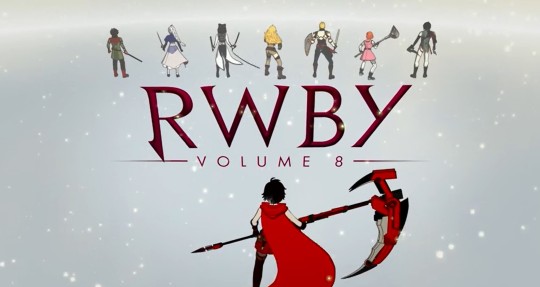
Ruby looks scared and is standing behind the rest of her team, separated from them by the title. I’m not really feeling that theme so far though, given Yang’s incredibly weak challenge, Ruby’s immediate forgiveness (during her talk with Penny), and the fact that she’s still working with half the team who vocally support her, particularly Nora. Unless something drastic changes, the idea of Ruby being the outsider here is silly.
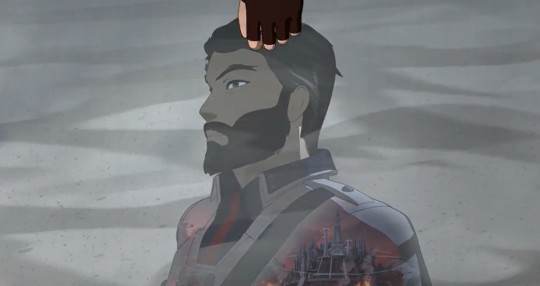
We get shots of the girls with their past selves superimposed over their bodies and weapons. I like the message here—they carry those versions of themselves with them—just not how it’s contrasted with Ironwood’s image of an earlier Atlas now burning. So that’s all he is now? Everyone gets to embody their growth except for him? His past is erased to focus solely on our current predicament? I’m not picking up any redemption flags here…
Robyn’s hand reaches down towards Clover’s badge, which then circles to show off the Ace Ops. The final image contrasts an angry Harriet with a defeated Qrow. At least, I hope they’re contrasts. It’s going to read as absurd if they somehow end up working together after Qrow helped get her leader killed.
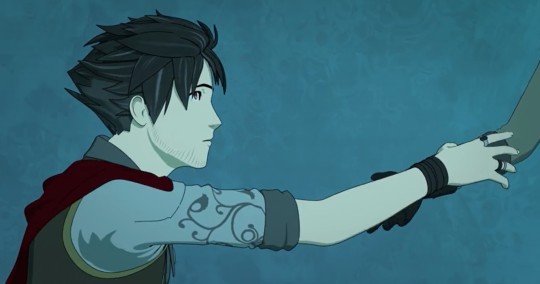
This morphs into Qrow alone who sits, devastated, until Robyn offers him a hand up and they both smile. I’m not a fan of this symbolism after the prison scene we got this episode. It’s like Qrow might have thought about his choices until Robyn’s anger reminded him that, oh yeah, he can be angry at Ironwood instead. These two teaming up, when their last team-up led to a death, is worrisome to say the least.

We get our horrifying image of Salem looming over Oscar as he clutches his head. The group’s weapons fall. This makes sense given this episode’s kidnapping and the team’s sheer inability to do anything to stop it.

Jaune stands determined—also makes sense with his trend of giving “pep talks”—while Ren and Nora stand apart, facing opposite directions. Nora looks back though.
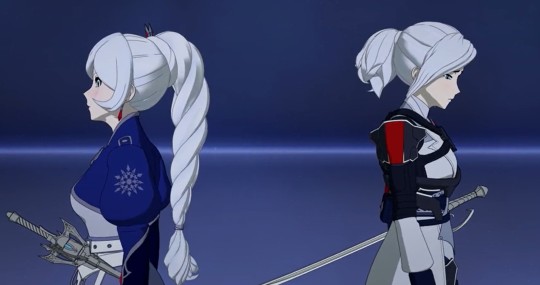
Paralleling them are Winter and Weiss who also face opposite directions. This is becoming a common visual theme: Harriet and Qrow, Nora and Ren, Winter and Weiss. Here though, Weiss looks determinedly ahead while Winter stares down at her feet, unsure. Ugh, I just know they’re going to have her betray Ironwood too.
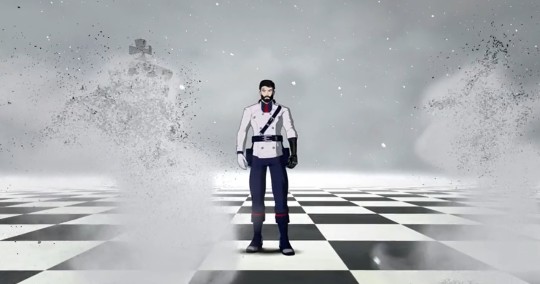
We get a brief glimpse of Whitley and Willow, not a whole lot to go on. Then we see Salem turning her chess pieces into grimm—literally changing the game—while Ironwood’s white pieces are turned to dust. I could make a quip about how white is supposed to go first, but the initial move was made thousands of years before Ironwood existed and thus he never stood a chance, certainly not when his own allies are actively working against him… but I won’t lol
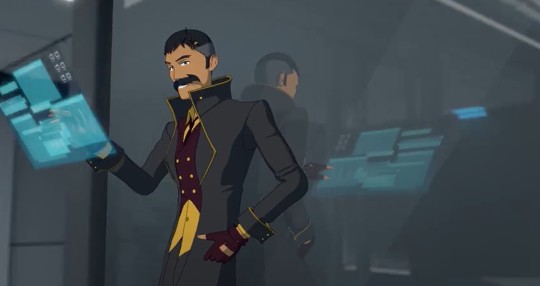

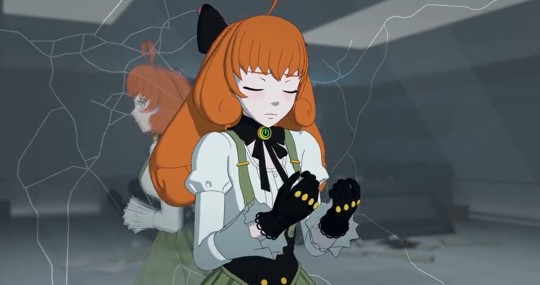
Watts is smiling at a terminal while at his back Pietro works at his. More opposites. Pietro’s reflection looks to Penny even as his body continues to work, his heart contrasting his head. Penny, in turn, looks upset as her reflection flinches at something off screen and the glass cracks. Watts hacking her, perhaps?
We see the new teams as a cherry blossom (I think?) floats across the screen. It melts in Ren’s hand while escaping Nora’s. Honestly, I’m not sure what to make of that just yet.
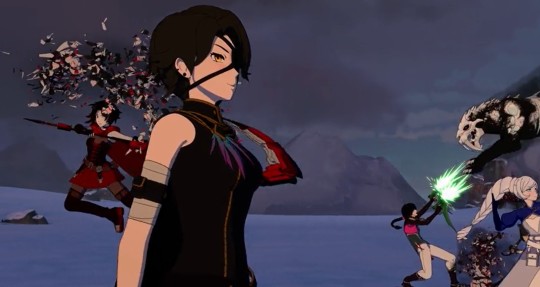
Ruby and Yang share a look—undermining their supposed conflict this volume. Couldn’t we have gotten sister unity over the last three years instead?—and a fight against grimm starts up. It freezes as Cinder walks through it, hopefully implying that the group’s attention is on the wrong threat. While they concern themselves with low-level grimm, Salem and her allies are walking free and wreaking havoc.
Then Cinder screams and clutches her grimm arm as things go up in flames. I hope that’s not a death flag given that we’ve teased her death twice already and we only just got a glimpse at her backstory. Also, I think it’s worth mentioning here that there’s a “Summer is the Hound” theory gaining traction which, frankly, I think is 100% unsubstantiated. It’s a fun crack theory, but not something I’m inclined to take seriously until we get some actual evidence behind it. There is, however, potential evidence for people becoming grimm in general: Salem falling into the pool and Cinder receiving that arm. That’s not much though. So while I’m far from convinced that the Hound was once human—let alone that it was Summer—there is something to the theory that Salem may be able to control Cinder via her arm like she controls other grimm. After all, she knew Cinder was alive despite everyone else thinking she’d perished. They seem to have some sort of connection that hasn’t been explained yet and now that Cinder has willingly walked back into Salem’s clutches, she may not be able to walk out.

There are shots of all our other villains, the Lamp and the Staff reflected in Salem’s eyes, and Jinn’s blue smoke, perhaps suggesting that we’ll see her again, or the entity residing in the Staff (if they exist).

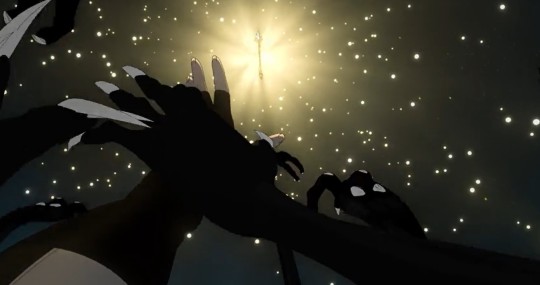
Atlas glitches back to normal—a false victory?—before the ice breaks and Team RWBY falls into the darkness below. Volume 3 vibes all around. There’s light above them emanating from the Staff, but as Ruby reaches for it grimm arms circle and pull her deeper. I hope this means that the group will suffer the defeat we need to keep Salem as a legitimate threat, but we had very similar imagery back in Volume 6 and they made it out of that situation just fine, so.
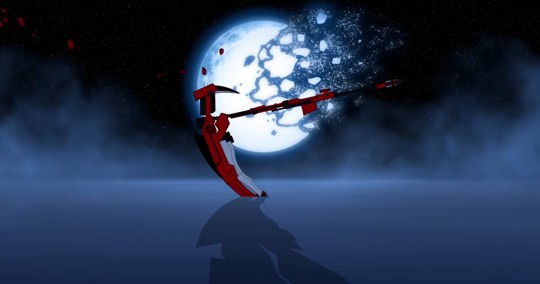
“Happy Ever After” glitches into “Happy? Never Again.” Which isn’t ominous or anything. We finally end on the classic RWBY image of Crescent Rose buried in the snow underneath the shattered moon.
On the whole I think the opening is strong and I like a lot of the symbolism in it, though I do question how much will actually end up being relevant to the story. My only gripes are that there are too many different styles going on—it feels like three or four different Volume openings slammed together—and the fact that it also feels overly long. I don’t think it’s actually any longer than our Volume 7 opening, but it seems that way to me, perhaps because of those varying styles breaking things up.
So that’s what we’ll be watching for the next twelve weeks! Let’s move onto the actual episode.

We open on the image of Clover’s bloody badge in Qrow hand, the same one we got in the trailer. I theorized last recap that we’d be getting the rest of our trailer/promo material this week and I was almost entirely correct in that. This moment, retrieving the bikes, fighting off the grimm, Watts getting hit, Oscar carried away… all we’re missing are some eye closeups and Nora powering up her hammer. As said, it makes me nervous for what the rest of the Volume holds. I can’t decide whether the footage wasn’t ready to be included in promo materials that early, or if RT is just determined not to give us any information past the first two episodes…
Regardless, this is supposed to be a moment of grief and all I could focus on was Qrow’s hand. Specifically, the lack of detail in it. On the whole, I’ve been very happy with the engine upgrade and I quite like RWBY’s animation now, but a closeup here draws too much attention to how, sometimes, they’re just not animating their characters in a way that looks natural. Where is Qrow’s wrist? Why is his palm perfectly smooth? Stylistically that’s usually fine, but when given the chance to stare at it you realize how odd it looks.
Says the woman whose own drawing skills suck but, ¯\_(ツ)_/¯
But we’re talking about the important bits in this episode! Out of frame Robyn is heard yelling, “This is your fault. You realize that, don’t you?” We’re meant to think that she’s telling Qrow this, especially with how he’s bent guiltily over the badge, until we cut to reveal Jacques right next to them.
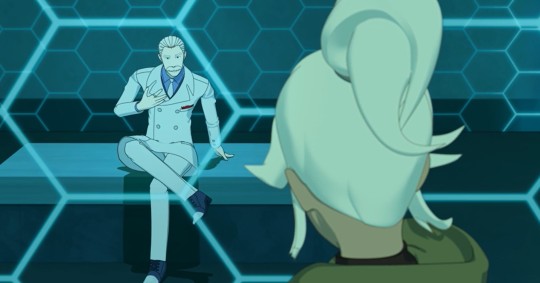
I wish Robyn was saying all that to Qrow. It would mean that she was ignoring her own responsibility in Clover’s death, but at least it would have started an arc where Qrow has to grapple with what he did. Not the awful moment that’s coming up.
Before that though, Jacques claims that he’s the “victim” here who was “duped.” His hands may not be clean, but “at least I’m not a murderer.” Look, I’m not here to absolve Jacques of anything. The guy is an absolute shit stain on the Remnant world. However, he’s right in his overall point even if his words are BS. Meaning, Jacques is not a victim and he is a murderer, but he is not the one responsible for Clover’s death. Robyn has plenty of things to be furious at him for, but this is not one of them. Ironically, here we have Jacques functioning as the kind of villain the show wants Ironwood to be. He is a murderer because the company he runs exploits faunus and forces them to work in dangerous conditions (see: the death of Ilia’s parents). He is culpable because he a) had control over these conditions and b) has full knowledge of their flaws. He’s a racist who cares more about money than lives. His informed choices then led directly to deaths. Ironwood? Not anywhere near the same thing. Overlooking the “Omg Salem is here and I have to do something about it” context, he did not try to arrest Robyn. He did not force Qrow to resist arrest, or Robyn to get involved, or Qrow to break Clover’s aura, or Tyrian to stab him in the chest. Ironwood had no control or knowledge of these events, so he is not responsible for Clover’s death in the way that Jacques is responsible for the faunus’. RWBY is giving the right arc to the wrong character.
Robyn then insists that Qrow didn’t kill anyone. He didn’t strike the blow, but he certainly helped! Look, Qrow is one of my favorites, but I’m not about to claim that he didn’t have a hand in getting his friend killed. I seriously can’t believe the show is ignoring this.
We then segue into some, uh, questionable dialogue choices. Jacques is a “snake with a mustache”? Sorry, I can’t take Robyn seriously at the best of times, but definitely not when she’s tossing out laugh worthy insults like that. Nevertheless, this “snake with a mustache” is guilty because he “helped that man tear us all apart.” That man being Watts.
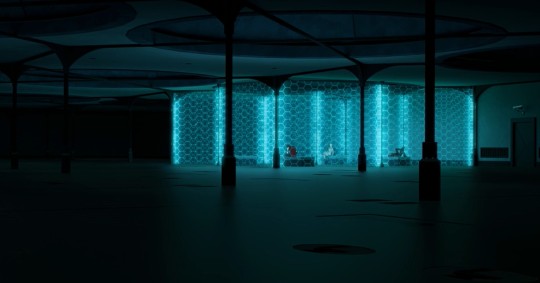
…why are they all in what amounts to the same cell with barriers dividing them? I suppose we could make the argument that they’re being held in some secret facility, given that they’re in this dark, garage-esque space with no lights and no other prisoners. Some sort of maximum security setup that... doesn’t have any other inmates and no additional security? Hmm. Then again, the power is supposed to be out and I don’t really trust RWBY’s ability to craft consistent backgrounds. I feel like they’re packed together merely because that’s plot convenient, not because it makes any sense in world.
Watts looks pretty comfortable in there though and Jacques is likewise full of confidence. He says that by now Whitley will have already called their lawyers to get him out. Now, non-imprisoned people know that the apocalypse is currently underway, as Joanna will later put it. No one is lawyer-ing at the moment, but it will be crucial to see whether Whitley is trying to get Jacques out despite the chaos. How faithful is he to his abuser? Can Willow start undermining Jacques’ influence now that they’re alone?
Jacque’s confidence thoroughly pisses Robyn off and she screams, punching the barrier between them. Keep this in mind for a second.
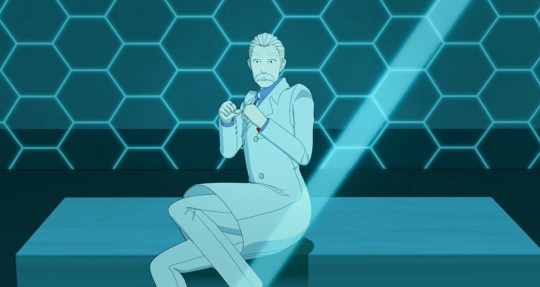
A moment later two guards show up to take Watts somewhere and… oh no. Please don’t tell me Ironwood is going to team up with him now that Penny has written him off? I know the guy has (presumably) already killed someone, and he must assume he’s killed Oscar, so we’re definitely in full villain territory despite the stupidity of it… but please don’t start working with Salem’s henchmen too. You know what? I’m not going to assume the worst until I actually see it. RWBY gives me enough nonsense as it is lol.
What I really want to talk about is that hit.

I’m somewhat concerned by a lot of the fandom’s reaction to this moment in comparison to another. Who remembers Volume 6? That scene when Qrow punched Ozpin directly into a tree? Now, I’m not keeping track of who says what when—this is a generalized reaction—but I saw a lot of posts defending that action. There were numerous justifications for the punch, but the three big ones were: 1. These characters are fighters and they’re used to it, 2. These characters have aura so it’s not that bad, and 3. Ozpin totally deserved it. Now, the problems here are that 1a. I don’t think punching someone when they’re crying on their knees is justified, whether they’re a fighter or not, 1b. Qrow was likewise punching Oscar, a totally innocent kid, 2. We had established earlier that Oscar was having trouble remembering to activate his aura and didn’t seem to have it active then (no ripple effect, he’s rubbing his jaw afterwards), and 3. Ozpin’s crimes are, as explored on this blog, not nearly the horrific actions that the story and fandom would like to paint them as. The point is that despite all this, lots and lots of fans said it was totally okay to punch Ozpin&Oscar. What’s the big deal? they asked. Now, lots and lots of fans—mostly when the trailer first dropped—say it’s not okay to punch Watts. Despite the fact that he’s also a fighter. Despite the fact that his aura has broken. Despite the fact that he’s not currently a threat (seated on the bed/Ozpin on his knees). Despite the fact that he’s responsible for helping Salem try to take over the world. If we were to make a case for who deserves to get hit, Watts is a WAY stronger candidate in my opinion, yet he’s the one who a lot of fans are scrambling to defend. Why? I assume it’s because hitting him feeds into the generalized police state/dictator theme Ironwood has been thrown into. It helps villainize Ironwood for fans to go, “Poor Watts. He’s done horrific things but no one deserves to face police brutality.” I agree. The only problem is that a lot of those same fans seem to have gone, “Ozpin can get over it. He deserved to be hit! I would have done a whole lot worse to him…” So is the difference only that one attacker is a military professional and the other is… a huntsmen professional who soon after that scene starts working for the military? Yeah. The show continually ignores that the group aren’t the rogue heroes they pretend to be. They worked under Ironwood for weeks, if not months.
The show isn’t clear about its morals and neither are the fans, with both changing tactics whenever it helps blame the character they already don’t like. When Robyn punches the barrier, do we really think she wouldn’t have hit Jacques if given the chance? Why would it be heroic for her to hit the Evil Man but it’s not okay for the grunt minor character to hit the other Evil Man? These morals don’t change just because you like Robyn and don’t like Ironwood.

Jumping ahead for a moment, we get another example of this hypocrisy with Joanna. A reporter is informing the people that the military seems to have stopped evacuations and there is an unheard number of grimm hanging out overhead, both things that are objective facts. He’s reporting as he should, sticking to what’s known and provable, and thus is, notably, not some lackey of Ironwood’s who is hastily presented as evil. Yet Joanna treats him like he is. She snatches the microphone from him and, when he starts to protest, threatens him with her weapon. After she’s done hijacking the feed, she shoves him on her way out.
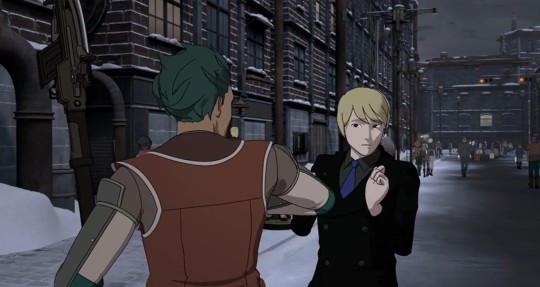
Look at how scared this guy is. These are our heroes? This back and forth doesn’t work. Prior to his random killing spree, Ironwood took his fear and frustration out on some furniture, yet the show acted as if he was hurting real people. The mere possibility that he might use violence and intimidation to achieve heroic goals—getting Amity up/escaping Salem—was enough to label him as an antagonist because the understanding was that you can’t act like that no matter what your intentions are. Yet our current heroes can use as much violence and intimidation as they want to achieve their own heroic goal of warning the people? Do we think the story will encourage us to be critical of the group if they start beating up a bunch of Atlas goons to reach the access point? Of course not. And it’s that flip-flopping that’s the problem. Your heroes have to function differently than the villains in order for them to be heroes. Under that logic, our heroes haven’t acted like heroes since mid-Volume 6 and it’s getting harder and harder to watch.
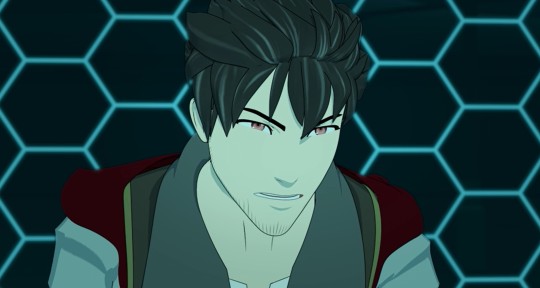
Especially when we take the scene before this into account. Yup, we’ve still got Qrow gunning for Ironwood. Robyn bemoans the fact that they can’t do anything, to which Qrow replies, “We can do something. We can kill the man who put us here.” I… feel like I shouldn’t start repeating myself given how long this recap is—we’ll be here for forever lol—BUT I hope everyone reading this understands precisely how little this makes sense. How god awful a choice it is. I mean c’mon. Robyn attacked Clover unprovoked, Qrow teamed up with Tyrian, he broke Clover’s aura, Tyrian murdered him, Salem is here, and now he’s sitting in a cell with Watts and Jacques… but Ironwood is the guy he wants to kill? REALLY, QROW? THAT’S WHO YOU’RE GOING TO GO AFTER? I really can’t with this show sometimes. RWBY, put your clown makeup on.
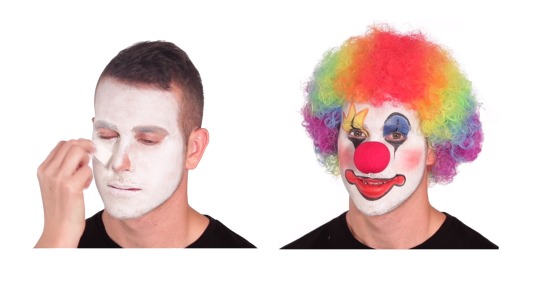
We get a cut to Ironwood’s image just so there’s no confusion about who Qrow wants to help kill next and Joanna threatens that reporter who, you know, is also a citizen in need of help and protection… Her “General Ironwood has abandoned you, but we have not” sounds absolutely ridiculous when we just watched her intimidating this guy to get what she wants. ‘You can trust us! Unless we randomly decide we don’t like you.’ I have other things to say about Yang calling out that racist woman later on, but she gets props for helping her regardless. Honestly, I don’t get that sense from the cast very often: that they’d help you even if they don’t agree with you. They certainly didn’t offer that to Ozpin, Ironwood, or the Ace Ops.

There’s a very long shot of a scared toddler staring out the window, just to hammer home how young and innocent Mantle is. Seriously, pay attention to our imagery: Mantle is scared children in homes, cute children fist-bumping Jaune, family photos lost in the street, a stuffed toy run over by hoverbikes. It’s meant to evoke a general sense of domesticity and, again, innocence. Meanwhile, Atlas is only shown via Ironwood and Jacques, the villains. Where are the families living up in the sky? The children? The humanizing details? Our racist woman is an outlier who is quickly silenced by Yang. The rest of Mantle is characterized as victims: scared women, worried fathers, the faunus huddling together in the slums, even another racist who, while an asshole, is supposed to have a point about things like the embargo. Which is all true. These characters are all of these things, it’s just that they’re not unique in this. All this exists above too—from those families, to the faunus slave labor, to the beloved objects that remind you of someone’s worth—but they’re ignored to provide a simplistic look at Atlas as the villain.
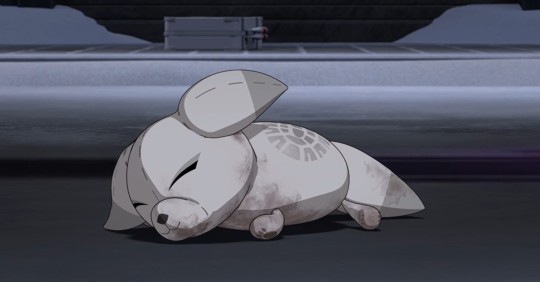
Throughout this entire episode the group tosses out snide remarks about how “They” don’t care about you and it’s just… they who? The other thousands of innocents who have nothing to do with Ironwood? The hundreds of Mantle citizens you already evacuated? The redeemable people like Winter and Whitley? The group fights alongside a Schnee who was one of the most vocal racists a year and a half ago, yet writes off the entirety of Atlas as the bad guys. What a mess.
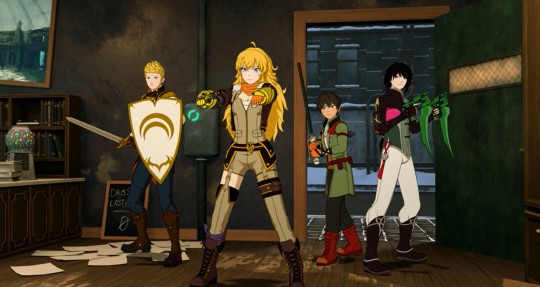
As Joanna’s voiceover finishes, we cut to Yang’s group going after Pietro’s tech. I already covered this scene in our promo material, but to summarize here: horrible tone. Absolutely nonsensical given the situation. Salem is here and Yang is giggling over bikes. In fact, the tone is off for most of the episode (our end being the wonderful exception): Yang’s joy ride, antics with the Mantle citizens, Blake poking fun at Weiss, the tube scene… none of it fits the context of the series’ big bad here to kill everyone. Arguments along the lines of, “But it can’t be doom and gloom all the time” or “This is a brilliant parallel to Volume 3 with happy times heralding tragedy” don’t erase the fact that our cast isn’t taking this threat seriously. Last week Weiss’ “We’re never going to sleep again” moment worked because it’s humor in the context of how bad everything is. All of this? It’s just the group goofing off despite supposedly being in mortal danger. This?
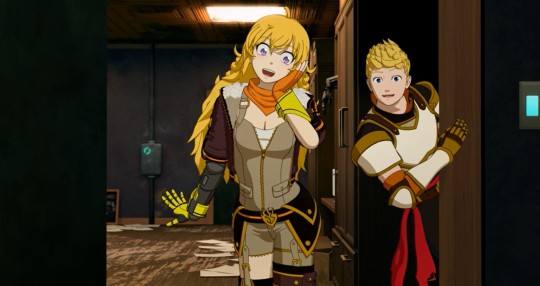

This doesn’t read well. I’d argue this scene is even worse in context due to lines like “The others are definitely missing out.” In our promo material I assumed that the group just split for the sake of splitting and they were, in fact, just missing out on something cool. But we’ve since learned that they split due to a fundamental disagreement about how to help people, a split Ruby compared to Salem’s plans, a split that Yang started! Why is she now acting like their separation is a funny “missing out” moment? It’s like if half your friend group decided to go to the movies while the other half went to a party with an unexpectedly good DJ. The movie-goers are people who are “missing out,” not the group who went off to take over a military base and everyone left angry.
Keep in mind that Ozpin is also back. Every fun times scene with Oscar in it has the added problem of Ozpin hanging back, not saying anything, not acknowledged, still a secret.
The other issue I brought up weeks back was the lack of grimm. Why are the streets deserted? Shouldn’t the army be overrunning the city? Well, turns out that there’s no army because… Salem just hasn’t bothered to send it into the city yet? When Jaune and Ren take out the low-level grimm Oscar asks if they’ve “already pushed this far in,” to which Yang replies, “No, I think those are from last night.” A few minutes later, last night’s grimm change to new non-Salem grimm as Oscar observes, “It’s the negativity. Salem’s forces aren’t moving in, but it’s enough to attract the stragglers.” Later still, Joanna asks, “…grimm are circling out there. What are they waiting for?” GOOD QUESTION. We don’t know, but it’s real convenient, isn’t it? RWBY redeems itself a bit at the end of this episode with that Hound grimm, but I’m still calling it out for having Salem hold off long enough for the group to evacuate pretty much all of Mantle and infiltrate the base. That’s real nice of her. As the characters keep pointing out, it would be a staggeringly different situation if they were overrun with grimm right now, huh? Kind of like the situation Ironwood (rightfully) assumed they’d be dealing with.
Again, I’m so glad our Big Bad is kind enough to let the heroes do everything they need to before lifting a finger to attack them.

RWBY seems to be setting up a, “See! There was always time to evacuate the city!” accusation even though no one could have known that and it makes zero logical sense. Salem brings an army with her so she can not use the army against Atlas? Right…
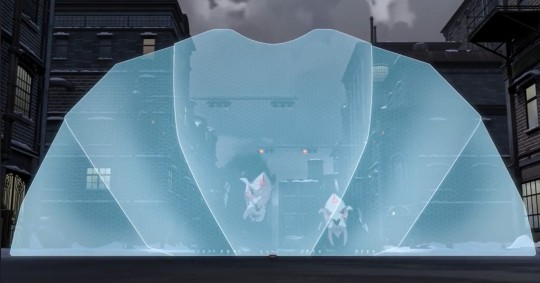
This all segues directly into our other promo scene. My initial comments still stand: the tone doesn’t work, the lack of urgency doesn’t work (Jaune playing with the kid, Oscar politely knocking on doors), the low-level grimm are not a threat, that shield is useless against anything not driven by plot convenience, and it’s weird for Jaune to be yelling, “Heads up!” when there’s no one in front of him. As said, this moment really doesn’t sit well given everything that’s going on. I had hoped that it would read better when seen in the episode itself, but that’s sadly not the case.
After Ren one-shots the grimm Jaune suggests that they use his amplified semblance to get everyone to the crater safely. Ren seems less than pleased about this, but agrees. Right now, it’s easy to say that he’s in a bad mood because Nora is mad at him, but what about the Volume before? Where’s this underlying tension coming from? I can come up with lots of theories, but at some point the show needs to confirm something. The longer we go not explaining what’s wrong with Ren, the less faith I have that it will make sense when we get it.
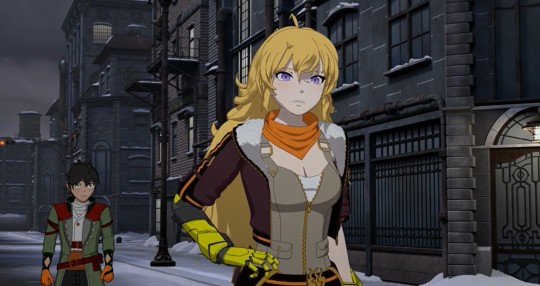
We see the racist woman upset that they have to go live with the “animals in the slums” rather than going up to Atlas. As said, I like that Yang helps her despite clearly hating the woman, I also think her criticism holds up well (ignoring the simplified ‘They abandoned you’ narrative). The only thing that bugs me is RWBY continually presenting racism as a problem to throw a band-aid on and then pat yourself on the back for ‘solving.’ Racist drunk says shit? Toss him in the trash! Racist woman says shit? Remind her that her survival depends on you! It’s not that these responses aren’t earned, but that we’re given them instead of an actual arc that tackles the complexities of this issue. I mean, Blake has abandoned the White Fang and we’ve barely mentioned the faunus slave labor in Atlas. When they head to the dust facility it’s conveniently run by bots instead of faunus. Can you imagine if Weiss Schnee walked into a group of exploited minorities, hoping to use them to access a military base? But of course, there’s nothing like that. RWBY ignores the actual issues for these simple solutions. Heroes just attack/threaten racists and then it all goes away. Yay.
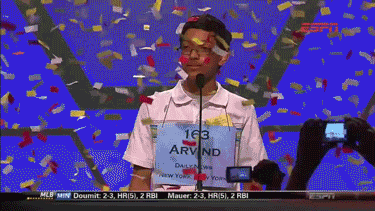
The other problem with this scene is that we learn the crater is the slums. Um… what? Hold on, Joanna made it sound like it’s a separate place, potentially inhabited by grimm, yet it’s the same area Oscar was in last episode? How is that area warmer? This makes no sense to me.
Also, ha, the crater below Atlas apparently houses all the “animals” that Team RWBYJNR is very protective of. I’m waiting for them to do something that messes with the Staff—Ruby reaching for it in the opening—Atlas crashes down on a whole city of exploited minorities, and then Ironwood is blamed for it somehow. Can’t wait for that episode.
So the group starts making their way there and hark! An Ozpin! I’m always thrilled to hear him, even if he’s treated just terribly by the show. Oscar is at the back of the group and comments that “It should not be this hard just getting people to cooperate.” Except… they are cooperating? Oscar, you are watching them cooperate right in front of you. That one woman might grumble a bit, but she hasn’t made a move or said a word about not doing what you say. Where did this complaint come from? Another example of RWBY insisting something is there when it simply isn’t. More importantly, Ozpin responds:
“And yet, it’s becoming something I’m increasingly concerned about.”
“You know, I really don’t need your additional comments right now.”
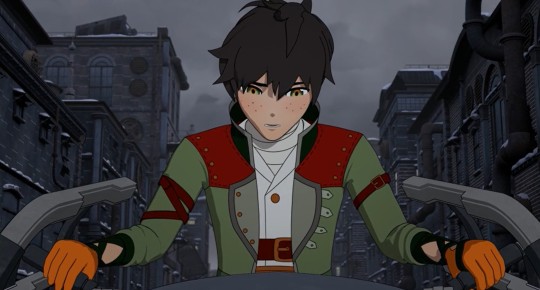
Then why did you comment out loud, Oscar? What, do you normally talk to yourself like that? You were clearly speaking to Ozpin! Don’t criticize him for responding. I hate traps like that.
Ozpin immediately says that Oscar has every right to be upset and apologizes for leaving… it’s not apologizing for his entire existence like I wrote on the bingo board, but it’s close. Who’s surprised that Ozpin is the first to offer (another) apology? Not me. Oscar corrects him with, “I’m upset you came back!”
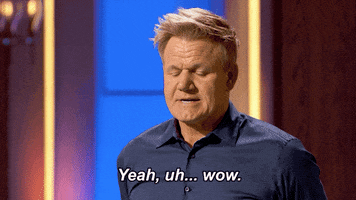
Okay. Here’s the thing. I like the idea of Oscar rejecting Ozpin both because he’s taken over his life and because Oscar has suffered horribly due to Ozpin’s presence (punched, slammed into walls, kidnapping attempts, etc.) That makes sense, it’s actually morally complex, and it’s great groundwork for character growth. The only problem is… this came out of nowhere. Oscar was shown accepting this new life when he left the farm. Then again when he insisted on fighting Hazel. Then again all the times he’s been told he’s acting like Ozpin and seems to accept that just fine. He’s clearly pleased with this new badass self he’s got going on—he even says as much—yet doesn’t want to acknowledge Ozpin as the catalyst for all this positive change. Okay, that’s something we could still work through, but what about the group? Fans are already theorizing that this is why Oscar is keeping Ozpin a secret, because he’s scared of how the group will react, punishing him to get at Ozpin again, and though he 100% has reasons for thinking that will happen, Oscar hasn’t shown that fear before now. Qrow punches him? Bonding moment with Ruby. Jaune attacks him? I made you all dinner. They all smile over his inevitable death/disappearance? He smiles back. Yang is the most scream-y? Happy to have her using him as an armrest. The group continually ignores him and treats him with suspicion? Not a peep of protest. It’s horrifying that Oscar accepted how the group previously treated him, but he did accept it. Where did this fear come from if we haven’t seen it in response to the harm done towards him? Just as importantly, can’t we have an arc where Oscar is mad at the team some too? I’ll admit that the general premise of blaming Ozpin makes sense for the traumatized fourteen-year old, but after two years of blaming Ozpin for everything… aren’t we sick of this? His team has actively hurt him, outside of Ozpin’s ability to prevent, yet Ozpin is the one who takes all the heat for their behavior. “I felt like I was actually part of the team” should lead to the realization of, “Hey, Yang shouldn’t yell at both of us for things outside of our control” not, “Hey, you should stay away forever because others have decided they don’t like you.”
All of this following Ozpin saving Oscar’s life in the airship. Then saving his life again after Ironwood shot him. Our heroes are real grateful, huh. I hate that RWBY is taking another fave and doing them dirty, though I suppose I shouldn’t be surprised.
Ozpin also mentions his magic—would be nice if Oscar brought that up with the team!—and that he is now “recollecting my longest held memories.” He…is? When? Don’t you think that’s something important to show us? We keep being told that “the merge” is occurring but not shown what that actually means. Seriously, when did Oscar get slammed with that many memories??
Please just use the aura machine and give Ozpin a robot body. RT doesn’t have the chops for writing this situation.
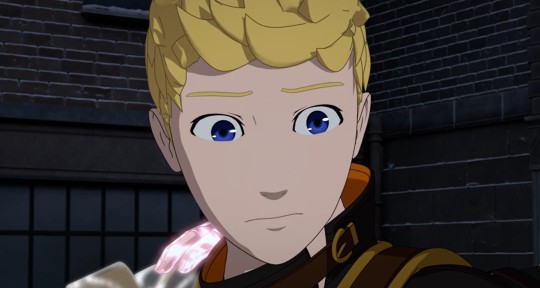
As they continue on towards the crater Ren snaps at Jaune about not needing a “pep talk.” Jaune looks annoyed at the attitude which, fair. It says a lot about the writing the last few years that Jaune is the character I’m least frustrated with lol. Likely because they haven’t had him do anything lately which, given that he’s not one of the title characters and our cast is bloated enough as it is, I’m still totally fine with.
Ozpin concludes the scene with, “We need to find a way to work together. Not just the two of us, all of us” with the camera panning up to look at Atlas. I’m glad someone isn’t ready to throw Ironwood under the bus. Given how the group reacted to him sparing Lionheart’s name though, I don’t think they’ll follow Ozpin in his forgiveness. If anything, I expect this perspective to just be more hate fuel.

We move to Ruby’s group which now includes May. Woohoo! She still hasn’t gotten half the screen time as Joanna, but I’m really glad she’s here. In fact, between a useful semblance and that adorable courtesy, I love her already. Despite, you know, helping the team break into the base and all that. Everyone has their flaws lol.
She also frames the Amity plan as getting the world “talking again.” Why is everything presented like a fun romp rather than avoiding death via Salem? Absolutely terrible tone this episode.
The group hilariously waltzes past a sign labeled AUTHORIZED PERSONNEL ONLY and enters the dust facility with the bots I mentioned earlier. This I do like. My hypothetical scenario incorporating the racism issue aside, I like that Weiss is using her knowledge and connections to further the mission, rather than something conveniently dropping into the group’s lap. Like Amity suddenly being ready for launch…So yeah, it makes sense that Weiss would know of a potential way in.
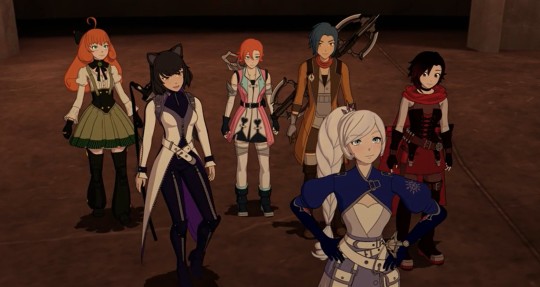
Sending someone up through the tubes though? Ehhh… I know they have aura and everything—and that Zwei was once mailed—but are we sure this is safe?? Doesn’t matter because Nora sends Weiss through with a misplaced button press. Good thing that was the tube heading to the base. Too bad Weiss is heading to a guarded military base alone. It should have been May going first with her semblance activated, but no. Chuck this onto the ever increasing ‘Bad Tone’ pile. There should not be giggles over Weiss being in that level of danger, especially with everything else going on. Ruby’s expression is the only one on point.
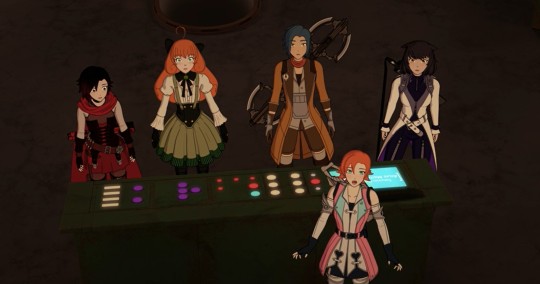
Before Weiss is yeeted off though, Penny and Ruby have a talk wherein Ruby lies her ass off. Penny says, “I do not like it when friends fight” and when Ruby starts talking about Yang she corrects her, revealing that she’s actually thinking about Winter and Ironwood. “They were our friends.”

I was ready to sing Penny’s praises and really, she still gets credit for being the only one who has acknowledged this, but her opinion is (once again) overridden by Ruby’s. Penny goes, “but then the Ace Ops attacked you” which Ruby doesn’t bother to correct. How would Penny know otherwise? The only information she has about that battle is what Ruby has told her, but Ruby is lying via omission here. The Ace Ops never attacked her. They very explicitly refused to start a fight. Ruby attacked them. Then when Penny is upset that Ironwood said “people were going to die because of me,” Ruby takes her by the shoulders and angrily insists, “That was a lie and he was only saying it to hurt you.”

Ruby… you’re the one lying. You know damn well Ironwood didn’t just say that to hurt Penny. Oh yeah, the general trying to keep a kingdom alive from an immortal witch is preoccupied with hurting Penny’s feelings for no reason other than being evil. That makes sense. More importantly, Ironwood is right. Look, I’m by no means blaming Penny for anything. She fought off Cinder, took the power when there was no other choice, and has now gotten caught up in Ruby’s plans which include incredibly misleading information that Penny has no reason to question. She’s doing her best and deserves that hug. But that doesn’t mean she lacks responsibility here. Ironwood needs Penny to evacuate. Penny—listening to Ruby—won’t help him. Ergo, if something happens to the people up in Atlas Penny will be partly responsible. If I have the key to a door with lots of people trapped behind it as a fire rages, and I refuse to open that door, I have indeed allowed a lot of people to die. As Penny says, she didn’t want this responsibility… but she has it. She has to deal with it. Too bad she’s with Ruby who encourages her to ignore it instead, insisting that nothing bad that happens after their choices could in any way be connected to them. Kind of like Qrow ignoring his own actions against Clover.
Because that’s the takeaway from this scene. Penny had empathy for their friends and then Ruby talked her out of it. She never even acknowledges that those were indeed seven friends that she betrayed. That’s horrible.
What happened to Ruby? I used to love this girl.
Continuing our tone issue, Nora is watching this show like her favorite soap is on. Okay then.

Weiss goes up the tube and then we cut to Fiona saying that… the Mantle police are helping them evacuate? So the military is bad, but the police are good? I need to stop trying to make sense of RWBY’s allegory.
When Yang and the others return Fiona makes an innocent comment about being worried about how they’d fare without the rest of their team. Yang is pissed.
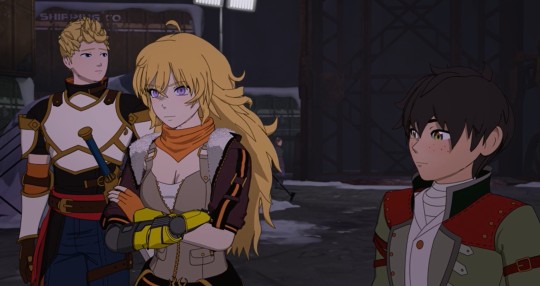
Ah, so we’re back to her giving allies attitude for random observations. Remember the anger at Marrow for suggesting she and Blake try different team-ups? Now here Yang is, in a different team-up, doing quite well. Funny how we never acknowledge who first suggested that. Now, Fiona reveals a totally logical worry that losing four fighters might make a difference when fending off grimm, but Yang is poised to be angry at everyone, about everything, all the time. Which I get is something that a lot of fans like. I’ve already seen a couple of posts praising RT for letting Robyn and Yang be angry without consequences because women often can’t do that and, fair. That is indeed one way to read it. My problem is that their anger is actually irrational, not just called as much because we women are ~emotional~. Their anger isn’t justified: Robyn because she had a significant hand in all this nonsense (that she’s ignoring) and Yang because it’s clear Fiona means no harm here. This is anger that needs to be called out, not ignored because yay women expressing emotion. That kind of defense is reserved for a woman’s justified anger that needs to be expressed without criticism, especially in a narrative that tries to undermine her perspective. But what has Fiona done to Yang? Nothing. More importantly, the show has yet to teach Yang a better coping mechanism than lashing out at people, be it with her fists, words, or angry glares. Yang has been through the ringer and it makes sense that she’s angry, but that doesn’t mean she gets a lifelong pass to treat those around her badly.
Anyway, Joanna says they have a lot of people to keep warm even though the crater was supposed to be warmer? And they’re stealing dust? So what are they using it for it not heat? We’re not seeing any difference here and frankly all the civilians should be dead by now. Or at least entering hypothermia. (Give me that conflict: how do you keep people safe when they’re not all conveniently up for walking all the way to the slums?) Joanna also says that they’re trying to get the “Old mine shafts into a livable condition” which would take how long exactly? In fact, I’d say our timeline is already wonky. We’ve watched Yang hide the Ace Ops last Volume, fly to Winter and Penny, find the Happy Huntresses, wait around for Oscar to show up, ran off on her own at some point to scout, went to get bikes, evacuated all those people to the (far away) slums, then went back out to fight off the grimm. That had to have taken up a good chunk of the night, though it’s impossible to tell the time with Atlas’ snowy sky. I’m leaning towards a bingo mark though…
The faunus who I thought was a badger or something is… a bear I guess? He has a bear-like paw, but his nails seem too long… I honestly don’t know. But he’s Fiona’s uncle! Cute. She's off to deal with a fight that’s starting while the group goes to fight more grimm. Finally, the episode gets good.

The teamwork to take out the dragon grimm was nice, always glad to see it, but the real fight starts when two more grunts show up and then immediately run away. What could have scared them off?
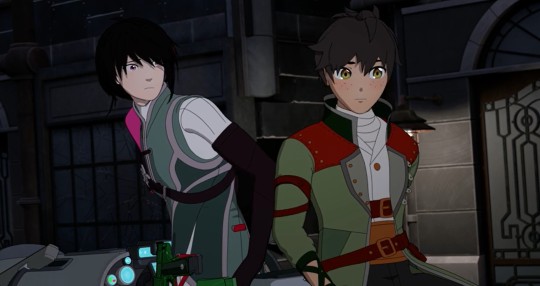
The Hound. (I’m sorry, all I can think of is Game of Thrones when I write that, but it seems to be the name the fandom is adopting, so…) Remember how I said it was unlikely to be a threat on its own? I WAS WRONG. Holy shit this thing is terrifying. It snatches Oscar and in some wonderfully quick animation absolutely obliterates the kid. Oscar is thrown around like a chew toy, desperately trying to rabbit kick at this thing and it does [checks notes] absolutely nothing. I’d normally say something about our farm boy always getting the shit kicked out of him, but this scene was too good for my salt.
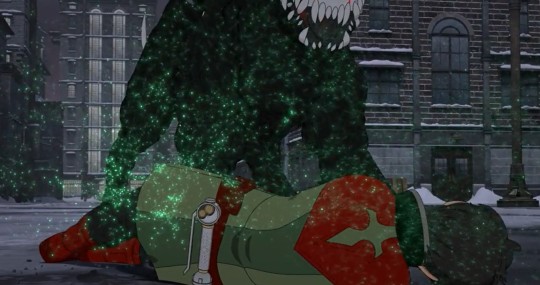
Then it changes shape, growing arms, and starts using Oscar as a shield. Yang can’t pull back in time and is snagged by her head, the Hound tossing her into the wall hard enough to break the stone. She’s still conscious though and warns the others about its strategy.

“But grimm aren’t that smart,” Jaune says. Maybe if you kids (Fiona keeps calling them kids) had stayed in school you would have learned that grimm get smarter with age! Oobleck knew that. Or, just as likely, this is a special Salem grimm. Hard to say at this point.
The point though is that the group is helpless in the face of this monster. I do want to emphasize this. I’ve seen a few people criticizing them for not doing enough to save Oscar and it’s like, what did you want them to do? Yang tried to attack and the grimm nearly had her hitting Oscar instead. Ren tried to attack and the grimm changed so fast his weapon was useless. Factor in that morphing—which the group has never seen before—the horror of Oscar hanging there limp, and the general fighter response of, ‘I can’t just keep attacking head on because that thing might kill me,’ and you realize the group was screwed from the start. They can’t stand up against this thing, not without a good strategy anyway, which there’s no time to think up. For the first time in years, ever since Tyrian, Salem actually made the right, villainous call.
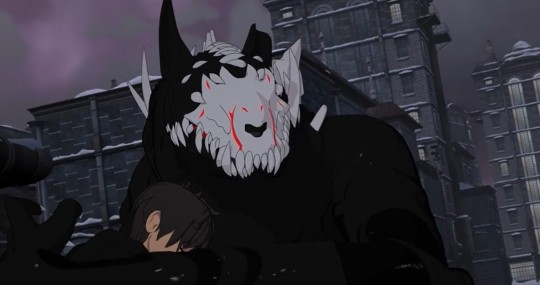
Ren screams, “Give him back!”—which was just lovely in an angsty way—and the grimm creepily cuddles Oscar against his chest. Then he responds, “No.” Yeah, they’ve never seen that before either. Can you blame them for their shock? I’m impressed that they were on their bikes just seconds later, managing to keep the grimm in sight. That speaks to their combat experience. Not the ability to power through a situation where they’re clearly outmatched, but their ability to pick themselves back up and try again.
... Ah, so that’s why Pietro was oh so randomly making them bikes. The plot needed a way for them to keep up with a flying grimm. Got it.
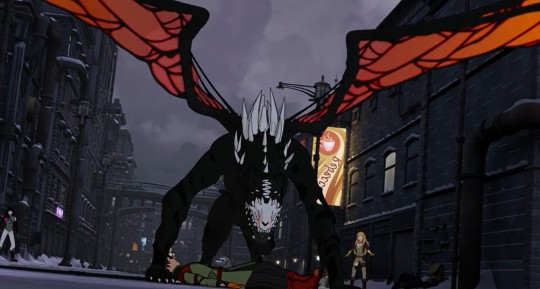
My takeaway? RT should be writing horror. They’re far better at it. The animation, sound effects, voice acting, the grimm’s speech and protective instincts, that splatter of goo on Oscar’s cheek…

... stellar all around. Like the Apathy, this is the best I think RWBY has been since the lore episode of Volume 6. Granted, action sequences like this aren’t required to grapple with any of the messy morals and character consistency of other scenes, but still. If RWBY had just given me a lighthearted ‘Girls fight cartoon monsters’ show or a horror fueled ‘Girls fight monster abominations’ show, I’d have been happy. This? This is the only redeeming part of the episode. And it’s indeed one hell of a redemption. Look at this thing!
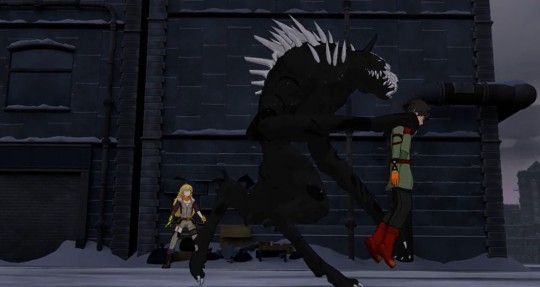
I’m not going to say it erases all the bad we got—it doesn’t—or that it likewise erases problems like Salem not using the rest of her army, but it’s a notable step in the right direction. This grimm is a threat. This grimm is a mountain the cast has to overcome. If this is the minion its master should be Everest. I still think this Volume is going down the tubes fast (it’s going the way of Weiss lol), but if it can give me more scenes like this? It might not be a total loss.
Last thing to acknowledge: What about Ozpin? I’ll admit it doesn’t look good. Given how fast he takes control he should have been able to override Oscar’s will and at least fight back a little with that spectacular magic we saw during the finale. So why didn’t he? I hope we get an in-world explanation: it happened so fast even Ozpin couldn’t do anything (shaky, but I’ll take it in a pinch), now that the merge is farther along he can no longer take control—something. Because I can easily imagine how quickly the fandom, and even the cast, will turn on him for not playing deus ex machina here. In reality, I think Ozpin didn’t take control simply because the plot needed him not to. The writers needed Oscar kidnapped so any potential out from that is conveniently forgotten… which is another knock against their writing, despite how great the scene otherwise was. The point is to take all these potential pushbacks and find a satisfying way to circumvent them, not pretend they don’t exist. RT can still save themselves here by providing that explanation later, so I hope they’re smart enough to do that. Ozpin has been blamed for everything at this point. His own kidnapping doesn’t need to be added to the list.
Also, still no word on Schrödinger's councilman. We’ve got to wait another week to see whether he’s dead or not.
Finally, let’s update the bingo card!
I’m crossing off “Ruby gives an ‘inspiring’ speech built on ignoring facts she doesn’t like” for that conversation with Penny. Yeah, it’s a speech to her alone about her worth, but Ruby mischaracterized the situation so badly I’m mad at her lol
I never thought the story would straight up just not have the grimm army attacking, so I think I’ll hold off on “Army of grimm conveniently doesn’t kill any civilians” until we see if/when it gets involved.
I’ll likewise hold off on the timeline slot until we see how bad things get…
Maria is on thin ice given that we have no idea what she’s supposedly doing while the group is off on their missions. Stay tuned.
Today we’re crossing off “Deadly cold conveniently doesn’t kill any civilians.” They should all be dropping like flies by now.
A friend pointed out that Cinder’s Cinderella flashback counts as an “Overly obvious fairy tale allusion.” In fact, I talked about how much of a shorthand that is, so that’s getting a mark.
From last week I’ve also decided to include Amity for “Retconning previous lore.” Now that the group is fully underway with their plan it reads as even more egregious that we were told it wasn’t ready.
I’ll hold off on Ozpin’s space for a while. See if he apologizes to the whole group and, if so, exactly what for.
“Oscar is finally kidnapped”—check!

Well, that’s a whole lot of headway this week. Can’t wait to see where the next episode takes us... Here’s hoping we spend a lot of time with that Hound. MVP of the episode.
Until next time! 💜
[Ko-Fi]
74 notes
·
View notes
Text
Character Analysis: Mythological Relationship of Griffith and Guts

Whether intentionally or not, Guts and Griffith’s relationship seems to be heavily rooted in one particular mythological theme, which further colors their attraction and antagonism to one another. I’ll quickly go through the mythos in the first half of the post, and then discuss in the second half how it relates to their relationship and also to Casca. I apologize in advance for all the nonsense that’s going to come out of this.
@bthump, here’s the analysis I promised to make a few weeks ago!
Proto-Indo-European mythology, whose traces are visible across cultures in entire Eurasia, shows a recurring conflict between two opposing principles. There’s a devouring chthonic creature on one side, a beast (most commonly, a snake or a wolf), and it’s associated with the lower world of matter. Then on the other side, there’s a hawk, a falcon, or an eagle: aerial, graceful, spiritual, and predatory, suggestive of celestial realms. Slavic mythology, which is an offshoot of Proto-Indo-European mythology, in particular, uses very often beast vs. hawk symbolism. In later dualistic interpretations, the spirit is good, the matter is vile, and the spirit triumphs over the matter. However, in older, naturalistic interpretations where this symbolism originated to begin with, spiritual and chthonic currents are eternally bound together, both necessary, both neutral, both caught in perpetual conflict. It could be that Berserk simply borrowed hawk/wolf dynamic from Ladyhawke (1985), however, Ladyhawke merely uses forms present in this myth, but not their underlying meaning. Berserk, on the other side, delved deep into it, and the driving force behind attraction and conflict of Griffith and Guts seems to have roots in it.
These two opposing mythical sides - hawk which stands for spirit, and beast which stands for matter - have different faces, different hypostases. Sometimes they are represented as archenemies always killing one another, sometimes as lovers always searching for each other, reflecting the idea that they cannot exist separated, yet almost whenever they combine, they inevitably hurt one another. Spirit suffers when it’s brought down to earth from its heights and entrapped in matter, and matter suffers when it is taken into the heights because it loses its roots, its relation to the chthonic earth. There’s always an imminent danger in combining them.
Mythologically, the joining of these two opposing principles is usually depicted as a marriage of sun and moon - which, especially in some later philosophies that were a continuation of the original mythical thought - is often depicted as an eclipse (Ladyhawke uses this theme too). It is a moment when the spiritual is touching upon the physical, and if the union is successful, a third element is produced out of the two, containing both and reconciling them. However, if something goes wrong during the union, the result is a disaster.
Old Slavic lore is chock-full of folk tales and legends that describe this event. There’s an attempted marriage of two persons - who are always the respective echoes of the mythical beast and hawk gods, or to be more precise, of their children, who are not enemies like their parents, but instead in love with each other. In the myth, the god, who comes from the realm of the beasts, is traveling from depths to heights (matter is rising to meet the spirit) to meet his to-be-bride. And the goddess, who lives in the heights and comes from the realm of the hawks, is also starting to lower (spirit lowering to meet matter), and they are supposed to meet midway. Yeah, it’s the “I want to be his equal” thing. On her way down, things usually get super dirty.
Their attempted wedding is immediately preceded or followed by a disaster, usually a massacre that leaves everyone present dead. This massacre is caused because, suddenly, instead of two lovers, we have three people involved. It’s usually one man torn between two women, one of whom is the bearer of the spiritual and the other of the material principle. Sometimes the person who massacres everyone is the jealous bride herself because she learns that there is “another woman”, and sometimes it’s the third person who doesn’t want to let the other two wed, usually a possessive mother. Metaphysically, what is happening here is that at the moment of conjunction, of spiritual and material realities trying to unite, that third element - which is supposed to be produced through their union - is already present. It’s a triangle now. Spirit, body, and soul are all present at once. Soul, which is always in the middle of the conflict, is being torn between spirit and matter, cleaving to them both, and as a result, someone always ends up being the third wheel. In other words: spirit and soul wed and unite, but they forget the body. Or body and soul unite, leaving the spirit out. This third left out element punishes the other two, having been left out, and everyone inevitably suffers. This legend is a fantastic psychological metaphor for the terrors that psyche undergoes when one of its aspects is suppressed and denied. This love triangle represents the body-soul-spirit dynamic, where the soul is torn between the other two. It’s an allegory on what happens when the soul chooses (or seems to choose) one side over the other, and then as a consequence and a punishment, matter castrates spirit, or spirit castrates matter. There are many variants of this legend across Slavic folklore. All of them always echo the original Proto-Indo-European mythological conflict, involving the spiritual hawk vs. chthonic beast god.
Did Miura know about all this? I don’t think so. It seems very unlikely. But he didn’t need to. He maybe knew about beast vs. hawk mythological conflict, or he simply borrowed the symbolism from the Ladyhawke movie. However, this myth merely personifies the human conflict present in almost all religions or philosophies. This theme is everywhere but in some less recognizable forms. Everyone eventually feels that it’s difficult for a soul (or psyche in our modern language) to be grounded in both spiritual and physical matters. It’s either inclined more to the spirit, or more to the physical reality, and if one goes all introspective and muses on this, one will inevitably be caught in this unfortunate love triangle of spirit-soul-body, where something is always being excluded at the expense of something else. I see Guts in this as a soul, torn between Casca and Griffith, between earthly and ethereal. So, Miura probably simply repeated the same tragedy that has been told throughout centuries in all cultures. Not because he knew these myths, but because these myths are imminent conclusions personified. They are just echoes of the age-old humanity’s struggle to understand itself that’s already embedded in the human psyche.
Now let’s look at Guts, Griffith, and Casca through the lens of this symbology. Those three are that tragic, messed up triangle of spirit, soul and body.
Guts is the soul, which is in a way always the center of the triangle because everything is perceived through it. He has substance, depth, but not a place in the world. At the beginning of manga, Guts is broken to the very core: he is essentially a man without a purpose, roaming and wandering, scattered. He doesn’t feel any higher call, he has no personal agenda, no personal wishes - he just exists and does things without knowing why he does them. Moreover, he is not just spiritually starving but physically as well, scarred by the trauma of what Donovan did to him. So, both his body and spirit have been butchered early on, leaving him with connection to none. But then he meets Griffith. And for the first time, Guts is fixated on something, there’s finally meaning, a purpose. He has something to fight for, something beyond himself. Griffith. Finally, a higher call.
Griffith very clearly personifies the spirit principle. He’s all mental, aerial, detached, calculating, not earthed. White-bluish appearance, pretty evocative of aerial heights. He follows a higher call, he is messianic, but like with all spirits, his “dream” is not earthed. It’s detached from matter, from physicality, from ordinary life. He sees none of this, none of it is genuinely important to him, nothing touches him - that is, until he meets Guts. Guts brings him down, he earths him for a moment, and for the first time, through his interaction with another being, he’s an actual human, he is involved. For the first time, he is personally caring about someone. He’s cared about things before, yes: about his fellow men, about the Hawks, but in a detached matter, from far away, from the top, in a way that doesn’t involve him. With Guts, he cares personally. Guts invades him psychically, he reaches him from the inside. This is a violation of spirit by the soul, something completely new and unfamiliar to Griffith, so impactful that he is utterly baffled and ultimately shattered by it. There’s always a danger when it comes to involving a spirit into human affairs. In the aforementioned myth, eagles were used as symbols of spirit not just because they are graceful, but because they are predatory and ferocious - meaning that there is an innate tendency to destroy matter, to kill what crawls on earth, to want to detach from it. Matter is not their territory, it baffles them. When they engage with matter, the impersonal heights are suddenly made intimate and personal. Detachment suddenly becomes attachment. This soul-spirit union, personified by Guts and Griffith’s relationship, where they both invade one another’s psyche, can either result in something beautifully sublime or something utterly disastrous. If Guts only realized that he already was Griffith’s equal, and if only Griffith realized that Guts never truly abandoned him, these two characters would have redeemed one another’s weaknesses. It was Guts who misunderstood it first, or at least first acted it out. Remember how in the legend the mythical characters were supposed to meet midway: one was supposed to climb up and the other to come down. There’s a saying in alchemical philosophy - which, by the way, is philosophically identical to these myths: earthly must be made spiritual, and spiritual must be made earthly, and only then the union can be successful. Curiously, Ladyhawke somehow also ended up using this theme, probably accidentally. So, there’s definitely something going on here.
After Guts overhears Griffith’s conversation with Charlotte about what being an equal means to him, Guts starts to think too low of himself, not being worthy of Griffith, not worthy of these sudden spiritual heights. After defeating Griffith in a duel and walking away from him, Guts says how he thinks Griffith is above all this, how this abandonment shouldn’t bother him because it’s just one of the many pebbles on the road.
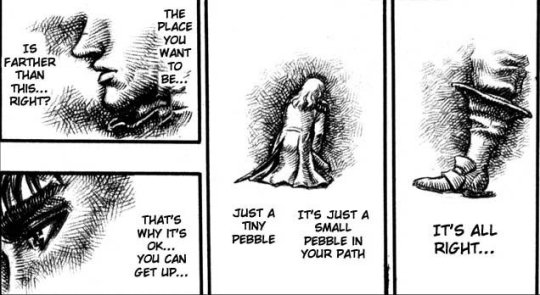
You’re a soaring spirit, so what the fuck are you doing with a petty soul like me?
This scene is not just Guts abandoning Griffith. It’s the soul - stripped of confidence before a soaring spirit - abandoning it because it thinks it cannot catch up to it - although, in a way, it already did. That’s the tragedy. The soul wants so desperately to bond with the spirit, but it thinks it can’t. Guts thinks he will never be Griffith’s equal, at least not in his current condition. And then he abandons him. As a reaction, Griffith, the spirit, loses all ties to the one thing that earthed him, that plunged him into the realm of the personal, and made his spirit more humane: Guts, the soul. It’s really the ultimate irony that Guts never abandoned Griffith, or the heights and the meaning that Griffith came to embody for him. He was bloody loyal to it all along. But Griffith doesn’t know this. All he knows is the sudden sensation that he is being left behind. From his perspective, the spirit just got ditched by the soul, and right before Eclipse, the soul (Guts) chose body (Casca) over spirit (Griffith). That’s what Griffith sees.
Which brings us to Casca: the perfect tragic image of the body, of physicality. When she joins the Band of the Hawks, she abandons her womanhood in a way, she cuts off her hair, goes seemingly insensitive and brute. All these actions and traumas are representative of the terrors of having a body, and one’s responses to it, attempts to deny it because she was born a fragile woman in a cruel man’s world. On a positive side, it is Casca who saves Guts from his own physical trauma, who teaches him the ways of the body he long denied. It is Casca who provides a sense of belonging for a while, who gives him a taste of normal life. However, she only reaches a part of him. The other part responds to spirit only, to Griffith. For Guts, Casca was that fleeting semblance of a normal, earthly life that needs to be protected (I won’t go into whether this was out of genuine romantic love) and Griffith was that higher call, what set him aflame both intellectually and emotionally.
To me, the fact that Casca had to spend chapters and chapters in a mentally vegetative state, being reduced to a body without any substance, is absolutely genial. It’s kind of a sleeping beauty scenario in one of its atypical interpretations, where the protagonist - the principle of the body - sleeps throughout the whole story, while the soul (the prince) is out there fighting the dragons. The body is first to be destroyed, left behind when there’s a conflict of soul-spirit-body. It’s the first to take damage because it is the frailest of all three, because there’s an inherent tendency of spirit to hate the body as the body steals the soul from it. The soul can always dissociate from the body and exist in a somewhat detached state, where it can even bond with the spirit, but the body will always be dead and dormant without the soul. So, metaphysically, the concept of the body is perhaps the most tragic one. It always takes the blame for everything. Spirit is eternal, but the body is what limits the existence in space in time, and thus castrates the spirit.
Griffith’s rape of Casca could in a way be a reflection of this. In Griffith lingers a terrifying, dangerous interplay and clashing of body and spirit. He sold his body for his dream. He prioritizes ethereal over physical, the fate of the collective over fate of the individual. In his scenario, body entraps the infinite spirit in a finite, confined space, suffocating it. After sleeping with Charlotte, he personally experiences this in the dungeon where he was tortured and disfigured, by which his spirit was reduced to a rotting body. His disfiguration is the triumph of the material over spirit in him. Suddenly, he’s no longer a soaring hawk and his wings are cut off. It’s an outright spiritual fall for him, and he takes it terribly. In Greek mythology, mortal encounter with the divine is often represented as rape, madness or dismemberment (gosh, I fucking love Greeks for this) because it shatters the psyche. It terrorizes it. For Griffith, this mythical transition, the descent from ethereal to earthly was disastrous to his state of mind. When Griffith rapes Casca, it’s not just a revenge against Guts - it’s spirit raping the body, getting back at it, while the soul watches and suffers. Just previously in the dungeon, it was body that violated spirit in his case. It’s as if the rape of Casca parallels Griffith’s very own disfiguration, which is also a violation of sorts. By raping Casca, Griffith is essentially saying something like: I no longer need you, now I’m above you.
Because he is so traumatized of terrors of losing Guts - meaning, losing soul - and as a consequence, being “reduced” to something earthly and trivial and ordinary (without Guts, nothing makes sense to him anymore), he needs to be free of it. Of both body and soul. He needs to be freed from his attachment to Guts and freed from this earthliness. When he becomes Femto, he’s finally pure of spirit, a god. Man, I hope it bites him in the ass. He needs to be brought down from his godly heights, and forced to experience the terrors of emotions he cut off. The revenge has to be full psychological.
#guts#berserk#griffith#gutsgriff#casca#griffguts#guts x griffith#eclipse#meta#what the fuck did i just write
291 notes
·
View notes
Note
Hey! There was a giant lemon cake with phallic image in alayne chapter. Do you think it some coincidence or it means something? Especially it's presented by petyr. Also Sansa and her enemies giving her lemoncakes give same vibes as Hansel&gretel story.
And best of all, Lord Nestor’s cooks prepared a splendid subtlety, a lemon cake in the shape of the Giant’s Lance, twelve feet tall and adorned with an Eyrie made of sugar.
For me, Alayne thought, as they wheeled it out. Sweetrobin loved lemon cakes too, but only after she told him that they were her favorites. The cake had required every lemon in the Vale, but Petyr had promised that he would send to Dorne for more.
—The Winds of Winter - Alayne I
Petyr Baelish is grooming Sansa, that’s the awful truth. And he has studied Sansa, he knows what she likes/wants and he will use that knowledge in his favor.
He knows she had a distant relationship with Ned, so he becomes Alayne’s father.
He knows that Ned neglected her and that she always craved for her father’s validation, so he gives her that, he praised her wits for example, and called her clever and smart.
If Sansa says something like “I can’t” or “I don’t know”, he is there to encourage and support and tell her “you can do it” & “you know it”.
He knows she loves knights and tourneys, so he allows her to organize a tournament, whose winners will belong to a kind of “Kingsguard” for Sweetrobin, based on the child’s favorite hero of the legends: The Winged Knight, Ser Artys Arryn.
He knows she loves lemon cakes, so he gives her a giant lemon cake.
The Tyrells has used the same strategy:
"Sansa," Lady Alerie broke in, "you must be very hungry. Shall we have a bite of boar together, and some lemon cakes?"
"Lemon cakes are my favorite," Sansa admitted.
"So we have been told," declared Lady Olenna, who obviously had no intention of being hushed. "That Varys creature seemed to think we should be grateful for the information. I've never been quite sure what the point of a eunuch is, if truth be told. It seems to me they're only men with the useful bits cut off. Alerie, will you have them bring the food, or do you mean to starve me to death? Here, Sansa, sit here next to me, I'm much less boring than these others. I hope that you're fond of fools."
—A Storm of Swords - Sansa I
We all know how much Sansa loves her lemon cakes, but the Tyrells and Littlefinger really treat her as if she were a child like Sweetrobin:
"Will they be lemon cakes?" Lord Robert loved lemon cakes, perhaps because Alayne did.
"Lemony lemony lemon cakes," she assured him, "and you can have as many as you like."
"A hundred?" he wanted to know. "Could I have a hundred?"
"If it please you." She sat on the bed and smoothed his long, fine hair. He does have pretty hair. Lady Lysa had brushed it herself every night, and cut it when it wanted cutting. After she had fallen Robert had suffered terrible shaking fits whenever anyone came near him with a blade, so Petyr had commanded that his hair be allowed to grow. Alayne wound a lock around her finger, and said, "Now, will you get out of bed and let us dress you?"
"I want a hundred lemon cakes and five tales!"
I'd like to give you a hundred spankings and five slaps. You would not dare behave like this if Petyr were here. The little lord had a good healthy fear of his stepfather. Alayne forced a smile. "As my lord desires. But nothing till you're washed and dressed and on your way. Come, before the morning's gone." She took him firmly by the hand, and drew him out of bed.
—A Feast for Crows - Alayne II
The lemon cake in the shape of the Giant’s Lance
The Giant's Lance is the tallest peak of the Mountains of the Moon within the Vale of Arryn, extending three and a half miles above the the valley below.
The great-grandfather of Petyr Baelish was a Braavosi sellsword that came into the Vale of Arryn at the service of Lord Corbray. His line was continued by his son, who became a hedge knight and took the head of the Titan of Braavos as his sigil.
As I mentioned in this post, a sword, Ice in particular, works as a phallic symbol in Sansa’s chapters.
So, we can also make this association:
The Titan of Braavos = A Giant
The Giant’s Lance = Tallest Peak
Lance & Peak = phallic symbols
Lemon cake in the shape of the Giant’s Lance = I don’t want to write it
We can also say that Petyr Baelish is “compensating” his “shortfalls”, after all he is a short man called Littlefinger.
Yes, I think this giant lemon cake could be seen as a phallic symbol and it makes sense with Littlefinger grooming her... yikes
¡¡¡SOMEONE SAVE HER PLEASE!!!
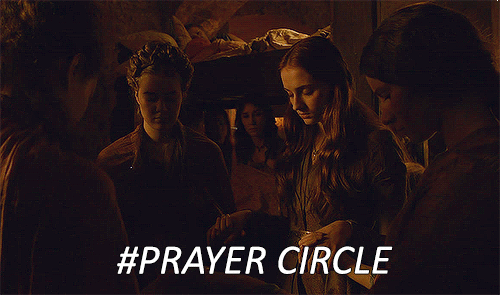
My friend @lostlittlesatellites has already wrote about these subjects, giant lemon cake as phallic symbol and Hansel and Gretel story:
I argued that lemon cakes in Sansa’s arc actually spell people trying to exploit Sansa’s weakness in an almost Hansel & Gretel way and a betrayal that follows.
“Interestingly Sansa’s first chapter in AGOT poses questions that will drive majority of her arc. Her desire for a courtly life in the South will not only prove to be hollow but worse a dream that turns into nightmare. Sansa asks two questions: “What could you want to see? It’s just fields and farms and holdfasts” and “Why would you want to ride a smelly old horse and get all sore and sweaty when you could recline on feather pillows and eat cakes with the queen?”
The world is larger than Sansa has been taught to believe, reclining more inward into her dreams with the strict regime that she taught to look away from the window. She doesn’t think she is prepared enough and that she needs more training. Yes, she doesn’t know enough but neither does Arya or Bran or Jon. Having Sansa finally leave her cage after completing her tutelage under Littlefinger is continuing that student-teacher dynamic she has had since Septa Mordane. People come to love the security of the cage they live in too long. This is why it takes so long to take out the fear of the outside from Sansa because the fact that she has barely any experience keeps her thinking she needs someone to rely on.
[…]
The “Feather pillows and cakes with the queen” part represents the glamour that attracts little boys and girls like Sansa. However, it is hollow as Sansa comes to realise about many things. In fact, people offering Sansa lemon cakes in Sansa’s storyline often forebodes a betrayal from the person offering it. Cersei offers her lemon cakes and a few chapters later she has Lady executed and even later, she has Ned arrested. Olenna offers Sansa lemon cakes, which Varys offers as valuable information to bring her guard down in order to lure her into her trap of marrying her to Wilas and getting hold of Winterfell and the North. They have her wear the murder weapon, which could implicate her for Joffrey’s murder even if their target is Tyrion. Littlefinger is offering her a 12 foot phallic shaped lemon cake in Sansa’s TWOW chapter. Given how happy Sansa is in this chapter that she is almost forgetting that she isn’t Alayne, the food is way too lavish when Winter is coming and along with this trend with lemon cakes, the clock is going to strike 12 and the illusion is going to break very soon. Soon Sansa will prefer riding those “smelly horses” and getting sweaty and sore in order to escape over those lemon cakes and feather beds offered by untrustworthy people. For Sansa’s arc to be fulfilling she has to experience the lives of small folk up close before she helps them. As a character whose view range is often myopic, she has to be put in the middle of the lives of the small folk to truly understand them.”
I highly recommend you to check @lostlittlesatellites blog, she’s a great ASOIAF meta writer, you can read more about these subjects here and here. She covered a lot of themes and symbolisms around Sansa in the Vale, some of them very disturbing regarding Littlefinger’s present and future actions against Sansa...
But despite all that, since GRRM is a writer that likes to give different meanings to a same thing, there are also some very interesting details that are worthy to mention about the real Giant’s Lance:
So lovely. The snow-clad summit of the Giant's Lance loomed above her, an immensity of stone and ice that dwarfed the castle perched upon its shoulder. Icicles twenty feet long draped the lip of the precipice where Alyssa's Tears fell in summer. A falcon soared above the frozen waterfall, blue wings spread wide against the morning sky. Would that I had wings as well.
—A Feast for Crows - Alayne I
The Winged Knight was Ser Artys Arryn. Legend said that he had driven the First Men from the Vale and flown to the top of the Giant's Lance on a huge falcon to slay the Griffin King.
—A Feast for Crows - Alayne II
I can see strong dragon imagery here...
I already wrote about how Sansa wishing falcon wings could be foreshadowing of her getting dragon wings.
Here I also listed all the similarities between Jon and Sweetrobin.
But the most interesting detail is that the real Giant’s Lance is Stone covered by Ice/Snow.
Sansa’s Vale arc has a lot of connections with Jon Snow, like this parallel that I called “Children of the Mountains”.
There is also the names of the waycastles Stone (Alayne) and Snow (Jon).
And one of my favorite Jon Snow reference in Sansa’s chapters, the ghost wolf, big as mountains:
All around was empty air and sky, the ground falling away sharply to either side. There was ice underfoot, and broken stones just waiting to turn an ankle, and the wind was howling fiercely. It sounds like a wolf, thought Sansa. A ghost wolf, big as mountains.
—A Feast for Crows - Alayne II
So,
The Giant’s Lance is the tallest peak of the Mountains of the Moon.
The Giant’s Lance is Stone covered by Ice/Snow.
Sansa compared those mountains with a giant Ghost Wolf.
I’m sorry Littlefinger, you can’t touch this girl!

Thanks for your message.
99 notes
·
View notes
Text
Two-Faced Jewel: Session 1-A

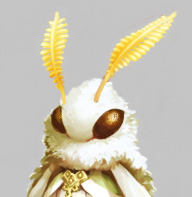
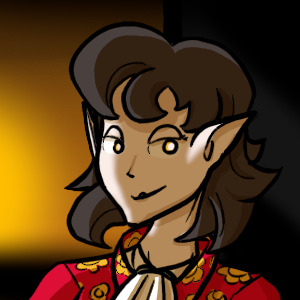
I've been playing tabletop games for TOO LONG without actually playing any D&D, and the time for that to change is now.
Zero and @eternalfarnham are Looseleaf and Saelhen du Fishercrown, a mothfolk animist and a half-elf conwoman whose travels take them to Blacksky University, where the discovery of an unknown magical artifact sets them on the path to discovering the secrets of a shattered world.
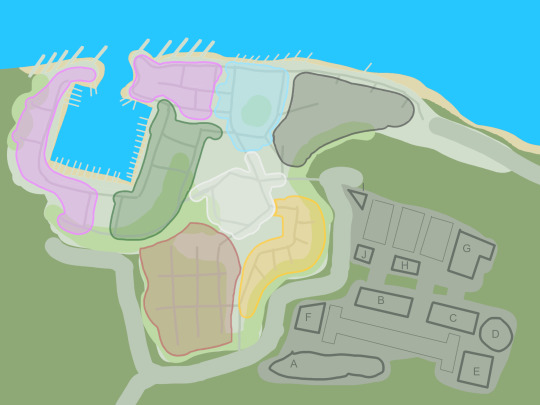
Oyashio, 親潮市, is known as the Crossroad City. It sits on the closest point between the two major continents of the world, alongside the swift currents of the fierce river-ocean that separates the two. People from all over the Jewel come here to find their fortunes.
Looseleaf is a new arrival to Blacksky University, the institution of higher learning that terrorizes the city with its warball hooligans and dangerous magical experiments. She's left her reclusive village to learn more about the cultures and peoples of the world, and has enrolled in the School of Natural Arts to pursue her dream.
The Lady Noeru de la Surplus is the down-on-her-luck scion of an elven noble family, here to complete her rite of succession and restore the good name of her clan.
Saelhen du Fishercrown is a half-elf disgrace who fled the stifling elven capital of Kanzentokai to escape its byzantine social order- and strike it rich by pretending to be the down-on-her-luck scion of an elven noble family and conning a bunch of elfaboo suckers out of their hard-earned gold. She's out to get rich and prove that elves can be assholes too, dammit!
*
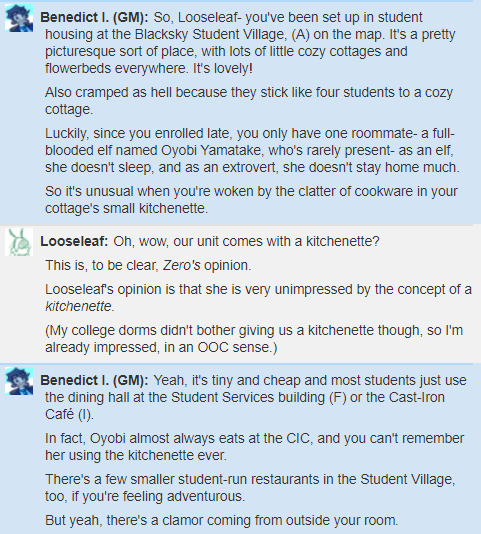
Looseleaf leaves her room to discover- not her roommate, but a large half-orc woman rummaging through her oven.

She asks where Looseleaf keeps the swords.
It becomes clear that Bud Chestplate, here, is a friend of Oyobi Yamatake, Looseleaf's roommate, and Oyobi sent her to pick up some swords from the dorm. They make some small talk while searching, but Looseleaf fails her Investigation roll and can't find the swords for her. She leaves Bud to her business, since she needs to catch her meeting with the Dean.
Benedict I. (GM): So... you get to the Dean's office. It's a pretty large room- not because the Dean is particularly showoffy, but because Dean Mogher is a loxodon, and his office sort of needs to be big.
Them elephant people, y'know.
You've been asked to meet for an "academic consultation", and aren't sure what to expect.
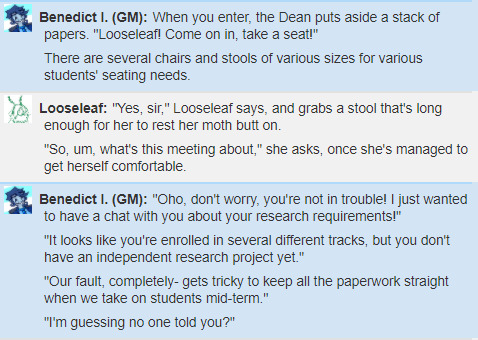
Seems like Looseleaf needs to do some sort of independent study- and the Dean has something lined up for her, if she's interested. It's an artifact they recently got their hands on thanks to a rich donor, who wanted to learn more about it. It's super magic, so he had to pull some strings to keep it out of the hands of the School of Arcane Arts.
Looseleaf is excited about this!
Looseleaf: Looseleaf vibrates, shaking her wings kind of in the way that a dog might shake their body to remove dirt. This is moth body language for 'FUCK YES I AM SO READY FOR THIS I WAS BORN FOR THIS'.
Meanwhile... Saelhen has arrived in town. She's set herself up with a room in the city, made some public appearances to sell the story, and...

Saelhen has a plan. She'll pretend that this object is rightfully hers, as part of an arcane elven ritual to succeed the headship of her family- and hopefully badger the school into letting her get her hands on it.
She enters the school grounds via the student village, and meets a half-orc woman carrying a bunch of swords around for some reason- who she asks for directions. Bud obliges, despite being preoccupied.
Saelhen du Fishercrown: "Ah, I'm sorry! I didn't realize you were occupied by all those weapons." She bows at the prescribed angle for a small favor asked from a foreigner. "Your words are as 出鱈目外人向け. Thank you."
Benedict I. (GM):出鱈目 is like, nonsense, bullshit, 外人 is gaijin, 向け is a suffix that means "for"
bullshit for foreigners
i love it
(Elven is Japanese here, for reasons.)
Saelhen follows the directions to the School of Arcane arts, and asks the receptionist- a tired-looking goblin girl named Two-Brains- where the Dean's office is.
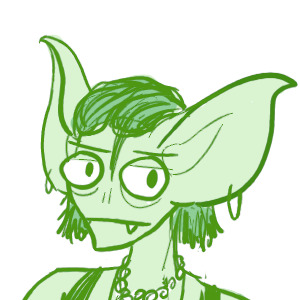
Two-Brains directs her to the Moon Annex, a wing of the building identifiable by the river of moon symbols flowing along the floor. She reaches what is clearly the Dean's office, and hears a conversation within, that she opts to sneakily listen in on.
Benedict I. (GM): That'll do- you hear a whispered argument, fairly clearly.
"...is he blackmailing you? Bribing you? This is clearly our department!"
The voice is old and slightly screechy.
A younger but still mature voice replies. "Please don't attack my character, Variable. Is my reasoning really that hard to understand?"
"Yes," the older voice says. "It's the most magically powerful artifact that's ever come into our possession! How is this not of immediate concern to our department?"
"You're failing to consider Coast's concerns, and those of our continuing research," the younger voice says. "Yes, this object is powerful- but learning its magic will scarcely tell us where it comes from. If we could find its source, we could find many more specimens of its kind for study."
It seems like Dean Variable Velocity of Arcane Arts (an elderly owl aarakocra in a wheelchair) really wanted to get her hands on the magic item, but Dean Coast Mogher of Natural Arts got this person to decide in his favor, instead.
Saelhen eventually opts to knock, and sees in the room with the Dean... an elf. Very tall, adorned in jewels, and wearing a very very large hoop dress that goes all the way down to the floor. This would be a problem for Saelhen, because actual elven nobility would see right through her disguise- but luckily, this woman- the provost of the university- is a drow, and not exactly welcome in the circles of elven high society.
The provost takes her leave, and Saelhen spins her sob story for Dean Velocity:
Saelhen du Fishercrown: "Madam Dean, I am sure that any matter requiring your attention might very well overrule my own. If your affairs require that you delay our discussion of the provenance of your college's recent acquisition, then my honor demands that I comply."
Benedict I. (GM): "The provenance of our recent acquisiton?"
"Wait- are you here about that thing?"
"The bracer?"
Saelhen du Fishercrown: "Ah, yes." Saelhen ducks her head a bit sheepishly. "I can come back."
"Perhaps I have misunderstood what time I was meant to arrive."
Benedict I. (GM): "No, no, come in! Come in, I'm sure we can address your concerns."
"What time you were- you mentioned an appointment, who told you there was an appointment?"
"Never mind, no, it's- please, come in."
Saelhen du Fishercrown: "I spoke with a Madam Two-Brains? But information may have been lost in the shuffle -- I gather it was a busy day." Saelhen sits.
Benedict I. (GM): "...The student receptionist? Why would- no, never mind. What's this about the bracer?"
Saelhen du Fishercrown: Whoops. "I have neglected to introduce myself, and for that I apologize. I am the Lady Noeru de la Surplus, sixth of her name." Saelhen lowers her head. "Your... bracer is an item of some significance to my family."
Benedict I. (GM): Her eyes light up. "Is that so?"
"What significance, would you say?"
After a little more bullshitting and some great Deception rolls, she has the dean completely sold on her story. It helps that she quite badly wanted to believe it- since if it were true, her rival wouldn't have legitimate claim to it. Dean Velocity offers to help recover the item, if Lady Noeru would agree to let her study it briefly.
Meanwhile, below the School of Arcane Arts, Looseleaf is shown a special hands-free containment device for the magical item.
Benedict I. (GM): Inside the glass case hovers what looks like a stone bracer.
It's inset with thirteen large sapphires, at seemingly random locations, little rhyme or reason.
There's one region of the bracer that doesn't have sapphires- a flat, circular raised bit with a symbol engraved on it.
It's not one you're familiar with, but matches the pattern of the emblems of the gods.
Looseleaf: Is it a divine symbol? Yeeeep.
Benedict I. (GM): A circle, with horizontal lines across it, growing denser towards the wearer.
Looseleaf makes some investigation and history checks to find out more about it. She observes that the sapphires are connected to one another, and that its craftsmanship doesn't match anything she's ever seen or read about. She's still taking a look at it when Saelhen and Dean Velocity show up.
Dean Velocity badgers Dean Mogher into hearing Saelhen out, and she continues to knock her deception checks out of the park. He doesn't want to give it up without a fight, but he believes her intentions are true. He proposes a compromise: Looseleaf will represent both schools (as she's taking courses in both and is undecided on a major) and accompany Saelhen on her supposed succession rite, asking lots of questions and writing a report that they might be able to publish.
This compromise is more or less amenable to all, and Saelhen is allowed to touch the bracer.
It immediately jumps onto her arm and sticks there, and projects a holographic wayfinding arrow out of one of the sapphires. The bracer begins pulling her arm in that direction. She can't get it off- and can't just run. She's forced to keep up the charade, and let Looseleaf try some magic on it.
Looseleaf is a homebrew class Zero found called the Animist, a caster themed around the idea that all things have "spirits". One of the things it can do is called Soul Glean, which basically lets you... read the mind of an inanimate object.
Lesser Soul Glean: You may peer into the things the soul of an object has witnessed. Make an int (arcana) check to determine the amount of information gleaned from the object. The more recent or emotionally volatile the event, the easier it is to glean information from, while the more distance the harder it is. Senses of emotions, vague intentions, and the sight of auras of can generally be gleaned from this reading.
And what she gets from that is...
Looseleaf:“It’s lost,” Looseleaf says. “It has a purpose and has been unable to fulfill that purpose for a very long time. It’s not epistemologically correct to assign emotions to items through divinations, I think, but if this thing had an emotion I imagine it would be sad.”
”Most importantly, it does not feel fulfilled. It is not behaving the way that objects reunited with their lost owners would be have.”
“Given this, I hope you will forgive me for my indiscretion in this next act.”
Looseleaf... shifts her arm, the arm touching the bracer, sliding off it and onto the elvish lady’s arm, and Lesser Soul Reads her.
Now Soul Read is for living things, and only sort of gets you mood and general intentions- for now. Saelhen, though, won't be having any of that- she passes her dex save to pull away before Looseleaf can read her. (This, of course, only makes Looseleaf more suspicious.)
Tumblr has new post restrictions that force me to keep these posts short, so here's:
[Part B]
8 notes
·
View notes
Photo

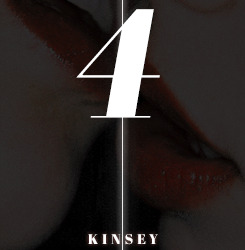
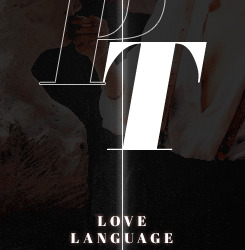
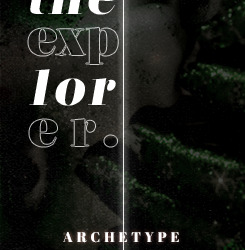
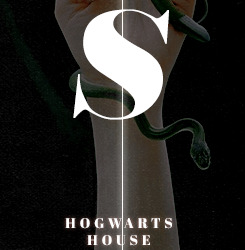
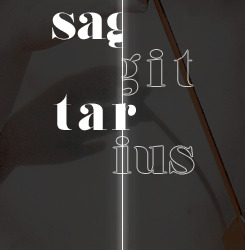
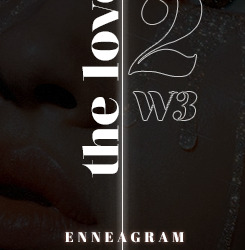

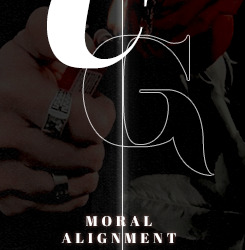
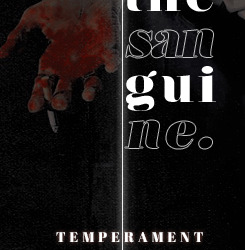
𝐂𝐇𝐀𝐑𝐀𝐂𝐓𝐄𝐑 𝐒𝐓𝐔𝐃𝐘.
I N S U M M A R Y ––– 𝒂𝒓𝒄𝒉𝒆𝒕𝒚𝒑𝒆 ; the explorer . 𝒆𝒏𝒏𝒆𝒂𝒈𝒓𝒂𝒎 ; two . 𝒉𝒐𝒖𝒔𝒆 ; slytherin . 𝒌𝒊𝒏𝒔𝒆𝒚 𝒔𝒄𝒂𝒍𝒆 ; four . 𝒍𝒐𝒗𝒆 𝒍𝒂𝒏𝒈𝒖𝒂𝒈𝒆 ; physical touch . 𝒎𝒃𝒕𝒊 ; istp . 𝒎𝒐𝒓𝒂𝒍𝒊𝒕𝒚 ; chaotic good . 𝒑𝒂𝒕𝒓𝒐𝒏𝒖𝒔 ; runespoor . 𝒔𝒊𝒈𝒏 ; sagittarius . 𝒕𝒆𝒎𝒑𝒆𝒓𝒂𝒎𝒆𝒏𝒕 ; sanguine .
𝒂𝒓𝒄𝒉𝒆𝒕𝒚𝒑𝒆 ; the explorer .
the explorer archetype’s goal: to live an inspiring and fulfilling life. the explorer is authentic, curious, and independent. they want to answer questions such as: “why am I here?” or “what is my purpose?”. the explorer wants the freedom to forge a unique path and focus on self-discovery and the meaning of life. although one to criticize the establishment, the explorer would rather venture down their own path than put up a fight. just as much as they crave freedom, they also strive to help others feel free. their biggest fear is feeling trapped.
C L O S E R E S U L T S ––– the rebel + the caregiver .
𝒆𝒏𝒏𝒆𝒂𝒈𝒓𝒂𝒎 ; two with a three wing, sexual/social instinctual subtype .
twos are empathetic, sincere, and warm-hearted. they are friendly, generous, and self-sacrificing, but can also be sentimental, flattering, and people-pleasing. they are well-meaning and driven to be close to others, but can slip into doing things for others in order to be needed. they typically have problems with possessiveness and with acknowledging their own needs. unselfish and altruistic, they have unconditional love for others. their basic fear is of being unwanted, unworthy of being loved. the twos with a three wing are more driven and extroverted. they’re supportive and empathetic, and tend to search for the spotlight. they fear being unwanted or worthless, and avoid this by building personal connections with others and working hard to meet the needs of the community. their most basic desire is to be loved and accepted, and they may express this by being extremely attentive and attached to other people. they also tend to suppress their own negative emotions, which, when done frequently, can lead to high levels of stress or unexpected outbursts.
the subtype that exudes the most raw charisma and sexual energy, sx/so. they may identify so strongly with whatever they’re involved with that they often become the symbol of its core essence, and sometimes its lead agent for change. hardly content with the status quo, this subvariant seeks to alter the fundamental structure of something while at once embodying it’s purest or most extreme form. they enjoy pushing other’s buttons, especially those resistant to their modes of expression. may exploit and seek to redefine sexuality to reflect their own colorful and uncertain understanding of it. can feel pulled between wanting a life of maximum intensity and reassuring episodes of peaceful convention. motivation: to impact others, question assumptions, challenge convention. familiar roles: provocateur, activist, exhibitionist.
C L O S E R E S U L T S ––– type seven .
𝒉𝒐𝒖𝒔𝒆 ; slytherin .
the slytherin house is known for being associated with a tendency to look after their own. they are always striving to be the best, but will never leave their own behind. they’re cunning, resourceful, determined, and ambitious. slytherin has produced its share of dark witches and wizards, but members are not afraid to admit it.
C L O S E R E S U L T S ––– gryffindor .
𝒌𝒊𝒏𝒔𝒆𝒚 𝒔𝒄𝒂𝒍𝒆 ; four .
predominantly homosexual, but more than incidentally heterosexual.
𝒍𝒐𝒗𝒆 𝒍𝒂𝒏𝒈𝒖𝒂𝒈𝒆 ; physical touch .
a person whose primary language is physical touch is, not surprisingly, very touchy. hugs, pats on the back, and thoughtful touches on the arm — they can all be ways to show excitement, concern, care, and love. physical presence and accessibility are crucial, while neglect or abuse can be unforgivable and destructive. appropriate and timely touches communicate warmth, safety, and love to you.
C L O S E R E S U L T S ––– quality time + words of affirmation .
𝒎𝒃𝒕𝒊 ; istp, the virtuoso or the artisan .
an improviser type, best at handling crisis situations. their core needs are to have the freedom to act without hindrance and to see a marked result from action. their energies are focused on skillful performance, variety, and stimulation. they trust their impulses and have a drive to action. some of their unique themes include: actively solving problems, observing how things work, unsettled by powerful emotional experiences. virtuosos are actually quite enigmatic. friendly but very private, calm but suddenly spontaneous, extremely curious but unable to stay focused on formal studies, virtuoso personalities can be a challenge to predict, even by their friends and loved ones. their decisions stem from a sense of practical realism, and at their heart is a strong sense of direct fairness. instead of being overly cautious though, they are likely to go too far, accepting likewise retaliation, good or bad, as fair play. while they’re creative and energetic, istps are known for being stubborn, reserved, and prone to risky behavior.
𝒎𝒐𝒓𝒂𝒍𝒊𝒕𝒚 ; chaotic good .
a chaotic good character acts as his conscience directs him with little regard for what others expect of him. they make their own way, but they’re kind and benevolent. they believe in goodness and right but has little use for laws and regulations. they hate when people try to intimidate others and tell them what to do. they follow their own moral compass, which, although good, may not agree with that of society. they do what is necessary to bring about change for the better, disdain bureaucratic organizations that get in the way of social improvement, and place a high value on personal freedom, not only for oneself, but for others as well. they usually intend to do the right thing, but their methods are generally disorganized and often out of sync with the rest of society.
𝒑𝒂𝒕𝒓𝒐𝒏𝒖𝒔 ; runespoor .
the runespoor patronus is very rare. it is cast by a very complex witch or wizard, an individual who has deep thought and uncommon understanding of the world. it is said that each head of a runespoor has its own job, there is the head that decides what the creature will do, the head that often drifts off into fantasy, and the head that criticizes the other two. someone who casts this patronus is precise in decisions they make, but they can loose themselves in deep thought. they are incredibly wise and often live to bring greatness to their names. snakes are symbolic of change, fertility, healing, energy, and the duality of good and evil.
𝒔𝒊𝒈𝒏 ; sagittarius sun ; libra rising ; scorpio moon .
restless, cheerful, and friendly, sun in sagittarius people are generally on the go. they have a love of freedom, and a disdain for routine. generally quite easygoing, sagittarians make friends with people from all walks of life. they have an often blind faith in people, and in the world. their optimism is infectious, although it can get them into trouble from time to time. these are curious people who love to learn. the need for escape is generally strong, and some come across as a little irresponsible.
sagittarius sun / scorpio moon people are independent, capable and usually successful at whatever they are doing. there is the sound judgment and great wisdom of the sagittarius combined with the scorpio’s determination and ability to turn everything they want into a project. they’re intense and astute, but can also be temperamental, blunt and hypersensitive. discrete and intelligent, they will come up with great plans and strategies that will help them advance quickly in both professional and personal life. renewing themselves is one of their abilities. they love to dig deeply into unusual subjects and the exotic and the uncharted fascinate you. they seek to experience as much as possible in life and they are sensual and pleasure loving. they always get up from falls, no matter how many times they are setback or personal misfortunes they encounter.
the sagittarius sun / libra ascendant is known to be clever, intelligent and educated. their environment is delighted by their charming personalities and the joy they have in life and so, all hearts are easily won. these people know exactly how to take center stage and thus gain popularity. they have amazing artistic and psychological skills, besides their exquisite taste and knowledge on how to deal with others.
𝒕𝒆𝒎𝒑𝒆𝒓𝒂𝒎𝒆𝒏𝒕 ; sanguine / choleric blend .
sanguines are naturally people-oriented. they have an active, positive movement in a favorable environment. they influence their environment by encouraging others to work together. the sanguine is by far the most versatile of the four temperaments and has the potential for the widest range of behavior due to possessing the widest range of emotions. they are extroverted, fun-loving, playful, activity-prone, impulsive, entertaining, persuasive, easily amused, and optimistic. they are enthusiastic, expressive, tend to be very affectionate, and are word smiths. sanguines are very competitive, and they usually like sports of any kind. they tend to be disorganized and easily forgetful, and sometimes have difficulty controlling their thoughts and emotions. they fear rejection or not making a favorable impression. individuals with this personality have a hard time doing nothing and engage in more risk seeking behavior.
the sanguine-choleric combination is driven by the primary need to be accepted socially and the secondary need to get results. they are more assertive than the other sanguine combinations, being very persuasive and making good debaters! they have an outgoing interest in others and the ability to gain the respect and confidence of various types of individuals. they exhibit poise and confidence in most situations, especially social events, and will become bored without activity and social involvement.
#opalstask#𝑽 : DEVELOPMENT .#𝑽𝑰𝑰𝑰 : EDITS .#yes this is messy#yes its late#yes its ugly#:)#later today ill pos t the connections probably idk
16 notes
·
View notes
Text
Naruto Manga is complex
~ Understanding Naruto Manga ~
🧠🏯📖🔦🕯️💡✏️✒️🖊️
[Phylisophy and interpretation🕯️ >>>>> than punches🥊]
... Such an infinitesimal and superficial leafing through the Manga infuriates me🤬
Naruto Manga broaches so many interesting and unique topics and far TOO MANY people still waste time into arguing whose character is stronger than the other and whose punches are stronger *sigh* 😩 🤦♀️🤦♀️🤦♀️🤦♂️🤦♂️🤦♀️
List of Naruto Manga themes and subjects:
1. Camaraderie - - as per particularly studied on soldiers, the bond of camaraderie between war soldiers is so strong that it stands on par with family bonds and even goes beyond; warriors are ready to die for each other and to save a friend. Same feelings and bond that's used as liaison to concept the dynamics between Ninja 3 man cells (Team 7, Team 10...);
2. Cosmogony - - the origins of the universe as imagined and depicted by the author in Naruto Universe, based on the Yin-yang dichotomy (the skeleton of the manga is constructed on the Yin and Yang parallelism - - Naruto and Sasuke);
3. Feminism and women empowerment - - the pioneers of the feminism in Naruto Manga (who also made an insidious and questionable disappearence in the parenting guide new Boruto Series 🤔 - - Tsunade and Ten Ten are a welcomed addagio in a deeply rooted patriarchal society, which should have been caresses and developed more, in addition to approaching and pulverizing the discrimination of childfreeness (see Kakashi, Gai sensei, Tsunade, Ten Ten...);
4. Politics - - needless to say that Naruto manga offers an ample introspection into politics and studies of security in a complex and intricate manner. The repertoire explores tyranny, communism, totalitarianism, democracy, anarchy, as well as the role of secret services and Intelligence (Itachi, Danzo, Uchiha, The Root), supported by illustrative characters;
5. Phylisophy and classic literature - - these avant-garde elements are a fresh dive first into the inner coordinates of every characters and highlight the author's superb analytical skills coupled wirh vast, deep savviness and knowledge of classic literature and phylisophy. Arthur Schopenhauer's nihilism, negativism and Antinatalism, Nietzche and Machiavelli's "The Prince" are just few notable examples of how the Manga's smart construction intertwines with classic notes, nuanced and valences. The entire construction and phylisophy of the Uchiha Clan is constructed based in phylisophy.
Uchiha Itachi's famous quotes paraphrase excerpts from Machiavelli's "The Prince" : "Men will not look at things as they really are, but as they wish them to be - and are ruined" (his words to Sasuke prior to their battle finale - - "all men like with false preconceptions that they call reality")
"I'm not interested in preserving the status quo; I want to overthrow it" (Niccolo Machiavelli) ~~ "The current system created THIS problem... I will execute the Five Kage in the Infinite Tsukuoymi... I want to become Hokage and change the world... What I want is... REVOLUTION!" (Uchiha Sasuke 😎)
"Everyone sees what you appear to be, few experience what you really are." (Machiavelli) ~ "All of you, without measuring your own capacities... Had no idea of mine" and "How far are you able to see with THAT Sharingan of yours, Sasuke?" (Uchiha Itachi)
And probably the most iconic catchphrase that became the definition of the HOKAGE in the Manga "IT'S NOT TITLES THAT HONOR MEN, BUT MEN THAT HONOR TITLES" (Niccolo Machiavelli) ~~~ "You don't become Hokage to be acknowledge by everyone. The one who is acknowledged by everyone becomes the Hokage" (Uchiha Itachi).
... And examples are teeming.
You can't not love this mange, for it's abounding in brainy elements and phylosophic concepts, about the propose of life.
6. Bildungsroman - - as the German concept refers to a prose that portrays the development of a character form childhood to adulthood. Needles to say that Naruto manga is picture frame perfect definition of this principle of construction for we follow the main characters from childhood to adulthood in all the splendor of their complexity, dynamics and inner emotions.
7. Religion - - I'm always delightfully amazed at the author's genius to perfectly and objectively carry us on a journey through the phylisophy and dogmas of the Main World Religions. The elements of Buddhism and Hinduism perfectly blend with Christian notes (the Biblical reference of Eve and the original Sin are the foundation of Kaguya Otsutsuki the chakra progenitor aka Eve the first woman , Black Zetsu aka the Serpent and the Chakra Fruit aka the Apple of knowledge).
8. Love - - even though the Manga is an action oriented shonen manga, love is the antagonist feeling of pain that preserve and supports the tryumph of goodness, light, democracy and hope, as it produces the effect of catharsis or purification through Art. We have the grandios story of Sasuke and Sakura written in a sumptuous realistic romance and Naruto and Hinata as the complacent, peaceful and comfortable homey cohabitation as illustrative for an idealized family picture.
Love "come in many forms" (thank you, Uzumaki Karin) in Naruto Manga as the ultimate bond between shinobi.
9. Art and the Genius - - Deidra and Sasori are two unique, refresh and polivalent interesting characters, for they explore two themes that are rare in modern literature, namely the condition of the genius and the torment and inner demons of an artist. Their anthitetical plylosophy about the concept and the purpose of art as healing, everlasting and cathartic is brilliant. Sasori suggests that art encaptures the soul and emotions and the very "heart❤️" of the artist into a creation that preserved and defies time - art is supposed to encapute eternal beauty, art never dies, never grows old, art remains forever. While Deidra suggests that wet is a transient moment of shock, of pure visual impact that engages all the senses into a devastating "blast💣💫💥" that's irresistible and no one can escape it's fulminant powers.
The torment of the GENIUS, the hallucinating pain of a brilliant, introspective superior mind that's perceived as encompassing as harrowing and irresistible is perfectly limned through the evolution of the Manga Geniuses; all undergo tremendous physical and psychological torment that rams deep and consummate their very souls to the point where they borderline insanity and madness - Sasuke, Madara, Danzo, Itachi, Orochimaru.
10. Discrimination - - this is one of the Manga's laitmotif; nearly all the Manga conflicts stem from a form of discrimination, from the discrimination and ostracization of the Uchiha Clan and Naruto as the natural fear of the strongest from the weaker average men, to the discrimination of poor. And also we have some nuances of the discrimination of black people but the author does a great job into emphasizing their qualities (The Land of Lighting - - A, Killer B...) (I love the Rap references as the usage of art and music to voice their feelings and pain as a retort to discrimination and long-term oppression and white supremacy).
11. Paleo astronomy and ancient aliens - - that's definitely a bold, brave and new approach from the Master Masashi Kishimoto - sensei, which I can't help but applaud 👏👏👏 paleo-astronomy and ancient aliens link our terrestrial human life to extraterrestrial forms of life which dwleve deep into the origins of our hystory, existence, origins and evolution. Some claim that vestiges of their interference can be found in lost ancient temples, as well as irrefutable evidence of extraterrestrial and UFO contact with our ancestors (the Great Pyramid, the hierogliphs, the Nazca Lines, the Mayans and Inca temples, Stonehange...).
Boruto Manga revolves around the idea that Naruto Manga tossed in its closure; that aliens are in close contact with terrestrial beings. Otsutsuki Clan brought the chakra from the space and offered it to humans / Otsutsuki use the chakra to feed on themselves / Hagoromo's brother eloped to the moon and life evolved since then keeping portals on earth that connect the two planets.
And more recently, Sasuke is tracing Kaguya and the Otsutsuki while searching for ancient temples and hystorical vestiges from the Otsutsuki aliens (Kaguya's castles and ruins), just like a veritable paleo-astronomer.
Hats off for the author's avant-garde approach and vast knowledge 🎩
12. Pitagora's theorem, Euclid, the Tree of Life and Immortality - - Orochimaru in a nutshell. Orochimaru is the genius scientist who craves to defy death, obtain eternal life and endless knowledge. The basis of Pitagora's theorem has deep implications into unlocking the secrets of eternal life, as well as his geometry and Euclid's theorem; it's no coincidence that the theorem fits the construction of the Great Pyramid. And we have the Tree of the Chakra Fruit as the symbol of the Tree of Life that represents immortality and knowledge.
This list is nowhere near exhaustive, for the complexity of Naruto Manga spans further that my modest understanding of its concepts.
#Naruto manga#Naruto Manga interpretation#Naruto symbols#Naruto Manga is complex#Naruto interpretation#Naruto Manga analysis
8 notes
·
View notes
Photo




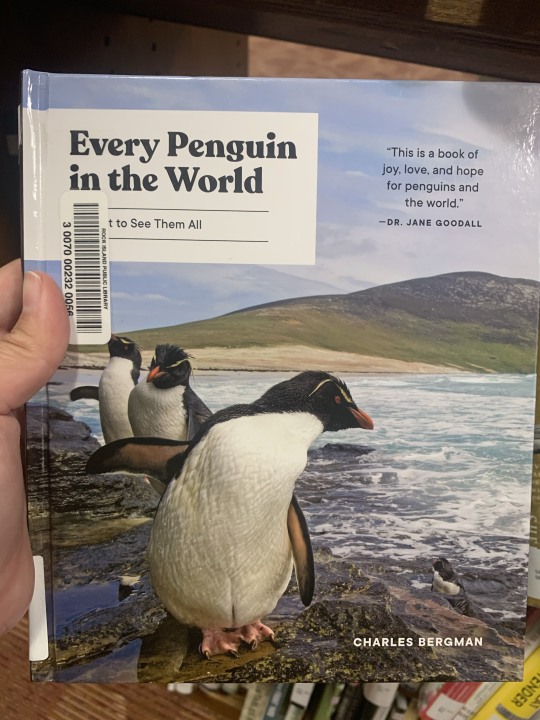

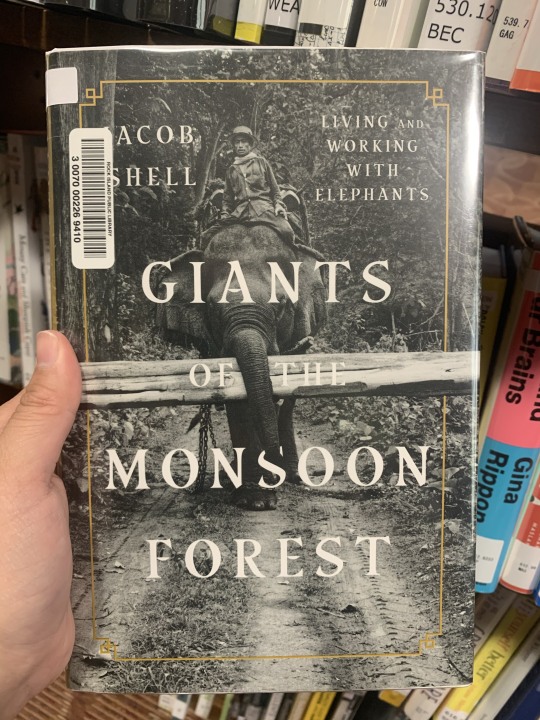
New non-fiction titles in the 500′s!
Summaries from Goodreads.com; Title link will bring you our local catalog
When the Earth Had Two Moons: Cannibal Planets, Dreadful Orbits, Icy Giants, Dirty Comets and the Origins of Today's Night Sky by Erik Asphaug
An astonishing exploration of planet formation and the origins of life by one of the world’s most innovative planetary geologists.
In 1959, the Soviet probe Luna 3 took the first photos of the far side of the moon. Even in their poor resolution, the images stunned scientists: the far side is an enormous mountainous expanse, not the vast lava-plains seen from Earth. Subsequent missions have confirmed this in much greater detail.
How could this be, and what might it tell us about our own place in the universe? As it turns out, quite a lot.
Fourteen billion years ago, the universe exploded into being, creating galaxies and stars. Planets formed out of the leftover dust and gas that coalesced into larger and larger bodies orbiting around each star. In a sort of heavenly survival of the fittest, planetary bodies smashed into each other until solar systems emerged. Curiously, instead of being relatively similar in terms of composition, the planets in our solar system, and the comets, asteroids, satellites and rings, are bewitchingly distinct. So, too, the halves of our moon.
In When the Earth Had Two Moons, esteemed planetary geologist Erik Asphaug takes us on an exhilarating tour through the farthest reaches of time and our galaxy to find out why. Beautifully written and provocatively argued, When the Earth Had Two Moons is not only a mind-blowing astronomical tour but a profound inquiry into the nature of life here—and billions of miles from home.
Mousy Cats and Sheepish Coyotes: The Science of Animal Personalities by John Shivik
In Mousy Cats and Sheepish Coyotes, Shivik serves as an accessible, humorous guide to the emerging body of research on animal personalities. Shivik accompanies researchers who are discovering that each wolf, bear, and coyote has an inherent tendency to favor either its aggressive nature or to shyly avoid conflicts. Some bluebirds are lovers, others are fighters. And some spiders prefer to be loners, while others are sociable. Unique personalities can be discovered in every corner of the animal kingdom--even among microscopic organisms. The array of personality types among all species is only beginning to be described and understood.
The Elements We Live By: How Iron Helps Us Breathe, Potassium Lets Us See, and Other Surprising Superpowers of the Periodic Table by Anja Røyne
An around-the-world journey to discover where in the wild we can find the elements of life and the surprising ways they’re essential to our survival.
We all know that we depend on elements for survival—from the oxygen in the air we breathe to the carbon that forms part of the structure of all living things. But how many of us appreciate the ways our bodies also depend on phosphorous, say, to hold our DNA together, or potassium to power our optic nerves so that we can see?
In The Human Elements, physicist and award-winning author Anja Røyne takes us on an astonishing journey through chemistry and physics, introducing the building blocks from which we humans—and the world—are made. Not only does Røyne explain why our bodies need iron, phosphorus, silicon, potassium, and many more elements in just the right amounts in order to function properly; she also takes us on a tour around the world to where these precious elements are found (some of them in ever-shrinking quantities).
Røyne makes us understand how precarious the balance that keeps us and our environment alive really is, how there are finite amounts of our life-giving elements available to us, and how, from the smallest to the grandest scale, the world and everything that lives in it are wonderfully interconnected. The Human Elements will make you look at the world and your place in it in an entirely new way.
Every Penguin in the World: A Quest to See Them All by Charles Bergman
A narrative and photographic book about the author's pursuit of penguins-to see each variety of the species in its natural habitat. This book tracks the author's forays around the southern hemisphere, from the Galapagos to South Africa to the Antarctic in his quest to see all the penguins in the world. The sections of the book are organized around themes of adventure, human-animal connection, and conservation-in which stories of each penguin species will be touched upon.
The Sakura Obsession: The Incredible Story of the Plant Hunter Who Saved Japan's Cherry Blossoms by Naoko Abe
The remarkable 1,200-year history of the Japanese cherry blossom tree--and how it was saved from extinction by an English gardener.
Collingwood "Cherry" Ingram first fell in love with the sakura, or cherry tree, when he visited Japan on his honeymoon in 1907. So taken with the plant, he brought back hundreds of cuttings with him to England, where he created a garden of cherry varieties. In 1926, he learned that the Great White Cherry had become extinct in Japan. Six years later, he buried a living cutting from his own collection in a potato and repatriated it via the Trans-Siberian Express. In the years that followed, Ingram sent more than 100 varieties of cherry tree to new homes around the globe, from Auckland to Washington. As much a history of the cherry blossom in Japan as it is the story of one remarkable man, the narrative follows the flower from its adoption as a national symbol in 794, through its use as an emblem of imperialism in the 1930s, to the present-day worldwide obsession with forecasting the exact moment of the trees' flowering.
Giants of the Monsoon Forest: Living and Working with Elephants by Jacob Shell
High in the mountainous rainforests of Burma and India grow some of the world’s last stands of mature, wild teak. For more than a thousand years, people here have worked with elephants to log these otherwise impassable forests and move people and goods (often illicitly) under cover of the forest canopy. In Giants of the Monsoon Forest, geographer Jacob Shell takes us deep into this strange elephant country to explore the lives of these extraordinarily intelligent creatures.
The relationship between elephant and rider is an intimate one that lasts for many decades. When an elephant is young, he or she is paired with a rider, who is called a mahout. The two might work together their entire lives. Though not bred to work with humans, these elephants can lift and carry logs, save people from mudslides, break logjams in raging rivers, and navigate dense mountain forests with passengers on their backs.
Visiting tiny logging villages and forest camps, Shell describes fascinating characters, both elephant and human—like a heroic elephant named Maggie who saves dozens of British and Burmese refugees during World War II, and an elephant named Pak Chan who sneaks away from the Ho Chi Minh Trail to mate with a partner in a passing herd. We encounter an eloquent colonel in a rebel army in Burma’s Kachin State, whose expertise is smuggling arms and valuable jade via elephant convoy, and several particularly smart elephants, including one who discovers, all on his own, how to use a wood branch as a kind of safety lock when lifting heavy teak logs.
Giants of the Monsoon Forest offers a new perspective on animal intelligence and reveals an unexpected relationship between evolution in the natural world and political struggles in the human one. Shell examines why the complex tradition of working with elephants has endured with Asian elephants, but not with their counterparts in Africa. And he shows us how Asia’s secret forest culture might offer a way to save the elephants. By performing rescues after major floods—as they did in the wake of the 2004 Indian Ocean tsunami—and helping sustainably log Asian forests, humans and elephants working together can help protect the fragile spaces they both need to survive.
#science#science books#nonfiction#non fiction#non-fiction#reading recommendations#reading recs#book recs#Book Recommendations#currently reading#animals#elephants#sakura#space and time#astronomy#penguins#animal personalities#space
2 notes
·
View notes
Photo
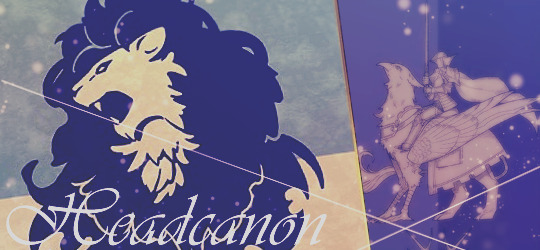
IV. Heraldry
Heraldry is as much an artform as it is a nom de guerre for a knight when on the battlefield, indicating the identity and pedigree of one's lineage and the pride they carry as they gallop across war in the name of honor and glory. Better understood as one's coat of arms, the science that goes into heraldry is surprisingly in-depth and the symbolism that is carried through with each element lends itself to describing the character and values an individual is expected to uphold. Heraldry is popularly understood in the context of Arthuriana, in the Middle Ages, where knighthood and chivalry was best understood and conveyed in its most accessible variety. Conveniently, Faerghus is situated with countless references to this time period and region. The symbolism of the coat of arms Faerghus and the Blue Lions carry for their banners establishes a constant theme expressed not only by those who fight in its name but for Dimitri himself.
When looking at the coat of arms for Faerghus, it's azure, chevalier on gryphon statant argent, Crest of Blaiddyd argent, pallets argent; the breakdown will be organized following the elements as listed.
Firstly, the color azure. Azure is actually a fairly uncommon tincture used in heraldry, but it can be seen in the coats of arms for King Arthur and Sir Kay. The tincture azure chiefly represents chastity, strength, sincerity, loyalty, and piety ( in terms of planetary governance, azure is associated with Jupiter ). As one might assume, these ideals hold steadfast to those that are admired by the knights of Faerghus, known to uphold chivalry and the kingdom itself having an intimate connection to the church ever since it offered authority to Lugh as the first king of the newly-established Holy Kingdom of Faerghus, then permitted to proselytize throughout the area to spread the influence of the Church of Seiros. Dimitri himself is someone who values sincerity and loyalty, preferring to trust others before casting distrust. While he hides more than he leads on, Dimitri is a man of genuine intent, wearing his heart on his sleeve and incapable of hiding the kindness instilled within him for too long; that being said, he is also a remarkably strong individual in all but his willpower, carrying an imposing figure five years later and being a king that inspires others to follow him even if they believe his kindness to be a place of weakness, admitting its strengths and appealing optimism. Azure’s governance over the planet Jupiter suggests also a theme of kingship, hence why King Arthur’s most well-known coat of arms displays an azure field; in a way, its presence then lends itself to Dimitri’s path in claiming his right to kingship.
The image of a mounted creature is another uncommon sight, rarer than the azure tincture, and depicts a knight riding a griffin. Perhaps the existence of the griffin is a nod to the former union of the Adrestian empire and the newly-formed Kingdom of Faerghus, as the griffin is a mythical creature with parts bird and parts lion. As a result, it is twofold symbol of bravery and strength, of courage and boldness, military leadership, intelligence, and vigilance. The color argent, or silver/white, represents peace, sincerity, innocence, purity, and the Moon. While the moon itself carries far too many meanings and warrants its own meta due to Dimitri being the Azure Moon, the other values represent the very ideals that knighthood is ideally meant to protect as per chivalric code ( thou shalt respect all weaknesses, and shalt constitute thyself the defender of them; thou shalt be generous, and give largesse to everyone; thou shalt be everywhere and always the champion of the Right and the Good against Injustice and Evil. ). As one who upholds much of these values, Dimitri is someone who is naturally predisposed to want to protect the weak, going so far as to sully his own hands and become unclean himself so that others may live on in peace.
I will venture into the Crest of Blaiddyd another time as it deserves its own meta, but the pallets ( the two lines of argent ) represent military strength and fortitude. This imagery, coupled with the griffin highlights the utter ruthlessness and value of strength in Faerghus, where children are taught to fight before learning to write their own name. Dimitri himself embodies this concept in spades due to his unusual gift of strength and his comfort zone being in the battlefield, wherein he is able to cast aside his limiters and permit his viciousness to unveil itself before his foes. But to say that this is all there is to this concept would do it an injustice as Dimitri is also an excellent general who values the lives of those around him ( outside of his dark period ), caring for the lives and lamenting the deaths of his soldiers and comrades as if he lost another member of his kin. That being said, he is an enduring individual, who contradicts his care for others by discarding care for himself, wielding valor in his right hand and daring all dangers, even death itself if it means delivering peace. For five years Dimitri wandered alone and survived alone; his strength is just shy of being inhuman.
We finally find ourselves with the coat of arms for the Blue Lions. Due to the design for the Blue Lions being irregular and not easily applicable to standard rules for heraldry, certain liberties will be taken.
The coat of arms for the Blue Lions is party per fess argent and azure, lion's face affronté azure. As expressed earlier in this meta, azure and argent represent ideals of sincerity, loyalty, piety, innocence, peace, etc. In stark contrast, however, bleu celeste is a considerably newer ticture and therefore does not hold similar significance compared to the aforementioned; therefore, one can inject meaning in this featureless tincture as something apropos for the Blue Lions, being a class in the Officer’s Academy where students are enrolled to learn about themselves and find their strengths so that they may grow into a brighter tomorrow.
The fess stands for military honor, a readiness for battle in order to stand for the people should danger arise. With the Blue Lions standing as knights-to-be destined to fend their homeland from threatening forces, it stands to reason that they would require the fess as a reminder of their duty to the people, most of all Dimitri whose very nature and aspirations involve helping those who cannot help themselves. For Dimitri, to become a shield for the weak is what a knight of Faerghus ought to aspire, and for as lofty and unrealistic as it may sound—because it is—these are the values that allow him to continue pursuing his campaign to bring the Adrestian Empire to its knees. He believes that if his gifted strength and talents for bloodshed only have their place on the battlefield, they might as well be utilized towards a just cause, lest he abuse his station and become the very ideal he wished to eliminate.
Finally we arrive at the lion. The lion alone is another topic deserving of a meta. Its azure hue strengthens the ideals of the Faeghus coat of arms for a new generation to uphold. While the breadth of animals used in heraldry is extensive, none capture as strong of a presence as the lion. Unlike the common lion rampant, the Blue Lions depict a lion’s face affronté, yet the symbolic importance of it remains the same: courage, nobility, royalty, strength, stateliness and valour. Lions are a common symbol for royalty to use in their coat of arms ( e.g. King John, Richard the Lionheart, etc. ) and Dimitri is no exception to this, having lion imagery employed in his personal battalions as well as his own demeanor as Lugh reincarnated. In addition to the aforementioned qualities, the lion is seen as a symbol of chivalry, contrasting the eagle which is used as a symbol of imperialism, the dichotomy of which does not go ignored with the dynamic between the Holy Kingdom and the Empire.
The coat of arms for the Holy Kingdom and Blue Lions houses within it a testament to its history, the values it still fights to uphold since the days of Lugh during the War of the Eagle and Lion, and the hope of a future that continues to maintain these lofty traditions for the good of all.
#◟♘ *:・❛ headcanon. there is a devil housed within me: o father; o mother; is this the monster you wished for me to become?◝#(( wow I don't shut up about heraldry ))#(( it's also been a hot minute since I needed a read more for smth sldkfj ))#(( also I use Lugh instead of Loog bc I'm tired ))#(( anyways you can rip the Middle Ages and Arthuriana from my cold dead hands ))
3 notes
·
View notes
Text
Dream Environment
Before diving into the importance of certain figures/symbols, it's essential to note the setting in which the dream takes place. Some dreams are more powerful than others, and examining the dreamscape can help us determine this.
🌙 does your dream resemble real life? Does it take place in your home? Your neighborhood? This dream is asking you to examine your current state, and the symbols that appear here will give you clues as to what needs to change, what you can realize, or what needs to be paid attention to in waking life. Notice the ways the dream has warped your usual surroundings. Put simply, a nightmarish uncomfortable version of a familiar place in a dream means that something is amiss, something demands reconsideration. While a mystical/beautiful warping of reality in the dreamscape may be challenging you to appreciate your life at the moment. A suggestion to connect with your spiritual self. Perhaps even a manifestation of the beauty you are already aware of on your path.
Dreams that take place in areas you knew in the past ask us to consider long standing themes. The dream may ask you to confront life-long anxieties, relationships, and gifts.
🌙 does your dream resemble real life, yet it takes place in areas you are completely unfamiliar with? As in, the dream looks like the planet, our neighborhoods/houses/forests/beaches etc? Sometimes fantastic and exaggerated, these dreams are our emotions manifested. They can take us to some truly beautiful places. In this type of dreamscape, a location represents aspects of the unconscious. For example: A house with many unique rooms often displays the many concepts and feelings that make up our character. A nightmarish location is a manifestation of our fears. You may notice in these types of dreamscapes that your surroundings change unexpectedly around you. Practice taking charge of these changes. ESPECIALLY during nightmares. This dream asks you to analyze yourself.
A location in this emotional landscape may represent a desire within us that we do not have in waking life. Pay attention to feelings of emptiness/isolation during these types of dreams, and observe for symbols as to how you might awknowlege and attain these desires.
🌙 Is your dream bustling with people? Many of whom you do not recognize? These types of dreams usually take place within the emotional landscape, and are typically representative of our feelings related to our place in society. Consider: Are you an active part of the crowd or have you been left behind? Do you feel successful in your waking life? Do you feel lost on your path to achieve your goals? Are you in a position of power? If so, how does your dream illustrate your feelings on being "in charge"? We are social creatures, and all of us are insecure to some degree. For many, this type of dream appears as a school or workplace. These dreams often represent our place within our capitalist society. It's crucial to note that our culture and the acquiring of money is unnatural, and therefore its important not to take any anxiety felt in this type of dream too seriously, as it is not a premonition of failure. It could mean that you need to find a new job, a new perspective, a new approach.
🌙 For those who are heavy dreamers who are spiritually inclined, you may of been able to recognize dreams involving the actual subconscious spirits of other people, usually in a sort of gathering place. You may not even know them in waking life. Each spirit experiences this plane differently, and many won't awknowledge each other. As opposed to the type of dream described above, the people passing around you are not your own subconscious representations of social structures in waking life. They are simply present individuals, experiencing this place in their own way, often minding their own business. That being said, you may find yourself "hanging out" with those you have a psychic connection to, whether they're consciously aware of it or not. All people can enter this spiritual plane and it's a dream that is commonly forgotten. People will express they had a dream they can't remember but "everyone was there". These dreams often feel like a lovely outing. A celebration of life, leaving you with a better understanding of what your spirit needs to thrive. Often this dream will occur under the influence of a waxing moon.
⭐ note that not all figures in dreams that take the form of people you know are the actual spirits of those people. Sometimes, they are spiritual guides trying to reach you in a way you can understand. More often they are extentions of ourselves. Representations of certain ideals or concepts that we might associate with that person. A person who you know that involves themselves in your dream likely did not do so with understood conscious intent, in fact, you may of subconsciously summoned them there! You'll notice that they carry themselves independently within your dreamscape.
if you typically remember your dreams, and you wake up knowing you had dreamt, but cannot remember ANY of it, it's likely that you were present in someone else's dream.
These are just some general examples of common dream environments. Obviously not everything is covered here! I hope this might reach someone whose having trouble interpreting their dreams in the context in which the subconscious mind presents them. If your having a hard time remembering your dreams, keep a dream journal and practice meditation! Our dreams can work as powerful guides and learning to read them can benefit your life in a multitude of ways!
#dream#dream witch#dreams#nightmare#nightmares#witchcraft#witch#witchblr#witches#witchy#witchery#dream interpretation#dream meaning#spirit#spirits#spiritual plane#spirit guide#spiritual guides#spiritual growth#healing#moon#moon phases#moon magic#waxing moon
1 note
·
View note
Text
Maiden, Mother, Crone: “The Battle for Mewni” and the triple goddess -- the agony of birth, the trial of motherhood, and the hard price of power.
Ah, at last!
Here we are at the other side of Star vs. the Forces of Evil's "The Battle for Mewni." Was it everything I thought it would be? Yes, I think so; it was even more than that. There's a lot to unpack in these episodes, and I plan to take my time in doing so. (But not too much time.)
This post will discuss Star, Moon, and Eclipsa and the connection they all have to a mythological concept called the triple goddess, with each of these characters representing one of the three archetypical aspects of the goddess -- Maiden, Mother, Crone. I will discuss the nature of each aspect, while touching upon the comparisons and contrasts we are meant to perceive by way of these analogues, and I will explain what I think the implications are of the triple goddess's presence.
This will be a long post.
First, Some Acknowledgements
This post owes a nod to my good friend @malthuswibble, whose post on reddit regarding possible symbolism and mythology behind the cauldron is probably more precise and insightful than anything I will ever post, and to reddit user celestialwolf157, who wrote an extensive analysis on Queen Moon which illustrates her shortcomings as a leader. My analysis will touch on some of the same ideas from these two essays, and I would strongly encourage you to not only read these posts but follow their writers as well.
Though it might sometimes feel like a solitary activity, critical analysis, whether literary or not, is a community effort. One writes critical analysis so that others will read it and discover something new, and, as a literary critic, one is inspired by both the work in question -- Star vs. the Forces of Evil, in this case -- and by what other people have to say about it -- that is, the Star community and their often-thoughtful observations. Just as I read your posts and take something valuable from them, it is my hope that you will read my posts and find something worthwhile in them for yourself. In this way -- together -- we can create new meaning. Thank you for this opportunity!
With this in mind, allow me to present something which has taken far too long to reach you.
The Triple Goddess
Simply put, the triple goddess is the idea that there is a set of goddesses, each representing three allegedly prototypical aspects of womanhood or three spheres of influence. Whether there is a genuine basis for the triple goddess in historical mythology is something best left to be settled by scholars more talented than I am and is, in fact, irrelevant for the purposes of this discussion; as a literary concept that writers regularly make use of, whether in earnest or in parody, the triple goddess has proven to be useful.
There are, of course, some historical examples of tripartite goddesses -- colloquially called "triple goddesses" -- many of which have made their way into not only modern paganism but also popular fiction:
Greek goddesses (The Fates, the Furies, Hecate)
Norse goddesses (The Norns)
Irish goddesses (The Morrigan)
But I would argue instead that instead of a literal mythological analogue, Star, Moon, and Eclipsa instead fit the syncretic and modern-pagan idea of triple goddess: three women, each one at a different stage of her life. Yet there is some confusion and complexity in their roles, with Eclipsa, whom we know the least about, presenting the greatest uncertainty.
An ordinary reading of the triple goddess in "The Battle for Mewni" might place the characters thus:
Star, being a young woman, is the Maiden, who symbolizes the beginning as well as innocence, potential, and youth.
Moon, being Star's mother and motherly in general, is the Mother, who symbolizes the middle as well as experience, fertility, and vitality.
Eclipsa, given her advanced age and (forbidden) knowledge, is the Crone, who symbolizes the end as well as wisdom, exhaustion, and death.
And that's a fine reading that neatly ties everything together. However, I believe that, like so many other things in Star vs. the Forces of Evil, this seemingly-obvious established order has actually been turned on its head; there is more going on under the surface than there appears to be at first glance. To discover that, we can make use of the concept of the triple goddess to examine the ways in which these three characters don't fit their molds -- and, from that comparison, discern what the series is trying to tell us.
Let's start with Star.
The Agony of Birth
A caveat before we begin: I am not a woman; I am a man, and to be quite frank, I don't feel that I am qualified in the slightest to write about the pain of childbirth (or indeed any of the experiences of motherhood). When I write about these things, I must go by what the women in my life have told me, or what I have seen myself or read from others. With that admission -- because it seems clear to me that "The Battle for Mewni," at least in part, is about childbirth and the challenge of raising children, in addition to the difficulties women face as they transition into new stages of life -- I will nevertheless endeavor to navigate this maze as best I can.
The Maiden, as I mentioned earlier, symbolizes the beginning of a woman's life. And while Star certainly is still youthful, energetic, and reckless, the princess has undoubtedly tempered herself from the marauding ball of energy she was in "Star Comes to Earth," the very first episode of the series, has she not? She has matured and will continue to mature further.
Ultimately, I think, Star vs. the Forces of Evil is about Star becoming a woman, if not a queen. Like the magical girl shows that it was inspired by, Star vs. the Forces of Evil uses the magical girl transformation -- bound together with the literal butterfly's metamorphosis, a conceit unique to the series -- as a metaphor for the transition from girlhood to womanhood. "The Battle for Mewni" has, in addition to clear examples of her change, potent symbolism underscoring the nature of the transition.
In "Return to Mewni," we have clear evidence that Star is separating from her parents and becoming her own woman:

Star does things differently from Moon at every turn, often to the latter's chagrin.
This theme of children struggling against their parents is further reinforced in "Puddle Defender" when both Moon and Buff Frog prevent Star from sneaking off on her own; Star does so anyway.

Star knew that her mother was too weak, both magically and in terms of will, to do what was necessary, so she decided to bear the burden herself -- to sacrifice herself in order to restore magic.
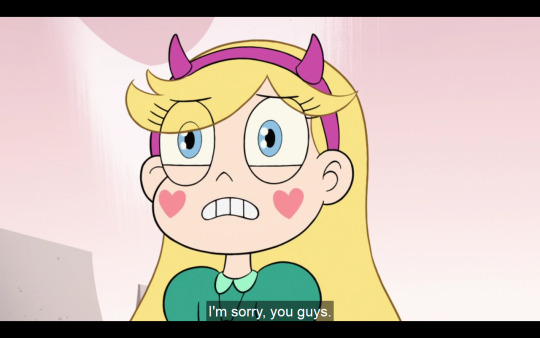

That is an absurdly heavy burden for a child to bear. That Star determines -- on her own -- that it is a burden she alone must bear is a clear indication of her maturity, the contrast between Star and her mother made all the more stark by Star's choice.
It is in this otherworldly realm that the episode "Toffee" presents a startling and extraordinarily powerful metaphor:

The cauldron is an ancient symbol of femininity; more specifically, it is a symbol of the womb. (You may recall me briefly touching upon this topic in my post about the Holy Grail in Star vs. the Forces of Evil.)
That Star draws from it an egg -- both a figurative egg and literal egg with a literal fetus inside of it, as she is screaming in agony the entire time -- is simply astonishing to me. This entire scene is an incredible metaphor for childbirth.

I once said that the writers of Star vs. the Forces of Evil have a stunning command of visual metaphor. This moment with Star and the cauldron far surpasses anything yet seen in the show. It is, far and away, one of the most potent pieces of figurative storytelling in modern animation.
Too, this scene hearkens back to something @kyotosummer wrote in her (not-enough-attended-to) posts on connections between Sailor Moon and Star vs. the Forces of Evil: the Galaxy Cauldron.
Star reaching into the cauldron makes the connection I was missing between universe, cauldron, and egg. (I believe it's significant, too, that the egg is made from pudding -- but that's a topic I shall cover in another post.)
It's this scene, therefore, that firmly establishes Star not as a mere Maiden but as a young girl on the cusp of womanhood, one who is cognizant of her potential for bringing new life into the world and of the sacrifice that womanhood often requires.
Indeed, I answered a question not too long ago in which I remarked on the significance of the term "light-bearer": for, as we can clearly see from both the opening of the show, some of the episode posters, and the closing credits, Star is intended to be the single light remaining in a world of darkness: the light-bearer, the one who carries the light.



Crucially, bear can also mean "give birth to" -- and the cauldron scene makes it clear that it's both of these senses which are meant. Star gives birth to and carries the light.
I wonder: do young women, watching "The Battle of Mewni" -- do these scenes speak to them and make them more aware of the transformations that lie ahead for them, just as Star undergoes transformations in her own life? Does this show help them realize the capacity of birthing not only literal new life but also entire fictional universes -- universes that feel just as palpably real as one's own heartbeat?
After all, isn't Star herself the product of someone who gave birth to her in our own world -- that is, Daron Nefcy?
I wonder.
Yet even as Star wrestles with the fact that she is transitioning into a woman, her own mother, Queen Moon, has separate struggles: the challenges of being a queen, of being a wife, and of being a mother. In all three areas, she unfortunately comes up short. In this next section, I will discuss how Queen Moon falls short of the archetype of the Mother.
The Trial of Motherhood
In "Return to Mewni" and "Puddle Defender," we can plainly see that Moon's actions are informed by one single goal: keeping her daughter safe. But despite the fact that she obviously cares for Star, Moon clearly does not understand her daughter at all:
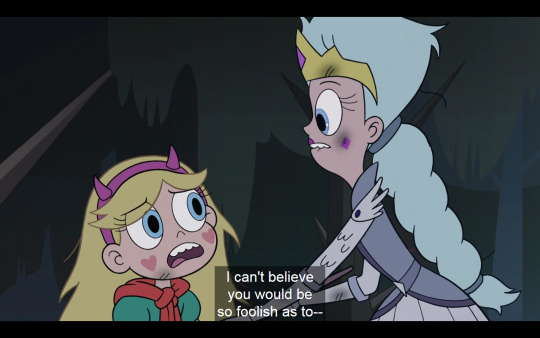
Star lacks Moon's cautiousness, and Moon is unwilling to accept the reality that her daughter is a different person from her -- something she remains blind to until the very end. Only Glossaryck understands Star's true nature (and indeed prepares accordingly). This comes up prior to "The Battle for Mewni"; recall Glossaryck's conversation with Moon in "Page Turner":
Moon: Why all the riddles? You were always very direct when you were training me.
Glossaryck: (sighs) Well, it finally happened. Every queen wants to tell me how to do my job. "My training was different." You know what Glossaryck hears? "Me, me, me, me, me! I'm going to pull my mentor away from his job so I can be in the spotlight again." The only Butterfly to leave me be was your great-great-great-great-great-great-great-grandmother, Eclipsa, the Queen of Darkness -- whose chapter, coincidentally, you left Star alone with when you pulled me into this wonderland of red tape.
[...]
Glossaryck: You all did this because you don't trust me, and what's worse, you don't trust Star. My queen. My queen, your training was different because Star is different. You have to have faith in her to make choices that are best for her. And my job is to train Star to be a queen.

But by the time "The Battle for Mewni" comes around, it seems Moon has forgotten Glossaryck's words to her; instead of helping Star, she's still trying to control what Star says, thinks, and does. In the earlier example in "Return to Mewni," Star's instincts to fight Ludo's rats in combat could have worked to the pair's favor if, instead of focusing on scolding Star, Moon had joined her in dispensing with the rats. But by turning her attention on Star and what she allegedly did wrong, Moon inadvertently gives the rats the opening they need to sabotage their journey.

Star's impulse to openly challenge her enemies is constantly at war with Moon's drive to preserve the status quo through stealth and subterfuge. Ultimately, Star's philosophy is proven right when she restores magic and defeats Toffee -- something that Moon would never have accomplished simply by hiding and waiting.
And there's the other matter: Moon simply isn't strong enough. In "Baby," we learn that Star's power far exceeds her mother’s -- and in fact potentially rivals Queen Eclipsa's:

Star herself even points out Moon's weakness during their heated argument in "Return to Mewni":

By the end of "Toffee," the titular villain has laid bare the true extent of Moon's desperation and exhaustion: she is willing to sacrifice even the one thing that defined her as queen -- Toffee's finger -- in order to get her daughter back, and is utterly helpless when Toffee betrays her.

The crushing despair of this final twist of the knife is what causes Moon to finally break down.

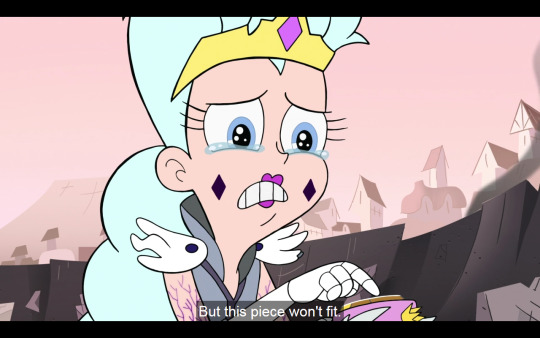
I think we have not yet seen the full extent of the torture that Moon will be put through (but this is a pet theory of mine that I've been working on which I will write more in-depth about another day). Suffice it to say that, at the end of "The Battle for Mewni," Moon has lost her validity as a queen, as a wife, and as a parent. She is utterly exhausted and powerless in the face of evil to protect those she loves, which forces her daughter to sacrifice her own life in order to restore magic. It's truly every parent's worst nightmare, and it's pretty grim stuff.
In this way, then -- referring back to the triple goddess -- Moon more resembles the Crone than the Mother: she is "old and gray," exhausted and weak. Worse still, it's not clear by the end whether or not she is any wiser for the experience. If anything, she seems brittle -- almost unhinged, really -- as evinced by the nervous little laugh she gives at the end of "Toffee":

Moon does the best she can using the tools at her disposal, but I think the sad truth is that, due to her mother's early death and the pressures put upon her as queen, she never got a chance to grow up and become a confident, full-fledged woman -- very much unlike Eclipsa, who exudes confidence and independence, and whose mother was also allegedly killed at a young age.
Interestingly, while previously Star has been compared to Eclipsa (see "Baby" again), "The Battle for Mewni" compares Moon to Eclipsa, and it's this comparison which intrigues me, since we otherwise know so little about the Queen of Darkness; perhaps the comparison hints at something to come.
The Hard Price of Power
Before we discuss Eclipsa's comparison of herself to Moon, we should establish what we know about Eclipsa.
We have heard bits and pieces of legends about her throughout the series, starting as far back as "Into the Wand" in the second season, but we still know very little actual fact about her life. Her tapestry claims that she abandoned her Mewman husband for a monster lover, but "Moon the Undaunted" reveals that the tapestries are little more than creative retellings of history (i.e., propaganda -- now there's a timely subject), so it's unclear just how true that is.
Eclipsa also reveals some things to Moon in "Moon the Undaunted," but I think it would be prudent to be skeptical of these claims until we actually see them for ourselves. The only factual things that we know is that Eclipsa is a powerful spellcaster who wrote a chapter in the Book of Spells which is kept under lock and key; that Rhombulus freezes Eclipsa in crystal because, so he claims, she is evil; and that Eclipsa was originally born hundreds of years ago and is a distant ancestor to Star and Moon.
From her sinister appearance, the stories about her, and the fact that she is family, I would say there is more than a little bit of Morgan le Fay in Eclipsa -- a nod to the Arthurian legends that seem to be a running thread throughout Star vs. the Forces of Evil.
It's clear, also, from "Into the Wand" and from Glossaryck's conversation with Moon in "Page Turner" (mentioned in the previous section) that Eclipsa values her independence and freedom. Yet those boons and the power needed to enforce them -- interpreted (rightly or wrongly) by Rhombulus as evil -- come with a high price; I can think of nothing worse for someone so independent-minded than being imprisoned alone and totally constricted for literally hundreds of years.
Moon, too, pays a high price for the power to defeat Toffee by making a dangerous agreement with Eclipsa; she is aware of the risks of freeing Eclipsa and so intentionally misses her shot with the Darkest Spell in order to merely destroy Toffee's credibility (and thus rout his army). Yet this power fails to truly defeat Toffee, allowing him to return and exact revenge on her. By the end of "The Battle of Mewni," she is utterly powerless, and it seems inevitable that Eclipsa will be freed.
It's hard for me not to feel pity for Moon; like Star, she, too, has an enormous burden foisted upon her at a young age. She is scared and desperate at the lowest point of her life in the wake of her mother's slaying. With nowhere else to turn, she approaches Eclipsa for help.

Interestingly, upon speaking with Moon, Eclipsa almost immediately compares the two of them:
Eclipsa: (tearing up) I lost my mother, too, when I was not much older than you.

What are we to make of this comparison? I am uncertain. We know so little about Eclipsa that it's hard for me to say what role she will come to play. Can we even trust what Eclipsa says? Does she seem genuine?
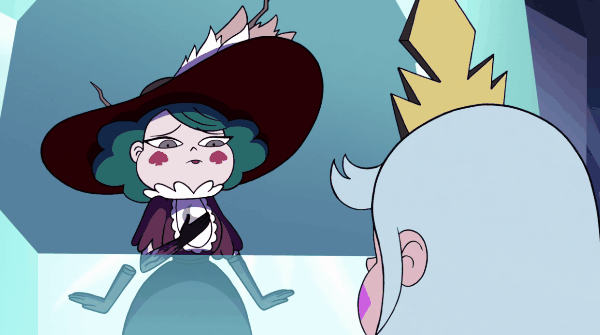
Despite her formidable abilities and her extensive contribution to the Book of Spells, Eclipsa still looks quite young -- nothing like the Crone one might think of when imagining an ancient witch. (For, indeed, Eclipsa is ancient compared to Moon and Star, having been "alive" for over three hundred years.) Certainly, she appears to be younger in appearance than Moon.
I suspect this relative age is the key to understanding Eclipsa's coming role. I have often (half-seriously) called Eclipsa "Evil Mary Poppins," thanks to her umbrella and her garb, but there's a strong possibility that Eclipsa will be a sort of alternate mother for Star -- a replacement for the tired, old Moon who doesn't even really get Star anyway -- that is, someone who understands why Star detests the traditions of Mewni, who sympathizes with Star's love for Marco, who shows Star another path to becoming queen, one that will no doubt be sorely tempting, as Star herself, like Eclipsa, is fiercely independent.
It's not hard to see how this scenario might play out.
In the coming season, Star herself will likely face the same quandary that Moon does in "The Battle for Mewni": what cost will Star be willing to pay for the power to save her kingdom? Her family? Her love? Would she sacrifice all that for freedom? We shall no doubt see.
A Useful Reading?
Earlier, I introduced a simple reading of the triple goddess in "The Battle for Mewni": Star as the Maiden, Moon as the Mother, and Eclipsa as the Crone. The series definitely wants us to recognize the relationships that these three women have between each other, as well as what it means to be a daughter, a mother, and a queen. Yet I think the series wants us to understand that life is a process of change, continual change, and that none of these women are confined to (or defined by) any of these roles. They are in flux: Star is discovering her potential for new life; Moon, alas, is in decline, both physically and mentally; and Eclipsa will be once more free again to exert her influence.
While the triple goddess unfairly limits women to three particular roles, I think it’s still useful as a concept for thinking about depictions of womanhood in fiction (and whether they are fair or unfair) -- and, in this particular case, is useful for examining the extent to which the lives of Mewni will be unexpectedly thrown into confusion by Eclipsa's release. There is disorder everywhere -- that will be particularly evident once two queens of Mewni concurrently walk the realm, competing with one another. That theme of disorder, I predict, will grow and grow as the season progresses. Star vs. the Forces of Evil will evoke a deep sense of unease -- even dread.
It is therefore fitting that Star, who herself embodies the messy disorganization of ordinary life and is practically the champion of chaos, will be the one who must put things to rights. It will be another chapter in her story of development.
Future Writing
I hope you enjoyed reading this analysis of "The Battle for Mewni." It's been a long time coming. The next analysis and theory posts will not take nearly as long (let us hope). I want to talk a little bit about what's going to come next. I have a lot to cover, and I'd like to write it all before the new episodes come out in November. Here's a rough order of the posts to come:
Vaylon’s Crazy Theory on Pony Head.
Vaylon’s Crazy Theory on Queen Moon.
Unsolved mysteries of Star vs. the Forces of Evil.
A Double Take on “Pixtopia,” loneliness, and wabi-sabi.
A Double Take on "Fetch" and mistaken identity.
More analysis about "The Battle for Mewni."
Glossaryck's true nature and goals.
Star's facility for lyric composition and its relation to her imaginative spellcasting.
The Holy Grail theory, revisited.
How much influence does Revolutionary Girl Utena have in Star vs. the Forces of Evil?
And, of course -- because this is a blog about animation in general -- I'd like to write a bit about some unrelated animated series, including The Real Ghostbusters, BoJack Horseman, and Neon Genesis Evangelion.
As you can see, I have my work cut out for me. Feel free to send me any questions you may have or message me with your preferences as to my topics or with suggestions for things you'd like to see. Thank you for reading! See you again soon.
#star vs the forces of evil#the battle for mewni#analysis#star butterfly#moon butterfly#eclipsa#triple goddess
34 notes
·
View notes
Text
Time symbolism
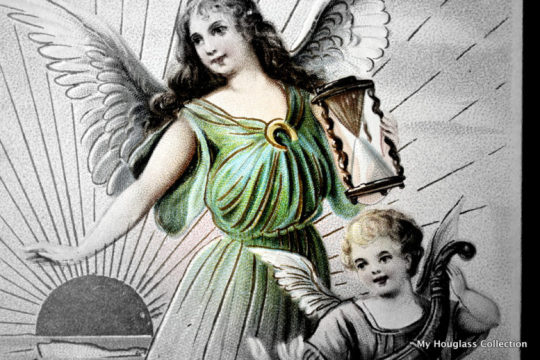
Time symbolism
What is the symbol of time?
Symbol of Time is The Hourglass
Symbol of Time, Personification of Time - Father Time
Time symbolism - What is the symbol of time? My Hourglass Collection - Time and Hourglass History and Symbolism. Welcome to MHC Virtual Museum!
See also Time synonyms, Time Philosophy and The Full History of Time

Marilyn Monroe Hourglass Figure paper-time
Any Research is Symbolism
Time Symbolism, or time semiotics as it’s known in technical circles, plays such a large part in human communication because people are constantly looking for deeper meaning.
Whether it’s in the stars, drawn on a cave wall or in the newest visual content, we add such meaning to our communication through the use and interpretation of signs.
The multiplication sign, also known as the times sign or the dimension sign, is the symbol X
The multiplication sign (×), often attributed to William Oughtred (who first used it in an appendix to the 1618 edition of John Napier's Mirifici Logarithmorum Canonis Descriptio), apparently had been in occasional use since the mid 16th century
SYMBOLIC TIME is understood to be the temporal form that organizes the symbols of a religious system into an order of periodicity.
The analysis of symbolic time extends the understanding of religion as a symbolic system, so that the major functions of time within the system may be taken into account:
the time intrinsic to the formation of religious symbols and to the ritual performance (i.e., the time that is internal to the sacred event)the connection that symbolic time has with the history and dynamic of a religious social bond, andthe time that is specific to the intentional life of the individual.
Intentional Character of Symbolic Time
Symbolic periodicity encompasses, in its temporal structure, both change and duration, implying a sheer sequence of symbolic events and also a type of internal correlation of events and symbols that reflects the functional unity of the interval of time and the continuity of its structure.
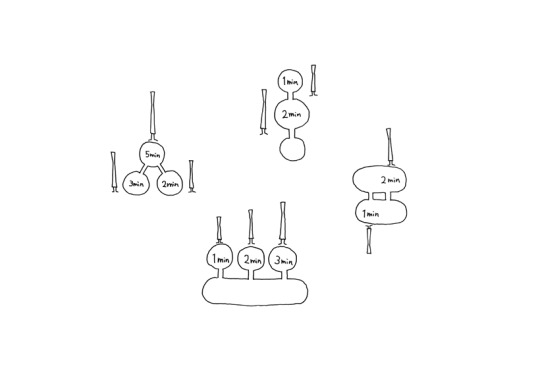
variations of time
Time symbolism
Time in physics. Time symbol science.
From: Time in physics and time Science?
Time in physics is defined by its measurement: time is what a clock reads.
In classical, non-relativistic physics it is a scalar quantity and, like length, mass, and charge, is usually described as a fundamental quantity. Time can be combined mathematically with other physical quantities to derive other concepts such as motion, kinetic energy and time-dependent fields.
Time constant In physics and engineering, the time constant, usually denoted by the Greek letter τ (tau), is the parameter characterizing the response to a step input of a first-order, linear time-invariant (LTI) system. The time constant is the main characteristic unit of a first-order LTI system.
Physically, the time constant represents the elapsed time required for the system response to decay to zero if the system had continued to decay at the initial rate, because of the progressive change in the rate of decay the response will have actually decreased in value to
in this time (say from a step decrease). In an increasing system, the time constant is the time for the system's step response to reach
of its final (asymptotic) value(say from a step increase). In radioactive decay the time constant is called the decay constant (λ), and it represents both the mean lifetime of a decaying system (such as an atom) before it decays, or the time it takes for all but 36.8% of the atoms to decay. For this reason, the time constant is longer than the half-life, which is the time for only 50% of the atoms to decay. More about Time constant on Wiki. See also:
Time in physics and time Science?
MHC YouTube channel
Symbolism of Melencolia I by Albrecht Dürer
Create Ma, Upgrade Ma
A New Theory On Time
Frank LaCavera hourglass collections
Time perception or sense of time
Time and Text
Lunar calendar and moon’s phases now
Time Travel
Timekeeping is a complex of technological and scientific issues, and part of the foundation of recordkeeping.
In addition to time-related themes, the hourglass is synonymous with cycles and balance
Energy passes between the two sides of the hourglass just as the energies of our world are contained by the atmosphere and crust. All of the natural processes and cycles occur there (not including what happens in space, of course), which gives us a greater sense of relation with our environment. This also forces us to realize our roles in the natural cycles happening around us.
Hourglass symbolism Time symbolism
Ancient alchemists recognized the concept of balance in the hourglass. Its very shape is made up of triangles balancing each other out. Alchemists interpreted these triangles as representing two aspects of nature: the upper being the sky and the lower equating with Earth.
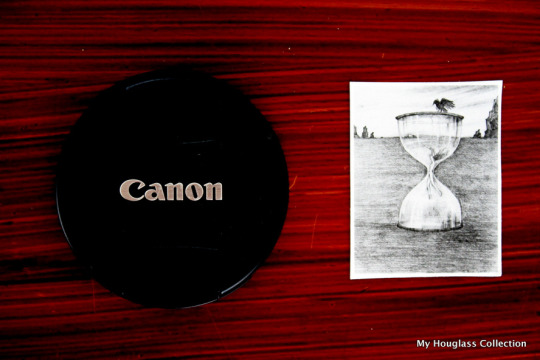
Hourglass 304, Magic Card
The meanings of symbols
The symbols carved in stone provide some of the best examples of folk art in Dumfries and Galloway. Richly decorated stones are often very attractive and combine emblems with different meanings. The first being symbols that represent mortality / immortality / biblical references, the second type representing the occupation and status of the people commemorated.
Many headstones include a collection of emblems which may vary in style and sophistication even within the same churchyard.
What is the symbol for time?
More about Symbolism of Melencolia I by Albrecht Dürer
SI Units
The international system (SI) of units, prefixes, and symbols should be used for all physical quantities except that certain special units, which are specified later, may be used in astronomy, without risk of confusion or ambiguity, in order to provide a better representation of the phenomena concerned.
SI units are now used to a varying extent in all countries and disciplines, and this system is taught in almost all schools, colleges and universities. The units of the centimetre-gram-second (CGS) system and other non-SI units, which will be unfamiliar to most young scientists, should not be used even though they may be considered to have some advantages over SI units by some astronomers.
General information about SI units can be found in the publications of national standards organisations and in many textbooks and handbooks.
time - second
TIME SYMBOLISM
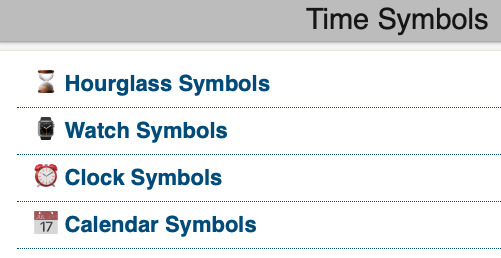
Symbols of Time
Symbolic Representation of time
Date and time symbols
Date and time symbols are divided into locales, each of which is detailed in the following sections.
Locale Group A
Locales: af-za, en, en-au, en-be, en-bw, en-ca, en-gb, en-hk, en-ie, en-in, en-mt, en-nz, en-ph, en-sg, en-us, en-vi, en-za, fo-fo, gl-es, id, id-id, is, is-is, it, it-ch, it-it, kk-kz, ms, ms-bn, ms-my, nb-no, nl, nl-be, nl-nl, no, no-no, om-et, om-so, pl, pl-pl, pt, pt-br, pt-pt, so-dj, so-et, so-ke, so-so, sv, sv-fi, sv-se, sw-ke, sw-tz
Locale Group B
Locales: be-by, bg-bg, el, el-gr, fi, fi-fi, hr, hr-hr, hu, hu-hu, ja, ja-jp, ko, ko-kr, ro, ro-ro, ru, ru-ua, ru-ru, sh-yu, sk, sk-sk, sl-si, sq-al, sr-sp, th, tr, tr-tr, uk-ua, zh, zh-cn, zh-hk, zh-mo, zh-sg, zh-tw More on IBM website
Father Time Exhibition
Personification of Time
Dynamic Vision Board Meta Model by Adam Pierce
MHC virtual museum
FATHER
TIME, father time symbol, father time images, old father time, father
time is grim reaper, father time mother nature, father time statue,
father time vintage, baby new year
"Copy and Paste" Time Symbols

"Copy and Paste" Time Symbols
Time symbol is a copy and paste text symbol that can be used in any desktop, web, or mobile applications.
Every time symbol:
⌛ Hourglass done Symbol
⏳ Hourglass not done Symbol
⌚ Watch Symbol
⏰ alarm clock Symbol
🕛 twelve o’clock Symbol
🕚 eleven o’clock Symbol
HTML Hex ⌛
Day & Night Symbols
Through the ages, celestial happenings and natural phenomenon have been used to symbolize important thoughts and concepts. The cyclical occurrence of day and night was one of the things occurring in nature that was believed to hold specific meaning. While different civilizations had different day & night symbols to record the passage of time, Day and Night, by themselves, were thought to have strong symbolic meanings.
The recurring phenomenon of day and night was always considered very meaningful as it was believed that the survival of human species depended majorly on synchronizing the bodily and mental functions with the peculiar demands of day & night.
The Day and the Night seem to present two entirely different worlds. Day and night changes even seem to have biological effects on mankind. The creatures that are aggressive, alert and seeking in the day become quiet and inactive at night. The dramatic contrast presented by Day and Night is equated with the disparity between life and death, light and darkness, consciousness and unconsciousness.
Day and Night symbolize, respectively, the birth of the Sun and its death. With the rising Sun, the Day is considered representative of new life, and fresh beginnings, possibilities, hopes, and opportunities. It also symbolizes the active, masculine principle and the rise of consciousness.
A lunar calendar is a calendar based upon the monthly cycles of the Moon’s phases (synodic months), in contrast to solar calendars, whose annual cycles are based only directly upon the solar year.
Lunar calendar and Moon’s phases
Lunar calendar, any dating system based on a year consisting of synodic months
The Sumerians were probably the first to develop a calendar based entirely on the recurrence of lunar phases. Each Sumero-Babylonian month began on the first day of visibility of the new Moon.

Symbol of Time and Life - Death of Time
Time symbolism
Symbols of Life
Ankh has a cross shape but with an oval loop in place of an upper bar. The origins of the symbol are not known, although many hypotheses have been proposed. It was used in writing as a triliteral sign, representing a sequence of three consonants, Ꜥ-n-ḫ.
This sequence was found in several Egyptian words, including the words meaning "mirror", "floral bouquet", and "life". In art the symbol often appeared as a physical object representing either life or substances such as air or water that are related to it. It was especially commonly held in the hands of deities, or being given by them to the pharaoh, to represent their power to sustain life and to revive human souls in the afterlife.
One of the most common decorative motifs in ancient Egypt and was adopted by neighbouring cultures as an artistic motif. Since the late 20th century, in the Western world, the symbol has come to be used decoratively, as a symbol of African cultural identity, Neopagan belief systems, and the Goth subculture.
Symbol of Time - The Hourglass
Time is Life and Death

What is it Time of Life?
The ankh is an ancient Egyptian hieroglyphic symbol that was most commonly used in writing and in art to represent the word for "life" and a symbol of Life.
Its use continued through the Coptic Egyptians who adapted it as the crux ansata, a variant form of the Christian cross.
Symbols of Death
Symbols of Death and Time (Western)
Medieval and Renaissance art made use of a number of emblems to symbolize death and mortality. Although a central theme of Christianity for hundreds of years the was triumph over death, the onset of the black plague altered public perception, and the emphasis was placed on the triumph of death over life and the necessity of repentance.
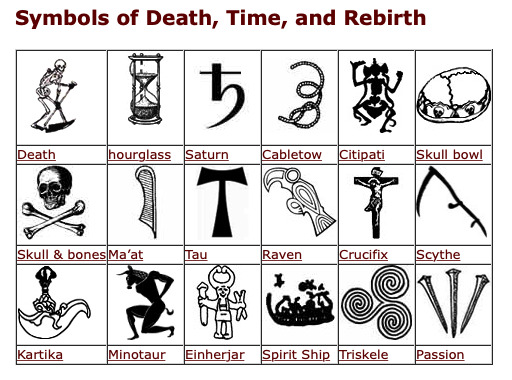
Symbols of Death, Time and Rebirth
Symbols of resurrection common in Christian art became less popular as reminders of the impermanence of life and the punishments of hell became ubiquitous.
The most common symbols of mortality were the grim reaper and his scythe, the death’s head, and the hourglass, all appropriated from icons of Greek and Roman Paganism.
Slogans such as “remember death” and “all is vanity” were omnipresent- death was around the corner, and one had better repent if one was to avoid an eternity of damnation. The source of these macabre symbols was, ironically, the paganism that Christianity had supposedly replaced.
In ancient times, the emblem of the God Saturn (Chronos to the Greeks) was the scythe, which represented the nature of the cycles of time. The scythe symbolized not only impermanence (all things living will be cut down), but the nature of the life cycle- plants must die to feed animals, and the tool of the harvest is depicts the necessity of death for the renewal of life. Thus, death was depicted as a natural part of the passage of time. The image of Chronos devouring his children seems macabre, but illustrates that the the Greeks believed the passage of time is so inevitable that even the gods were consumed by it.

Hourglass = Rebel for Life!
The hourglass is another emblem of time (see Hourglass Symbolism), although hidden within is the promise of life- because the hourglass is reversible, it held within a promise of resurrection, a symbolism not lost on everyone- all of these emblems later became symbols of resurrection to Freemasons and Rosicrucians who grasped their true ancient meanings.
The skull was a frequent companion to ascetic desert saints in numerous Christian artworks, and was often paired with the book, a symbol of studiousness. In this manifestation, the death’s head was less ominous, and symbolized the rejection of the impermanent material world for the life of the spirit. Mary Magdalene is probably the best known example of these two emblems in art.
*Some scholars theorize that the appropriation of ancient symbolism was a subconscious (or even deliberate) attempt to appease the old gods.
In later times, death was depicted as a process of the alchemical arts. Common alchemical emblems included the crow, the skull, and the tomb as symbols of the necessary death of the ego/personality.
Emblems of death are also prevalent in Masonic art and symbolism. Contemplation of mortality is a frequent theme in Masonic ritual and practice (see Masonic Hourglass)
Time symbolism
Día de los Muertos
The Day of the Dead is celebrated annually in Mexico on November 1st, coinciding with the Catholic observation of All Saint’s Day.
The Day of the Dead is a uniquely Mexican celebration, a cultural festival resembling Halloween in many ways, but with more cultural and spiritual meaning.
The holiday combines elements of Catholicism with ancient Aztec symbolism, and honors the spirits of departed ancestors and loved ones who are believed to return to earth to join in the celebrations.

Hourglass and Death on St Thomas' Church
Mortality Symbols
Skulls, death heads, they are often shown in profile and frequently shown with bones.
Bones, shown crossed they also appear in a variety of combinations.
Skeleton, lying down they feature varying anatomical details.
Hourglass, lying on their sides or with wings.
Coffin appearing with other symbols.
Sexton’s toolsusually a pick and spade often crossed.
Corpse and deathbed. Dead humans are rarely depicted in coffins but deathbed scenes are more common.
Ribbon. Sometimes the symbols are tied together with a ribbon.
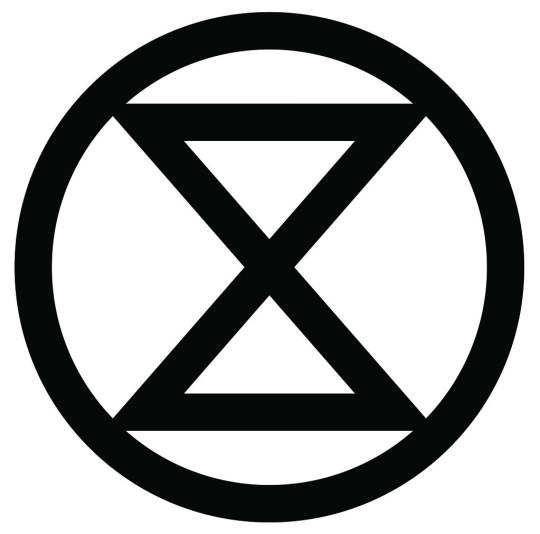
The symbol of Time above represents extinction. The circle signifies the planet, while the hourglass inside serves as a warning that time is rapidly running out for many species. The world is currently undergoing a mass extinction event, and this symbol is intended to help raise awareness of the urgent need for change in order to address this crisis. Estimates are that somewhere between 30,000 and 140,000 species are becoming extinct every year in what scientists have named the Holocene, or Sixth Mass Extinction. This ongoing process of destruction is being caused by the impact of human activity. Such a catastrophic loss of biodiversity is highly likely to cause widespread ecosystem collapse and consequently render the planet uninhabitable for humans.
In order to spread the message as widely as possible, please create this symbol in any location you feel able to.
Colors of Death
Black is the color of mourning in many European cultures.
Black clothing is typically worn at funerals to show mourning for the death of the person.
In East Asia, white is similarly associated with mourning; it represented the purity and perfection of the deceased person's spirit.
During the Victorian era, purple and grey were considered to be mourning colors in addition to black. Furthermore, in Revelation 6 in The Bible, Death is one of the four horsemen; and he rides a pale horse
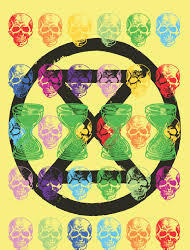
Time against Life
Immortality and biblical
Winged spirits
The most common symbol found, they are usually found on the top of a stone.
Adam and Eve
Rare carvings of Adam and Eve with an apple tree and snake.
Resurrection scenes
Bodies rising to heaven clad only in loin cloths
Open book
Depicting a bible.
Flaming torches
Representing eternal life.
Trades
Hammer men
All trades which require a hammer such as jewlers and cobblers often use the hammer and crown symbol.
Blacksmith
An anvil or farrier with a horseshoe and pincers.
Tailor
Showing pressing iron and shears
Gardener
Rake, hoe and spade
Gamekeeper
Gun, powder flask, fishing rod, game bird and dog.
Merchant
The number 4 is often used to symbolise trading with the four corners of the world and often has crosses added to the arms but sometimes a ship is used to represent overseas trade.
Weaver
Usually depicted with a weavers shuttle.
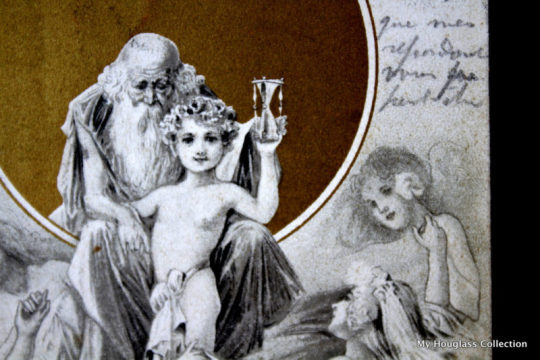
Hourglass 266, post card, Father Time
Heraldry
Heraldic shields show connections to a noble family but are sometimes used as a way of representing status by including trade symbols within a shield.
A Briefer History of Time
Stephen Hawking and Leonard Mladinow
Foreword
THE TITLE OF THIS BOOK DIFFERS by only two letters from that of a book first published in 1988.
A Brief History of Time was on the London Sunday Times best-seller list for 237 weeks and has sold about one copy for every 750 men, women, and children on earth. It was a remarkable success for a book that addressed some of the most difficult issues in modern physics. Yet those difficult issues are also the most exciting, for they address big, basic questions: What do we really know about the universe? How do we know it? Where did the universe come from, and where is it going? Those questions were the essence of A Brief History of Time, and they are also the focus of this book.
In the years since A Brief History of Time was published, feedback has come in from readers of all ages, of all professions, and from all over the world. One repeated request has been for a new version, one that maintains the essence of A Brief History yet explains the most important concepts in a clearer, more leisurely manner. Although one might expect that such a book would be entitled A Less Brief History of Time, it was also clear from the feedback that few readers are seeking a lengthy dissertation befitting a college-level course in cosmology. Thus, the present approach. In writing A Briefer History of Time we have maintained and expanded the essential content of the original book, yet taken care to maintain its length and readability. This is a briefer history indeed, for some of the more technical content has been left out, but we feel we have more than compensated for that by the more probing treatment of the material that is really the heart of the book. More: The Full History of Time

A bright pink rhinoceros emblazoned with Extinction Rebellions signature logo, next to the chancellery at the Reichstag in Berlin - Current Time Symbol
The Symbolism of Time or Kala and Death in Hinduism
The development of Vedic philosophy was centered around this most important feature of our existence. In fact the Vedas are meant to be a solution to this problem. All the ritual and spiritual practices prescribed in the Vedas are meant to resolve this fundamental problem of our existence. Every religion and tradition that originated int he Indian soil subsequently tried to address in their own ways.
The Upanishads, therefore, describe Death as the Lord of creation or creation itself. Our macrocosm (the world), just as our microcosms (bodies) represent Death. The Brihadaranyaka Upanishad (1.2) describes how Death manifested. "In the beginning, there was nothing here whatsoever. Indeed, by Death only all this was enveloped, or by hunger, because hunger is death only. He created the mind thinking, “Let me have a mind.” Then, He performed worship. From that worship, water was produced. He thought, “Truly while I was worshipping, water was produced. That is why water is called Arca. Surely, water comes to him who thus knows why water came to be known as Arca.”
Another name give to Death is Kala or time. Time rules our lives. We depart from here when our time comes. The fate of everything in the mortal world is shaped and controlled by Time only. Hence in Hinduism Time or Kala is equated with death. Time is one of the highest aspects of Manifested Brahman. He manifested before the worlds and beings manifested. Hence he is the foremost among the deities. More about The Symbolism of Time or Kala and Death in Hinduism: https://www.hinduwebsite.com/hinduism/essays/kala-death-symbolism.asp#fn01
time traveling symbolism
See also:
Time symbolism, Time is..., The Full History of Time, Time in physics and time Science, Symbolism of Melencolia I by Albrecht Dürer, Time and Text, DADA Time, Text, Time, MHC, Extinction Rebellion - Time against Life, The End of Time, Hourglass and Death on St Thomas’ Church, Hourglass – symbol of Death, Death does not Exist, Hourglass and Skeleton, “Hourglass and Cards” Exhibition, Father and Mother of Time, Time Hub, Time Philosophy, Time synonyms, Qualia and Time Sense, Time perception and Sense of Time, The Hourglass of Emotions, Time Travel + Time Management = Time Travel Management, The Hourglass, Hourglass History, Hourglass symbolism, Hourglass Figure, Hourglass Tattoo, Symbols of Time, Beauty Bio-Net, Father Time Department, Father Time and Mother Nature, Lunar calendar and Moon’s phases, Time Management, Time Management tools
MHC SM: MHC Flikr, MHC Pinterest, MHC Facebook, MHC Instagram, MHC YouTube, MHC Twitter
The Hourglass Figure:
MHC Exhibitions:
Hourglass Figure Sophia Loren by Adam PierceHourglass Figure Marilyn Monroe
About Hourglass Body or Hourglass Figure
Hourglass body measurements – body shape online calculator
Hourglass Figure Celebrities on MHC
Hourglass Figure, the movie
MHC hourglass figure workout by Marten Sport
Hourglass Figure Department on MHC Virtual Museum
https://en.m.wikipedia.org/wiki/Symbols_of_death
http://symboldictionary.net/?p=2696
https://www.encyclopedia.com/environment/encyclopedias-almanacs-transcripts-and-maps/symbolic-time
ancient-symbols.com/symbols-directory/day_night_symbols.html
https://www.iau.org/publications/proceedings_rules/units/
https://www.extinctionsymbol.info
Lunar calendar, any dating system based on a year consisting of synodic months
A lunar calendar is a calendar based upon the monthly cycles of the Moon’s phases (synodic months), in contrast to solar calendars, whose annual cycles are based only directly upon the solar year.
Symbol of Time - The Hourglass
See also Time Philosophy and The Full History of Time
Read the full article
#alarmclockSymbol#AncientSymbols#ancientsymbolsoftime#AnyResearchisSymbolism#Clocks#Dateandtimesymbols#DeathinHinduism#DíadelosMuertos#Hourglassfact#hourglassfacts#hourglasssymbolism#MeaningofNumbers#multiplicationsign#SandClock#symbolictime#Symbolism#SymbolismofTime#SymbolismofTimeorKala#symbols#SymbolsofDeath#SymbolsofLife#symbolsofwisdom#Synchronicity#Time#Timeconstant#Timeinphysics#TimeResearch#Timesymbolscience#Timesymbolism#timetravelingsymbolism
0 notes
Text
New Review from Jeff York of Creative Screenwriting Magazine: “Parasite” Mines the Power of Symbolism In One of 2019’s Best Films
With Parasite, filmmaker Bong Joon Ho has not only delivered one of 2019’s very best movies, but the symbolism he’s woven throughout the picture is some of the finest placed on film in years. Bong’s visual metaphors are so striking that the movie requires multiple viewings to appreciate all of the subtext going on in it. Bong has infused the story with many cheeky metaphors, starting with the very title itself. (The film is not about a virus, but rather humans leeching off of others.) Some of what Bong and fellow screenwriter Han Jin Won have written is even hilariously self-aware, like when two different characters exclaim, “It’s a metaphor!” Such moments infuse this black comedy with a knowingness that makes the film all the more riveting.
The parasite in question is actually a South Korean family whose existence is sustained by mooching off of others. The Kim family scuttles about in their grungy, below-the-ground apartment, doing as little genuine work as they can to get by. As the story starts, they have lost their access to the free wi-fi emanating from the business above them, and desperately hold their phones up towards the ceiling hoping to regain the signal. It’s a clever introduction to these invaders, a group of human leeches who will soon latch onto human hosts and not let go. (From here on out, major spoilers will be revealed.)
This family of four consists of dad Ki-taek (Kang-ho Song), mom Chung-sook (Hye-jin Jang), twentysomething daughter Ki-jung (So-dam Park), and teen son Ki-woo (Woo-shik Choi). They’re all employed, if you can call it that, as box folders for a local pizzeria. It’s a dismal lot in life but they’ve all gotten used to it. Their cramped dwelling is a dump where the toilet is inexplicably situated on the bathroom countertop, and windows are left open to share in the pesticide spraying of the city streets. The Kim’s hope it will kill those parasites living off of them – the cockroaches and water bugs.
So-dam Park and Woo-sik Choi
In these garish opening moments, Bong introduces his film’s main themes and some of the symbolism at play. That sub-basement apartment represents the Kims’ station in life. They’re outcasts in the caste system of Korea, the lowest of the low, beneath human dignity both literally and figuratively. The metaphors only get stronger from here.
The plot kicks in when Ki-woo’s friend Min announces he’s leaving South Korea to study abroad and hopes his buddy will step in to tutor the rich high school girl he’s fallen for. Her name is Da-hye (Ji-so Jung), and she comes from the wealthy Park family living in the lushest part of the city. To better Ki-woo’s chances of employment, the two boys work up a false back story to boost Kim’s credentials.
With the help of a fake diploma created by Photoshop wiz Ki-jung, Ki-woo impresses the sweet but naïve Mrs. Park (Yeo-jeong Jo) and lands the gig. Not only does Ki-woo become a fixture in the Park’s sprawling, designer home, but he starts a secret physical relationship with his student as well. When he meets the Park’s 8-year-old problem child, Ki-woo cooks up an elaborate lie about a savvy art tutor he knows who could help the boy. Enter Ki-jung, faking extensive credentials as well, with no one the wiser that she’s actually Ki-woo’s sister.
Yeo-jeong Jo
In short order, Ki-jung frames the Park’s chauffeur to get him fired, enabling dad to step in as the new driver. Now, three Kim’s are in the house, and none of the gullible one-percenters ruling the roost are aware that this is not only a family, but a group of con artists. Of course, the final Kim gets hired as the housekeeper/cook when her family carries out a vicious plot to paint the existing loyal housekeeper Moon-Gwang (Jeong-eun Lee) as a tuberculosis-carrying health risk. The Kim’s are ruining lives while bettering their own.
Shrewdly, Bong indicts us all in the audience as Kim’s co-conspirators. Just as Hitchcock guilted moviegoers privy to the crimes of his story’s protagonists, so too does Kim point the finger at all of us watching. We invest in the Kim’s and cheer on their deceptions, and fret whenever their ruse is about to be discovered. The Kim’s, as it turns out, are pretty awful protagonists. They may not deserve their poverty, but they certainly don’t earn the right to become vicious pranksters preying on the wealthy Park couple (Sun-kyun Lee and Yeo-jeong Jo) the way they do. The Parks may be a self-absorbed and gullible lot, but they’re not nearly as egregious as the Kim clan turns out to be.
As the Kim’s take over, Bong turns their actions into metaphor. Their constant climbing up and down the many staircases in the Park home illustrates not only their ruthless ascent but the ease in which they now move back and forth between their stations. Visuals of sliced produce, constantly being served as snacks, represent the literal fruits of the Kim’s nefarious labor. And an unrelenting rainstorm halfway through the film not only washes away their past home but the cleansing waters almost give away the Kim’s con as they metaphorically start to drown in all their lies.
Kang-ho Song
Perhaps the most searing symbolism occurs halfway through the film when a revelation of a secret in the bomb shelter below the basement is revealed. That revelation turns the Park home into a house of horrors for the Kim foursome. Bong even turns the dark doorway to the basement and its shelter into a metaphorical doorway to hell by shooting it as an indeterminate void of blackness. Indeed, that doorway’s darkness really puts the black in this black comedy.
It is also at this point in the story where Bong’s comedy turns into something more akin to the horror genre and it becomes a movie masterpiece as well. The twists become more and more wrenching, and the social commentary, all the more stinging. The Kim’s spin such a deceitful web of lies that they cannot help but get caught in their sticky trap themselves. The film’s cinematography and score start to push towards something that would make Dario Argento jealous, all the while enhancing the living nightmare that the Kim’s find themselves in.
Bong dots his frame, both the foreground and background, with numerous other effective symbols as well. When the Kim’s sneak in and out of rooms, they often scramble on all fours to evenly distribute their weight, suggesting that they are scattering bugs. At one point, the dad must escape exposure by crawling out of a room on his belly, slithering away like a snake. The Park boy’s obsession with dressing up as an American Indian comments on the history of America’s forcefully taking what they wanted from indigenous people, suggesting that the rich and powerful Parks may be similarly inclined. In Bong’s world, no one is innocent, and all their actions connect to socio-economic disparity.
Like Bong’s breakout hit Snowpiercer proved in 2013, the filmmaker is a political one. Yet in Parasite, even though it’s filled with vivid visuals, the director doesn’t let his actors exaggerate. Each of them gives strong yet controlled performances, especially Yeo-jeong Jo who expertly navigates the line between a nervous mother and an entitled madam of the house. Bong also resists painting the Park family as too loathsome. They may be wealthy and entitled, but they are victimized too. And even though the Kim family actions are awful, we can almost admire them for how deftly they lift themselves out of poverty. Almost.
In the end, as in most of the best black comedies, everyone loses a lot, and no one really triumphs. Perhaps the most frightening message of the film is that parents cannot protect their families. Even with all four of the Kim’s in the house together, none is ever safe. Despite all of their money and esteem, the Parks forfeit far more tangible possessions. Perhaps the real parasites at play here are the inevitable realities that eat at humankind via station and ego. In the film’s climax, a lot of violence occurs, and all the bloody gore isn’t much of a metaphor or symbol. It is what it is – death and destruction – and its boldness lies in such absolute clarity.
Watcher the trailer for Parasite below:
from Film Reviews – Creative Screenwriting https://ift.tt/2oZIHpq
via IFTTT
from WordPress https://ift.tt/2oUSE7p
via IFTTT
0 notes